NORTH SAILS BLOG
All
Events
Guides
News
People
Podcast
Sustainability
Tech & Innovation
Travel & Adventure

NORTH SAILS CLIENT Q+A
The North Sails teams around the world have received a bunch of calls and emails recently. A quick Q+A has been put together to help provide you with information on where we are at during this crazy time. We also hope the information below provides you with a realistic outlook that we will eventually get back to some semblance of normal, and find joy in an activity we all love.
Are you still making sails?
Yes. At North Sails, we are taking all the recommended safety precautions to limit the impact of COVID-19 in our production facilities. One advantage of multiple manufacturing facilities globally is that there are several countries that we manufacture in which have had less effect from the crisis to date, while others have had quite a large effect and are currently in shut down.
The current situation is very fluid, and at this time, we are running essential operations at our sites when permitted, that will not compromise the health and safety of our staff and clients. All in all, we are up and running to the very best of our capabilities during this crisis.
Can I still get my sails serviced?
You can coordinate sail drop off and pick up with your local team in any open location. If picking up, please ensure invoices are prepaid and schedule a time with your North sales or service representative.
The phone is your friend. Call and schedule a time for pick up or drop off out in front of the building. We are continuing to arrange sail collections, deliveries and installations with clients by appointment. Please contact us to arrange your’s if your local area allows for this freedom of movement. Again, local regulations are different from place to place thus, so we have no global policy. We are completely reliant on our local teams to monitor and support this process.
When I order new sails, I usually come in to the office and go through all my details with my sales rep…can we do all this over the phone or the internet?
Absolutely. We will continue to provide our customers with world-class customer service via the phone, text messages, or virtual meetings. We can add in one of our designers to a call. The majority of our staff is working remotely and ready to answer your questions and support where possible. Contact details for your local North Sails team can be found on northsails.com.
I have ordered sails. When can I expect delivery?
At this stage, our facilities have been for the most part up and running. That said, we do anticipate some delays as countries, states and regions make moment to moment decisions whether the public must shelter-in-place or if people can continue to safely go to their jobs. There are also plenty of shipping questions at this stage with air and water transportation greatly affected. Currently we are handling all questions concerning shipping on an individual basis and recommend that our sales team stay in touch with their clients often.
So, the short answer to this question? We are trying to stick to our schedule but do anticipate likely unintended scheduling issues going forward and will work with our clients on a case by case basis.
I have sails on order but won’t need them when I thought I would. Will you store my sails until I need them?
Absolutely. We call this “Pay and Hold.” We will store your sails on our shelves for no charge. We simply get final payment upon sail completion as normal, along with a confirmation email from our client that the sail has been sold to them and we are keeping it until needed. We keep your sails on our shelves until the sail is needed and we know where to send it. We hope your sails won’t be on our shelves long and we will all be getting on the water soon!
I am considering a new sail purchase and hope to be able to use my boat and new sails by the middle of the summer. Can you make that delivery date?
At this stage, yes. Depending on the type of boat you have and sail you need, we have delivery slots available in late June, July and August, but be aware we expect quite a backlog of orders to push through so it will be safest to get your order into the system now, rather than relying on a rush request down the road. Again, this will be affected by the country, state, region and local regulations concerning our manufacturing facilities. I can say that when we are able to work within safety guidelines set by local authorities we are doing so at this stage.
How is North Sails helping during this crisis?
Currently, in many countries in which we have service and manufacturing facilities, we are working with local, regional, and national authorities to begin production of safety masks. Our North Sails colleagues in Italy were the first to start this process. “Cut and sew” facilities can help ease the burden of a shortage of essential materials like masks during a time of crisis. It is the priority of North Sails to utilize our skills and capabilities to help where we can.
READ MORE
READ MORE

J/70 WORLD CHAMPIONS CLAIM VICTORY AT BACARDI INVITATIONAL
J/70 WORLD CHAMPIONS CLAIM VICTORY AT BACARDI INVITATIONAL
Versatility of North Products in a Wide Range of Conditions
Paul Ward, Ruairidh Scott, Ben Saxton, and Mario Trindade teamed up to win the 40-boat J/70 fleet at the 2020 Bacardi Cup Invitational, posting only one score deeper than seventh in the eight race series. “We used the F-1 main, J-6 jib, and the AP-1 spinnaker,” North Sails expert Ruairidh Scott explains, adding that they used the same sails for the windy Midwinters two weeks earlier. “We had anything from 6 knots and flat water to 25 knots and chop, so being able to mode the boat and sails for the conditions was very important.”
Ruairidh says they spent the Midwinters shaking off the rust because the team hadn’t sailed at all since winning the Worlds last September. After some well-focused pre-event training to dial in upwind speed and consistent starting, “we were more comfortable at the Bacardi,” he says.
The team plans to sail Charleston Race Week before focusing on the Europeans in Denmark. After that it’s out to the US West Coast to prepare for the 2020 J/70 Worlds hosted by California Yacht Club at the end of July.
Congratulations to team Eat, Sleep, J, Repeat!
North is a proud sponsor of the Bacardi Cup Invitational. 📸 Martina Orsini
Will Graves, winner on the Viper 640 fleet. All top 10 Vipers used North Sails. 📸 Martina Orsini
North Sails expert Eric Doyle and Payson Infelise sailing fast in Miami. 📸 Martina Orsini
In the Melges 24 fleet, boats powered by North finished 2, 3, 4, 5*, 6, 7, 8, 9, 10. 📸 Martina Orsini
In the VX ONE fleet our clients finished 1*,3,4,5 📸 Martina Orsini
READ MORE
READ MORE
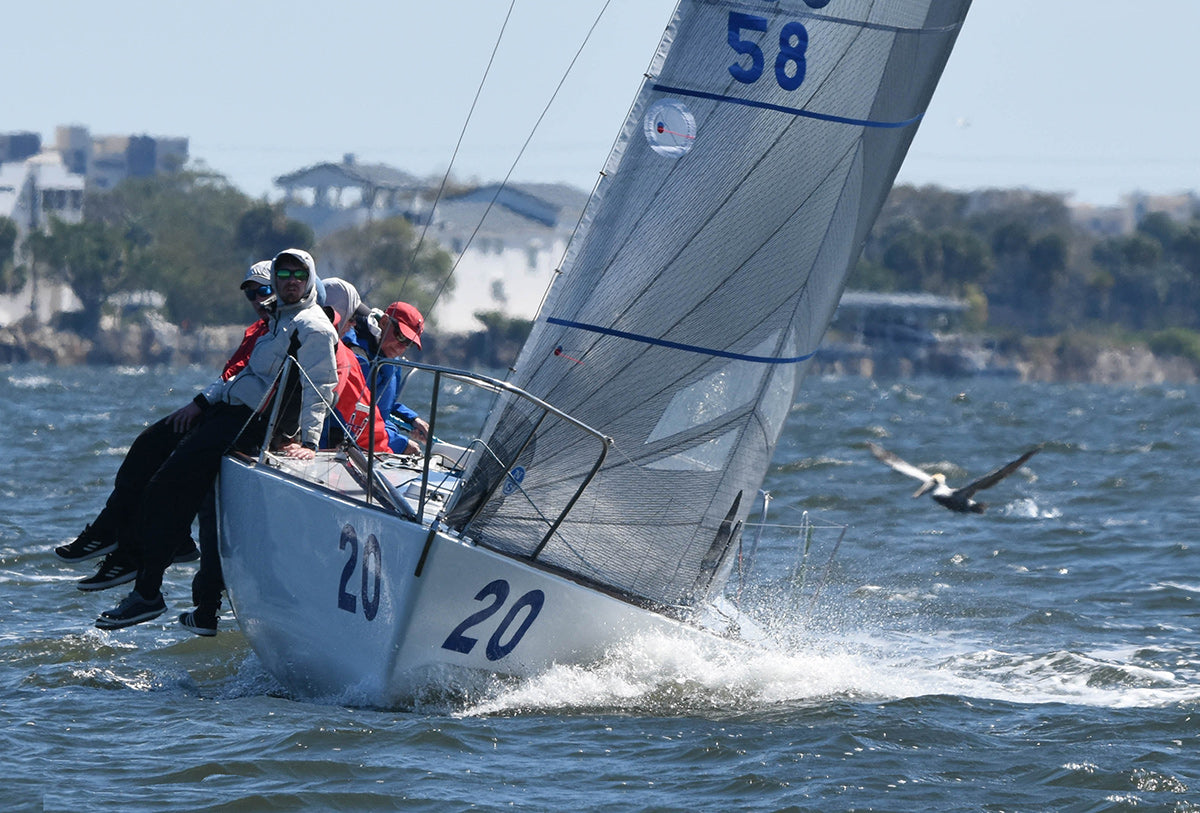
2020 J/24 MIDWINTERS: A WELL DESERVED WIN
J/24 MIDWINTERS: A WELL DESERVED WIN
Congratulations Tony Parker & Team Bangor Packet
2020 J/24 Midwinter Champions 📸 Chris Howell
After 41 years in the class, Tony Parker on Bangor Packet finally won the J/24 Midwinters in Melbourne, FL—by one point. After eight races, only two points separated the top four teams, indicating unusually close racing among the top group including John Mollicone, Mike Ingham and 2019 World Champion Keith Whittemore.
We caught up with Tony after the regatta to get his insights.
You’ve been sailing J/24s for a few years. How have the class and boat evolved?
To say “a few years…” is an understatement. My first major regatta was the 1979 Worlds. We sailed with 4 people, weighing in at most 600 pounds, with a reefable mainsail. The self-proclaimed “family cruiser” had the required cushions below. If only I had known then 25% of what I know now!
What was your team’s strategy to pull off this win?
We just tried to get off the line clean, look around about halfway up the first leg to see how we stood, and then started to play against the others up there. Our tactician, Zeke Horowitz, called a great regatta. He was very patient, probably more than I would have been. Because of that we never got too out of phase and when we lost distance, we would gain it back in the next shift.
The top people were all very close. The fourth place boat averaged a 3rd for the regatta out of 33 boats. I haven’t seen such a tight top group in years – and all the top five boats at the Worlds were there, so the competition was really tight.
The fun part was that this was the first major J/24 regatta I have ever won. I bet I have over a dozen 2nd places. I never thought it would take me until I was 74 to get there!
Team Bangor Packet 📸 Chris Howell
Tell us about everyone’s role on your boat.
Each person has an assigned role. We are quite good about keeping the talking down and we are quite gentle when one of us screws up. I screw up more than anyone else but most of the time they don’t yell at me. Our second person back, Emmet Todd, was really helpful because he was very active calling puffs. So many who do that job just never stop talking and finally I start ignoring them. He was particularly adept at not “overtalking”. It really helped me anticipate puffs and lulls. We have a terrific team.
Zeke Horowitz, our tactician, is as good as anyone in the world. He is patient, clear and never panics when it gets tight. We are very clear who has the “con”. Sometimes it is our spinnaker trimmer; sometimes it is me; most of the time it is Zeke. The transitions are very seamless.
James Niblock, our jib and spinnaker trimmer, has been sailing with me for over a decade. He is as good as they get. We know each other so well that we almost don’t have to say anything to each other. He always anticipates what is needed in terms of trim, besides being a wonderful shipmate.
Will Bomar, our bowman, does everything. He makes sure the boat is in perfect condition. I am a man of leisure before and after the race because I know he and James have the boat perfectly set up.
We were lucky to have Emmett Todd, who usually sails with Finn Hadlock, act as our twing man, replacing my “go to” forever shipmate Ross Dierdorff. We all miss Ross, but Emett did a first class job and I will always be on the lookout for him if Finn can’t make a regatta. They are really good.
📸 Chris Howell
You sailed some races in the Genoa and some races in the Blade jib. How did you decide on which sail you used?
That ultimately was very simple: we looked at our competitors. If all of my major competitors were sailing with a particular sail, we just followed suit. The price for being wrong is too high!
A few of your team members had flown straight from sailing J/24s in Argentina. Can you tell us about the 2021 Worlds venue?
It was very different. They sailed with 4 people at that regatta and the venue is too narrow to be able to sail to a layline, so there was much more tacking. The breeze is quite consistent but the shifts are not. The hosts were very welcoming and will put on a fun Worlds next year.
Job well done! 📸 Chris Howell
READ MORE
READ MORE

SUNNY MAIN: 3Di LEAD
INTERNATIONAL WOMEN’S DAY AT NORTH SAILS
Introducing Sunny Main: 3Di Lead
In celebration of International Women’s Day, we are pleased to introduce Sunny Main, who oversees the tape floor as 3Di Lead. Main retired from being a stay at home mom and joined the workforce in Minden, NV sixteen years ago, after moving to America from her native South Korea.
Main works in Building Two, where she manages the tape head machines as 3Di Lead. She is in charge of all seven tape machines, loading each with the correct sail design file and enough material before the automated process begins laying down the sail structure.” I manage the priority list for the department, and get the required materials for each project loaded on the tape head machines.”
“We usually have all the machines operating at the same time,” she explains. “I assign each of my crew a job, and make sure they have the right tapes to complete the task.” Keeping her team aligned with safety procedures is always at the top of her list. “This is a manufacturing facility, and the machinery is big. It’s important to know what you are doing to avoid accidents.”
“Everyone in Tape Heads knows that Sunny demands the best quality. She is the “mom” of the department and you don’t let your mom down! She’s never sick and always has a sunny smile on her face.”- Per Andersson, 3D General Manager
3Di tapes are stored in industrial-sized refrigerators until a project calls for loading them onto the tape heads. Once removed from the fridge, the countdown begins for Main to get the sail structure laid down and consolidated on the 3D mold before the resin begins to cure naturally.
“Building a sail structure can take as little as one shift to complete, depending on the size of the sail,” Main explains. Sometimes we can make a complete sail in a single shift, but often we require multiple shifts for larger projects.” After the tape machines create the sail structure, it’s inspected on both sides, and then rolled up onto a tube and placed in a bag for transport to the 3D mold in Building One. Once placed on the mold, the infrared lamp applies heat to the sail. The consolidated composite is then the sail is ready to sit for 7-10 days on the curing floor. After curing, sails move onto finishing, where hardware, decals, and patches are added. Each department has a deadline, all based on the final shipping date. “What we keep in mind,” says Main, “is that the pregger supplies tape heads, tape heads supply the mold, and the mold supplies the finishing floor. We all have a deadline so that the finishing floor can ship it to the customer by the date requested.”
Main enjoys her role as 3Di Lead because each project is different. “There is always something new with custom sail orders,” she says. “I take pride in my job and expect the final product to be perfect. I can be tough, but it’s my job to ensure things are done efficiently and correctly.”
The hardest part of Main’s job is training new people. “Although the job looks easy, it has its challenges,” she explains. It’s essential to be 100% accurate, and there are a lot of details involved, especially when it comes to custom orders, which is the majority of what we make here in Minden.”
“Our sail designers are talented. We make our own product. We make our own tapes. Why are our sails the fastest? Because our product is made well.”
One of the unique parts of working in a large manufacturing facility like Minden is that Main gets to meet all different kinds of people. “We host engineering students that come from France, Germany, and Sri Lanka. They not only learn what we do here, but they are learning about our culture, and we learn about them too.”
Even long-term like Main have someone they remember as guiding their career path. “Peter Jahreis , Pregger and Tape Head Line Manager, is my mentor because he’s a great listener. He won’t hesitate to work along with my team if we need an extra hand. He is also great at problem-solving.”
Making high-performance 3D sails in the middle of the desert is a highlight of her career, she says. “Leading a talented and hardworking crew and having the opportunity to recognize or get recognized every quarter for hard work is a great incentive.” Sunny also likes to be involved in company functions and events, and they have plenty of those in Minden that make their employees feel appreciated for their hard work. “It’s a great way to say thanks,” she says.
READ MORE
READ MORE

2020 CARIBBEAN SEASON PREVIEW
SUPERYACHT CARIBBEAN SEASON PREVIEW
Mike Toppa Shares his Excitement on the Upcoming Season
📸 Carlo Borlenghi
While those of us up north wait for spring and pine for sunshine and warm trade winds, Superyacht owners from around the world are gathering in the Caribbean with family, friends, and crew. With three regattas (Antigua Superyacht Challenge, St. Barths Bucket, and Les Voiles des St. Barths) fit into two months, “they have a really healthy entry list,” North Sails Superyacht expert Mike Toppa explains, when we caught up with him just before he jumped on a plane. “They moved the dates for Antigua this year, so boats will race there, transit directly to St Barths, and pick right up where they left off days earlier.”Mike will be sailing onboard Rebecca for the Antigua Challenge, and he’s excited about the brand-new sails they’ll be using for the first time. “New 3Di ENDURANCE main and mizzen, Nylon A2, and 3Di RAW Helix genoa staysail. They’re the latest generation in terms of structure, engineering and design, so I expect to see a pretty nice performance gain.”
But he’s equally excited about stepping on board the 56m Perini Navi Zenji for the St. Barths Bucket, where Spectra paneled sails are still going strong. “I think they’re six or seven years old now. They’re regulars at the Bucket, and they like to race and compete. They have a great crowd on board, and it’s always really fun sailing with them.”
Well managed races and boats
When asked how many people will be aboard each boat, Mike chuckles. “It’s probably close to 25 on Rebecca. On Zenji, 40-50. There’s a lot of sailors. And then there’s a lot of crew. And there’s the owners and family and friends and guests, so the numbers add up pretty quickly. The boat is 198 feet long, with three decks. Racing it is really a management exercise; everything’s so big, and nothing is manual. So you get it to the line on time, point it in the right direction, trim the sails, make use of the shifts, stay out of the current, and hope for the best!” Both islands do a great job running the regattas, he adds. “Who doesn’t like to sail in Antigua or St Barths? The races are always well managed.”
📸 Carlo Borlenghi
Race all day, repair all night
North Sails Service will also be well managed, thanks to many months of planning. Overnight repairs will be provided to the entire fleet in both Antigua and St. Barths. “We have the full staff from the loft, and we also fly in a lot of our sailmakers,” Mike says. “We’ve been doing this for several years, and we’ve gotten very efficient at knowing the materials and machinery and manpower we need to handle a fleet of that size and sails of that size.”
A tear in a 3Di mainsail can be repaired on board, but the most common repairs are on spinnakers, and they have to be stitched back together at the loft. “It’s not an easy task, because the sails are huge and heavy and wet and just getting them off the boat and to the loft takes a lot of muscle and planning. We work hard at making it as easy as possible for the owners and the captains and the crews.”
Once sails get to the loft, the repair team works through the night to have them ready to go the next morning. “Even a 12 inch tear in a spinnaker that’s 1200 square meters in area is a big deal, because you have to move the sail through the machine and it might weigh 200 kilos. It is a big job.” Asked for an estimate of how many sails could be repaired in one night, Mike can’t give an exact number. “Oh, it’s hard to say. It really is approached by just getting it all done. That’s part of the planning process.”
There’s no permanent sail loft on St. Barths, so the North Sails team creates a “pop-up” loft. “We send in all the machinery and materials, erect a tent, and do all the sail repairs right alongside the water,” Mike says. “This year, Matt Smeaton is coming up. He has a particular interest to be part of the service team in St. Barths because for a lot of the boats, this will be their last stop before they head to New Zealand for the America’s Cup. We’re trying to make sure there’s a seamless transition for our customers.”
📸 Carlo Borlenghi
Heading west
After the Caribbean regattas end, several boats will transit the Panama Canal and then spend the summer working their way down to New Zealand, arriving in time for the 2021 Millennium Cup. “No one tries to get there quickly,” Mike explains. “It’s more of an opportunity to island-hop and see some new places.” The transition will be a little bit easier for the Superyachts like Rebecca that use their 3Di Endurance main and mizzen for both racing and cruising. “3Di Endurance sails can be raced with confidence,” Mike says, “because it’s molded just like 3Di RAW sails are, so the shape is locked in.”
Meanwhile, the North Sails Superyacht team will already be working to apply the lessons learned at this year’s Caribbean regattas to their service at upcoming regattas around the world. “Everybody in North America, Europe, New Zealand, and Australia will compare notes: what we could do better, and our successes. And then looking forward, what’s coming up and how to best plan for it, to make sure that we have the assets needed at each event to cover any conceivable need.”
And then it’s time to get off the phone, because Mike is flying off to Antigua to help bend on Rebecca’s new sails. That, too, takes “a little bit of experience in planning,” he says. “There’s a lot of people involved. First thing is to make sure you have the weather window, before it gets too windy to hoist. Next thing is to get them bent on, battens installed, and furled.” The reward? Trimming in state-of-the-art sails, and enjoying that performance jump.
READ MORE
READ MORE

TP 52 SUPER SERIES PREVIEW
TP52 SUPER SERIES PREVIEW
North Sails Experts Dive Into the 2020 Circuit
📸 James Tomlinson
A year ago, just ahead of the 2019 TP52 Super Series, North Sails designer Mickey Ickert was already excited about the 2020 season. “With 3Di, I think we are still just scratching the surface of its potential,” he said then. Now, on the cusp of the first regatta, Mickey and Executive Vice President Paul “Flipper” Westlake are both equally bullish on the incremental gains the North Sails design team has made since their in-depth team debriefs after last year’s final regatta.
For 2020, North Sails improved the 3Di layouts again as the learning curve is still steep. Downwind sail inventories were refined to create specialist sails that are not too narrow in application. “The A2+ will be an important sail in Cape Town,” Mickey says, “if the venue turns- up its windy side.”
This year’s schedule starts off in that new location, as Flipper explains: “We’ve never been to Cape Town.” Two regattas will be sailed in this South African offshore sailing mecca, and the second is the World Championship. “So everyone’s really excited, but there’s a little bit of anxiety at the same time. Ten really good teams will sail a six regatta series. At 10 races a regatta that’s 60 races, with no drops. You just can’t afford any failures or bad results. And Cape Town’s going to be a challenge, because it should be pretty breezy.”
The sailors and sail designers aren’t the only ones who need to be ready, Flipper adds. “This is going to be a challenge for all the teams and all of the suppliers, everyone down to the performance guys. There’s going to be some stressful times for the weather forecasting guys, too. The weather in Cape Town can be extreme, and getting each day’s forecast as close as possible is going to be a useful key for performance setups and strategies.”
The TP52s can race up to 30 knots in flat water, a brutal test for any brand-new sail inventory. Fortunately, 3Di is known for its excellent durability, even though Mickey says that most of the 2020 sails are lighter than they were in 2019. He also points out that, after the Worlds in Cape Town, there are four more regattas in the traditionally lighter air of the Mediterranean. With only seventeen new sails allowed per team through the final regatta in September, “TP52 teams may ask themselves: ‘Do we really want to invest in a specific heavy weather jib?’ You may gain a little bit on the top end, but it’s an expensive exercise in the sail cards for such a long season.” North Sails Designers will be helping their teams work through that decision-making process.
📸 James Tomlinson
Backup inventory
This year, for the first time, the Super Series will allow teams to race with used sails without spending a sail button. “All the sails sitting in a team’s container that they buttoned last season in a Super Series event are available to race at no cost this season,” Flipper says. “I don’t expect to see a lot of 2019 sails on the race course, but it means a little bit more depth in your inventory to cover yourself, especially in a heavy-air event. It’s that comfort factor, that you’ve got a backup A4 on standby.”
Flipper agrees with Mickey that making the transition back to the Med will be a whole different challenge. “Scarlino, where the third event is, can be kind of light and moderate and it’s a bit choppy there, so we’re really going to have to change gears. By the time we get to Porto Cervo, which is the fourth event… if you don’t have everything looking good on the scorecard by then, you’re really going to struggle to pick points up against the good guys.” That’s why he thinks some teams might opt to use a few key pieces of 2019 inventory for the first two events. “If those sails can get you through Cape Town, you’ve got absolutely brand new, fresh Med-type sails, ready to go for Scarlino. Away you go.”
📸 James Tomlinson
Worlds Focus
With the 2020 Worlds as the second event, Mickey thinks some teams may simplify their sail choices by choosing to focus on results in Cape Town. It’s not a new strategy; Flipper will be sailing on Bronenosec, the only team that started 2019 with a brand-new boat. “Last year our goal was to do the best we could for the season, but absolutely focus on the world championships.”
There are no brand new boats this year, but Flipper says all the teams have been working really hard on fine tuning and eliminating weaknesses. “We’re starting to talk about very small incremental gains. If we do see big breeze and flat water in Cape Town, I think that you won’t see much difference in setup and sail choice. But I defer to Mickey, because he sees the design trends across the fleet.”
Mickey agrees, adding that with no drop races, teams can’t get too aggressive. “You can push the boundaries, but you need to be very careful not overstepping. Especially on rig tune. But people will try, because it’s not very satisfying for anybody to finish fourth, fifth, or sixth.” With differences between the boats being so small, even tiny mistakes could make or break a podium finish.
📸 James Tomlinson
2020 Inventory Updates
No fundamental changes were needed from last year, Mickey says. “We did a refinement to the 3Di RAW structures. And a few teams have done some additional design work with Helix, though the boat speed gains through minimizing forestay sag and projecting the jib luff using a Helix structure will be hard to come by in this fleet,” he predicts.
“The current TP52s are arguably the yachts with the highest relative forestay tension in the world,” he points out. “A 21 meter forestay that carries eight tons at the top end is already very optimized for upwind VMG. That said, being able to vary the sail loads along the jib luff will increase the range of achievable flying shapes. So for any jib, load-sharing will expand the performance window.
“The concept is out there, and teams are looking at it. It will be interesting to see if any sort of trim variations come through; people try to maybe push on the top end of jibs where there is still some forestay sag, to gain a little more range out of, say, a heavy jib.” Then he quickly backtracks from potential future improvements to what he thinks will be the winning strategy in 2020; “If you focus on the season, then you want to be very careful not to diverge too far from your overall inventory crossovers.”
One place where Helix has already proved quite beneficial is the spinnaker staysail, says Flipper. “Previously, no one really loved their staysail, but they expected it to be fast. With 3Di and Helix working together, you end up with a staysail that’s stable, projects well through the range, is tough, and can be built lighter than any paneled sail. Maybe 2020 will be known as the year of ‘Loving your Staysail!”
“We’re very demanding on every sail in the inventory,” he adds. “It’s because we want to push the weight, we want to push the shape holding. And we need to get performance longevity out of the sails.”
📸 James Tomlinson
Winning approach
When asked for his own prediction on what would win the 2020 Super Series, Flipper says it will be a combination of outright speed, team chemistry, and a sprinkling of good luck. Brononosec’s alternate helm from last year, Olympic Gold Medalist Šime Fantela, is “full on with his 49er Olympic preparation for Japan. So Morgan Larson is going to step in and share the driving with owner Vladimir Liubomirov. And we have Jonathan McKee joining as tactician.” Flipper expects to see a few personnel changes on other boats as well, though he admits that’s all hearsay until “we get to Cape Town and see who is wearing what shirt. And within the Super Series fleet, each team has shown winning performances at times in 2019. So it’s going to be full on, everyone fighting for those inches around the course to keep the score count as low as possible. This whole Cape Town thing is going to be an incredible experience.”
The keys to success, Flipper and Mickey agree, are to get through the two regattas in Cape Town without having what Flipper calls “a shocker,” and to make the transition back to the Med with positive team attitude and a solid strategy intact. As Flipper concludes, “It’s going to be a long season for not getting too down if you had a bad result, and not getting too excited if you had a good one.”
READ MORE
READ MORE

WHY ARE RACING SAILS BLACK?
North Sails Expert Per Andersson explores fashion and function in the striking look of black sails on the water, and explains why sails may come in different shades of black.
📸Nico Marinez
Fashion, Function, and Material Composition
Black has not always been the fast look for sails, but lately more and more black sails are showing up on the water. Why? The simple answer is that many sails are now made with carbon fibers—the strongest load-carrying material in sails—and carbon is black. If some sails seem even blacker to you than they did a few years ago, you may be noticing North’s 3Di sails, a product that has gained significant market share since it first was introduced. Many sailmakers use carbon in their sails, but typically the carbon is laminated between layers of polyester or Mylar film, so it does not look completely black.
North’s 3DL sails fell into this category for many years, with variable densities of the carbon, depending on where it was needed to resist the heaviest loads. 3Di sails are darker because starting in 2013 with the introduction of 3Di RAW, we’ve rid our highest-performing sails of the cover layer and its associated parasitic weight.
We should point out that not all 3Di sails are black, because North has 3Di products that include aramid fibers, which are yellow, and Dyneema fibers, which are white. We also use black, white or gray taffeta or non-woven surface materials for durability on our 3Di ENDURANCE and 3Di OCEAN performance cruising products, for which the owner can choose the color of preference.
3Di RAW on Swan 42 one designs 📸 Onne van der Wal
Early on, to make a more consistent and solid look on our RAW product, we began to pigment the aramid fibers because they simply looked better black, mixed with carbon and Dyneema fibers. “Dyneema fibers are not available with black pigment but with only a small amount of Dyneema in our 3Di sail structure, a small amount of pigment in the adhesive produces a solid black surface.”
Many sailmakers have followed the trend toward black sails. Most add a “light skin” or taffeta on top of the film to achieve the black look! Others simply add a non-woven layer of colored polyester material to make the sails black.
North Sails 3D molded downwind racing sails are grayer and more translucent, especially when the sun is behind the sail. These sails come with our Helix load shearing technology luff structure. The 3Di molded downwind sails use
3Di Downwind
READ MORE
READ MORE
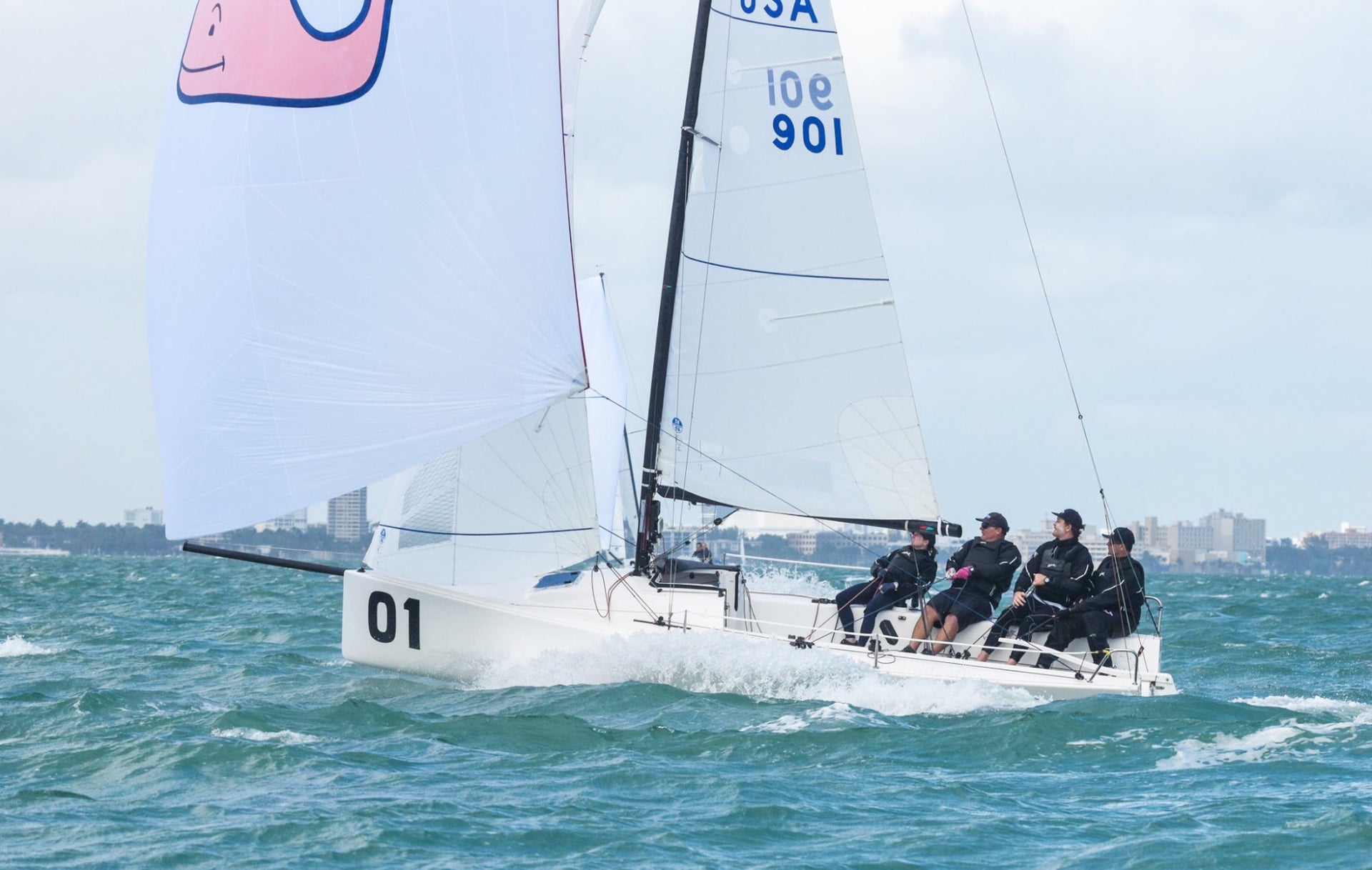
BAXTERS PREVAIL AT THE J/70 MIDWINTERS
BAXTERS PREVAIL AT THE J/70 MIDWINTERS
When the Game is Close, North Delivers.
2020 J70 Midwinter Champions 📸 Chris Howell
Team Vineyard Vines John and Molly Baxter, Ben Lamb, and North Expert Allan Terhune are the 2020 J/70 Midwinter Champs after a relentless eight-race battle in a variety of testing conditions. On the final day, they snagged two bullets using the 2019 J/70 Worlds winning inventory: F-1 Mainsail, J-6 High Clew Jib and AP-1 Asymmetrical kite.
We caught up with John Baxter for a quick interview.
Team Vineyard Vines had not sailed for a few months leading up to the Midwinters. What did you guys do to prepare and get back up to speed so quickly?
We have tried to be diligent about keeping good team notes and having repeatable settings, since we don’t get to practice a lot before regattas. We had two days of practice prior to the regatta with our training partners on 3 Ball JT and Savasana, along with our coach, Grant “Fuzz” Spanhake. Fuzz was a big factor in getting us back up to speed by looking at our sails and boathandling, and our training partners pushed us with great line-ups and open dialogue throughout the week. Also, it is huge that we get to sail with Ben Lamb and Allan Terhune. They are both great sailors and have been racing a lot in J/70s since our last event together in Cleveland last September, so they helped kick us back into shape as a team.
Not many teams sail as a husband-wife team and also bring the family with them. Why is this so important to you both?
Molly and I met in college on the St. Mary’s College Sailing Team and have loved racing together ever since. We both enjoyed cruising and sailing with our own families when we were kids, and love continuing that tradition with our own two boys. Charlie (6) and James (3) race with us for summer beer can club racing at Riverside Yacht Club, and they love coming to our J/70 regattas.
The J/70 seems like such a simple boat, but there is clearly a lot to it. What are a few things you focus on?
We agree it is a simple boat and we do our best to not over-analyze all the variables. We try to keep our focus on refining our boathandling and technique.
Why do you choose North Sails?
We have been sailing with North Sails for many years. We don’t think it’s an accident that the top of most of the Grand Prix classes are dominated by North Sails. They continually strive to refine and enhance the designs, and Tim Healy and Allan Terhune have worked closely with us to optimize the sails for our style.
See also: Heavy Air Tips – Allan Terhune Explains What Worked for Team Vineyard Vines at the 2020 J/70 Midwinters.
The North AP-1 Spinnaker, a J/70 must-have. 📸 Chris Howell
Team Empeiria, 5th Place. 📸 Chris Howell
The champs. 📸 Chris Howell
READ MORE
READ MORE
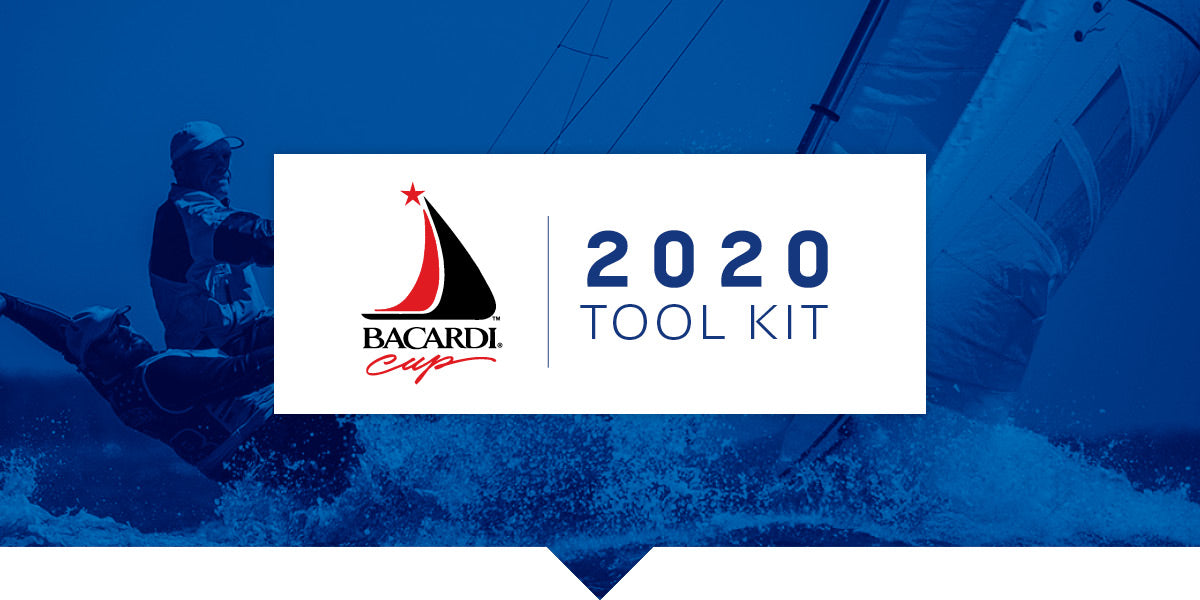
BACARDI CUP INVITATIONAL REGATTA TOOL KIT
Get The Most From Your Racing Experience!
Biscayne Bay is a great place to sail in March. Whether you’re a newbie to sailing in South Florida or a seasoned veteran, we’ve collected some of our best advice—both class-specific and general—to help you have your best Miami regatta, ever.
What To Expect in Biscayne Bay
We asked the local Star and Snipe World Champion Augie Diaz to explain what sailors should expect when they leave the docks. Learn more from Augie as he shares his secret to success.
Learn to Love Sailing in Heavy Air
It is not unusual to feel intimidated by a strong breeze, so we have put together three key pointers to help your team feel more prepared in these testing conditions.
Can the New Star Designs Repeat History?
Eric Doyle and Payson Infelise claimed Star fleet victory at the Bacardi Cup 2019 with new M-25 Mainsail and J-115 Jib designs. Hear how they came to beat seven World Champions and multiple Olympic medalists in Miami.
Jibing Like A Hero
A successful jibe is vital when racing in all conditions. We’ve broken down each step to help you successfully accomplish these maneuvers that can make or break your race result.
Perfecting 3Di for the Melges 24
As the world leader in One Design sailmaking, North Sails recently introduced a latest generation M-2 mainsail and J-3 jib. Learn more from Melges 24 Class Sail Expert Giulio Desiderato on how these regatta-winning designs came to be.
Lessons Learned from Rounding First
Mike Marshall explains two mental traits that will help you maintain the top spot amidst the pressure of rounding first.
Define Your Speed
Pulling all the pieces together can be challenging. Our Speed Guides will help you leverage our expertise to make the most of your sailing at the Bacardi Cup.
Viper 640 | Melges 24 | J/70
Why is Headstay Sag Fast Upwind in Light Air?
One design expert Tim Healy, describes how headstay sag affects sail shape and why manipulating these controls can be a risk worth taking.
Five Downwind Modes
Displacement mode, wing-on-wing, or full plane? Understanding the J/70’s different downwind modes will help you make the right move at the right time.
Speed Reading: Setting Goals
Setting goals is important for success, regardless of your experience. Hear more from sail expert Zeke Horowitz as he explains how to put your winning formula to work this sailing season.
Need Overnight Repairs?
The Fort Lauderdale team is here for you with overnight sail service and repairs during the regatta. Call the service team to arrange a sail pick up at 631-805-4949.
READ MORE
READ MORE
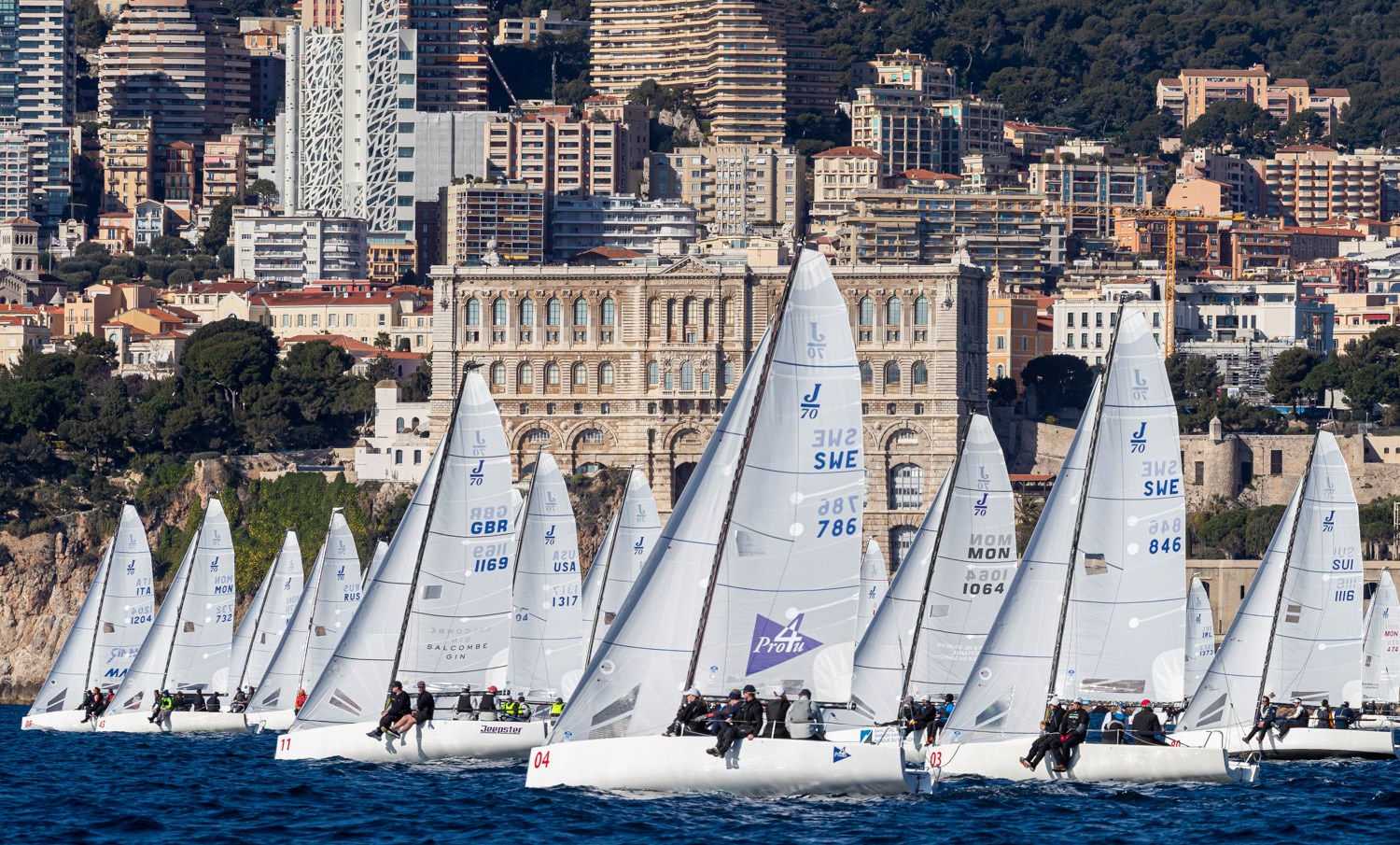
J/70 MONACO PRIMO CUP: PODIUM SWEEP
J/70 PODIUM SWEEP AT THE PRIMO CUP
A Preview of the 2021 J/70 Worlds Venue
📸 Yacht Club de Monaco
Beautiful Monaco Yacht Club hosted the 36th Annual Primo Cup, the 4th act of the European Circuit. North Sails expert Alex Curtiss sailed on Good to Go and shared his experience about the regatta, and also took some notes about the 2021 J/70 World Championship venue.
North Sails clients couldn’t be happier with their results. The top four boats used the fast North J/70 designs. Congratulations to the Russian team ELF for winning the 36th Primo Cup using the North F-1 Mainsail, J-6 Jib and AP-1 Spinnaker.
Here are Alex’s notes about the venue for the 2021 J70 Worlds in Monaco for those planning to attend:
Breeze Conditions
The dominant wind directions are E, SE, ESE, SW, WSW, and W. If the breeze is directly onshore, it has a tough time climbing the mountains that line the bay so it is a very fickle wind. If the breeze comes from offshore, the breeze will land about 10 miles away so there is hardly any wind in the bay.
Sea State
Expect a lot of chop. The city sits in a horseshoe-like part of the ocean. When waves roll in, it’s like a washing machine. There are no beaches and only concrete walls that reverb water. Expect to keep the bow down!
The Yacht Club
Monaco Yacht Club is extremely hospitable. They sectioned off large parts of the club for competitors to take advantage of. We spent a lot of time at the Sports Bar, which has an epic view of the city. Everyone who works in the sailing portion of the club is super helpful to all competitors. They are generous with lending tools when needed — and we needed a lot!
Accommodation
The Fairmont is walking distance from the club. There are great restaurants in the hotel and you can walk to the casino. Bring your sports jacket and you will fit anywhere in the city!
If you are planning on sailing in the 2021 Worlds, it would be very advisable to sail the winter series. There were 65 boats on the line this past weekend at the Primo Cup. It is a very tough fleet with high-profile teams, and mixing that with the challenging conditions is going to keep everyone working hard the entire time. Based on what Alex experienced, doing your homework and making sure you spend some time sailing at this venue will be key.
Interested in a new main or jib for your Worlds inventory? Contact your local expert today. Have questions about the Worlds venue? Alex Curtiss is here to help.
Congratulations to the Russian team ELF for winning the 36th Primo Cup powered by North Sails! 📸 Yacht Club de Monaco
📸 Yacht Club de Monaco
READ MORE
READ MORE
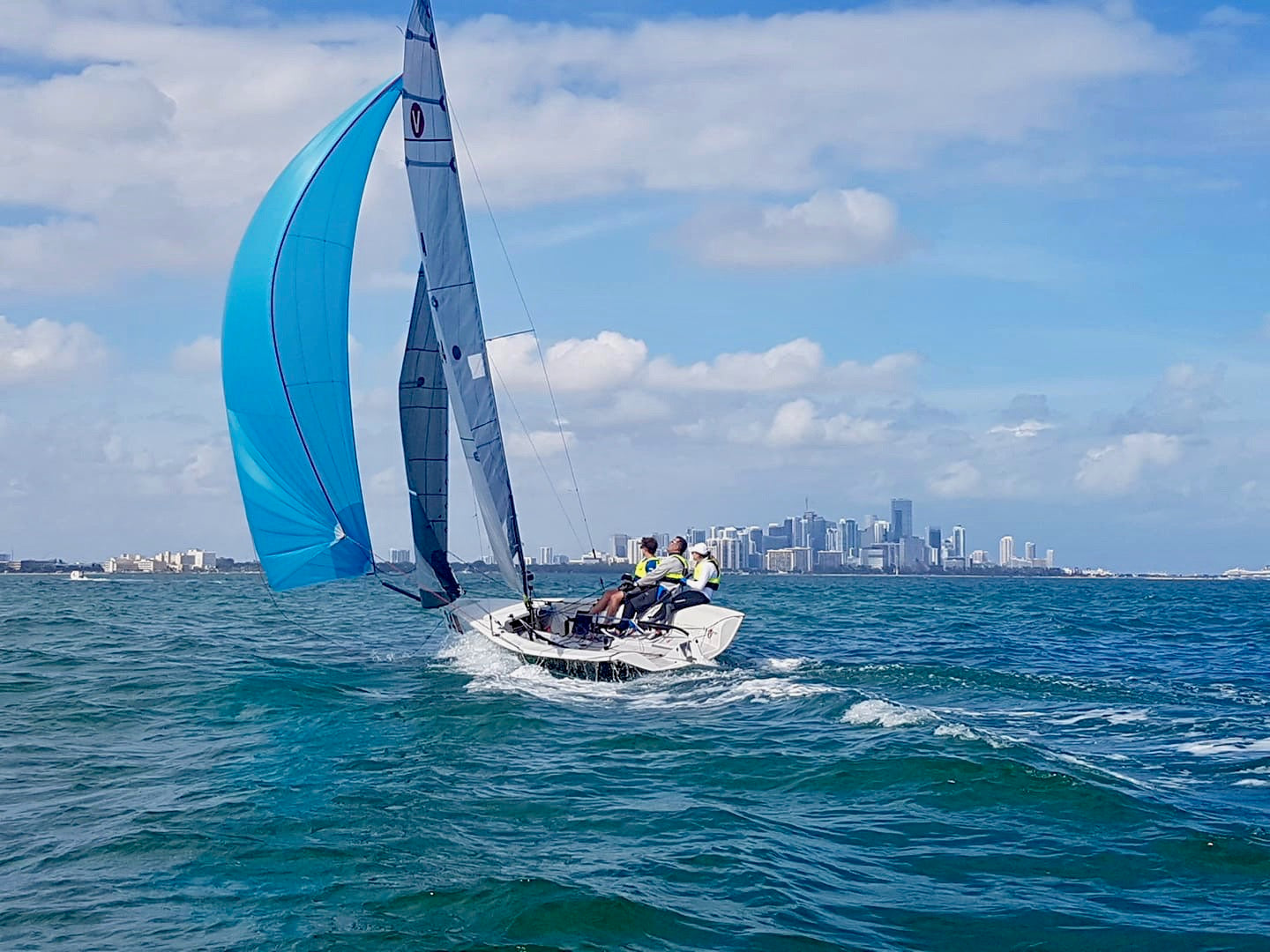
BENVENUTTI WINS VIPER 640 WINTER SERIES
BENVENUTTI WINS VIPER 640 WINTER SERIES
Key Tips for Sailing in Heavy Hair
The third regatta of the Viper and VX One Winter Series in Sarasota, Florida delivered excellent weather, friendly competition, and a great onshore atmosphere. After enjoying a Saturday debrief led by our experts, North Sails customers took all but two of the top ten places in both classes. In the Viper, Peter Ill won with North Sails expert Austin Powers on board, while the VX One class was won by Esteban Forrer and Hayden Bennet.
The Viper class also concluded its three regatta winter series, which was won by Jackson Benvenutti with help from Jesse Fielding, Jan Majer, Nick Ward, and Chris Morgan.
Sunday’s 18-22 knots allowed teams to test out their heavy air prowess upwind, while going for top personal speeds downwind. (One VX One posted a 19.2 knot 10 second average). While straight line speed was fun, many Vipers and VX Ones wiped out while jibing. Gybing in big breeze takes lots of practice and crew coordination, but here are some tips to help keep the boat on its feet.
Keep the boat moving into the jibe
Time and time again, I see crews take their attention off going fast when setting up for a jibe. If you slow down before jibing, the boat loads up as the apparent wind increases on the sails and gets knocked over as soon as the boom crosses. Instead, heat up to increase boat speed just before you jibe and minimize the apparent wind. This keeps the boat under a more consistent load, making it much easier to keep the boat underneath the sails. Picking a wave to jibe on always helps as well.
Use a blow-through jibe
When the driver starts the turn, overtrim the sheet until the clew comes back to the shrouds. As soon as the kite backwinds, the driver should slow the turn to allow the trimmer time to pull the new kite sheet through. Once the kite fills, the driver slowly heads up to the final course.
“When you do wipe out”
We’ve all been there. When you do wipe out, blow the spinnaker halyard halfway until the boat is back on its feet again. Overtrim the jib to turn downwind, and then rehoist the kite to get moving again. If the boat stays on its side even after the spinnaker halyard is dropped halfway, try pulling the clew around the headstay to help get the boat pointed downwind and in control again. Then re-hoist the spinnaker.
Next Viper stop: Gulf Coast Championship in Fairhope, AL. See you there!
Left-right: Viper Winter Series champions on Psycho Tiller! | 2nd Place Winter Series Peter Beardsley on “Great Scott” | 3rd Place Winter Series 3 Peter Ill (winners of event 3)
READ MORE
READ MORE
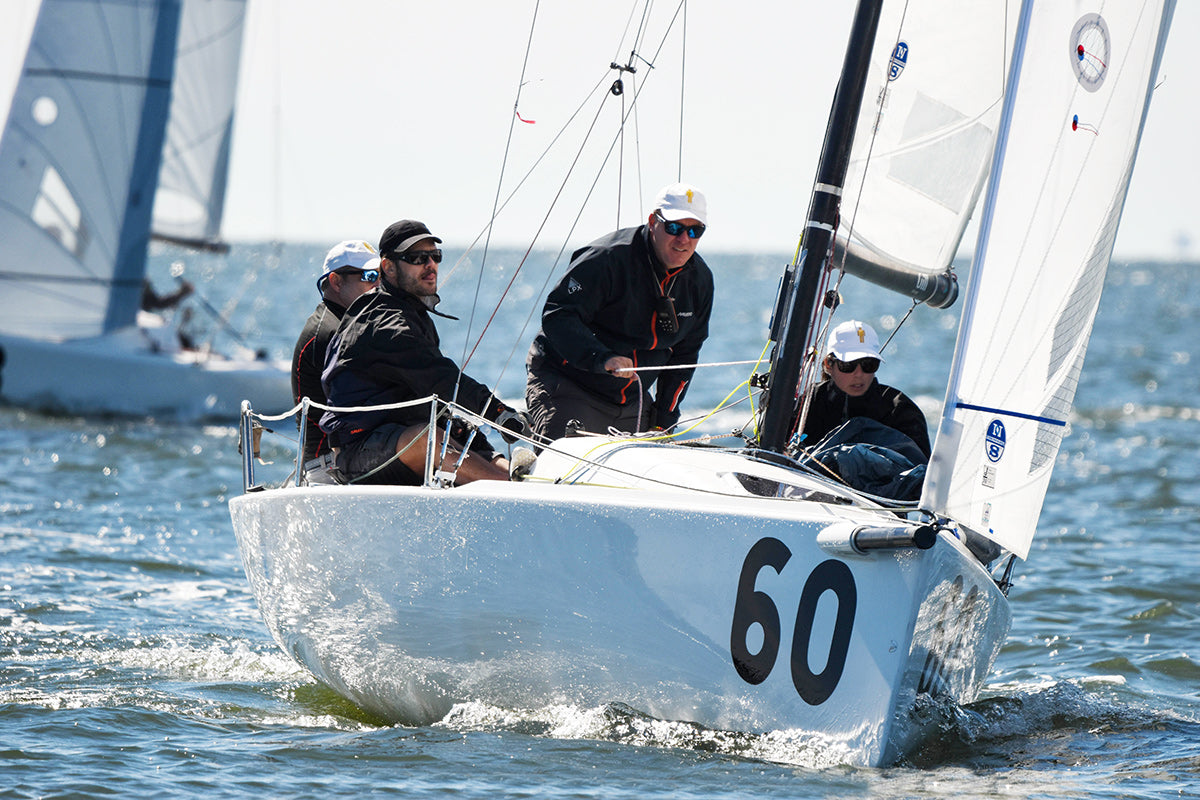
J/70 LESSONS FROM THE DAVIS ISLAND WINTER SERIES
J/70 LESSONS FROM THE DAVIS ISLAND WINTER SERIES
North Sails Expert Allan Terhune Shares Tips From Sailing the J/70
Allan Terhune on Building A. 📸 Chris Howell
This past weekend concluded a great Davis Island Winter Series in the J/70 class. With a variety of conditions and great hospitality from DIYC, this series has become an impressive example of how winter circuits and regattas should be run.
Equally impressive were the results of North clients: 1,2,3,5,7,9 overall and 1*,2*,4,5,7 in the Corinthian division. Congratulations to series winners Brian Keane and Peter Fiery.
Here are the top 5 lessons we took home from the regatta.
Keep the rig versatile
Before each race, I made sure my “normal” setup had the backstay at the middle of its range. Many teams set up more toward the extremes and then struggled with transitions in the puffy conditions. To me, nothing is worse in the flat water off DIYC than having a main too full to depower.
Be patient with the shifts
The easterly winds were both shifty and puffy, and it was impossible to be in phase all the time. When we were on the correct side of the shift, our goal was to go as fast as we could. If we were on the wrong side, we tried to get back in touch to attack on the next shift. It was easy to chase the breeze and continue to lose ground.
Top of the cone: be proactive
The courses were relatively short for 50 boats, so the first weather mark was very crowded. The boats that were reacting to traffic were the teams that were losing. The winners visualized what the next moves would be while keeping an open mind. It is OK to duck a boat or two if you know it will get you to an open lane or layline.
Downwind mode matters
There were times when you were planing, and times when you were not. The biggest mistake I saw was not changing modes decisively. Once the boat behind starts to plane, you have to find a way to match. Even if you aren’t in the same breeze, get off the wing and sail towards the next puff.
Keep calm and sail on
In such variable conditions, it’s very easy to get frustrated about your performance. No matter where you are on the race course or in the fleet, looking forward and being positive is key. Not panicking about your traffic or situation will make the rest of the day go that much better.
Heading to the Midwinters? We have sails in stock ready to be shipped to your door.
Peter Firey’s Phoenix, overall Series winners in the Corinthian division. 📸 Chris Howell
Brian Keane’s Savasana (right), overall winner of the 2020 Winter Series. 📸 Phill Pape
READ MORE
READ MORE
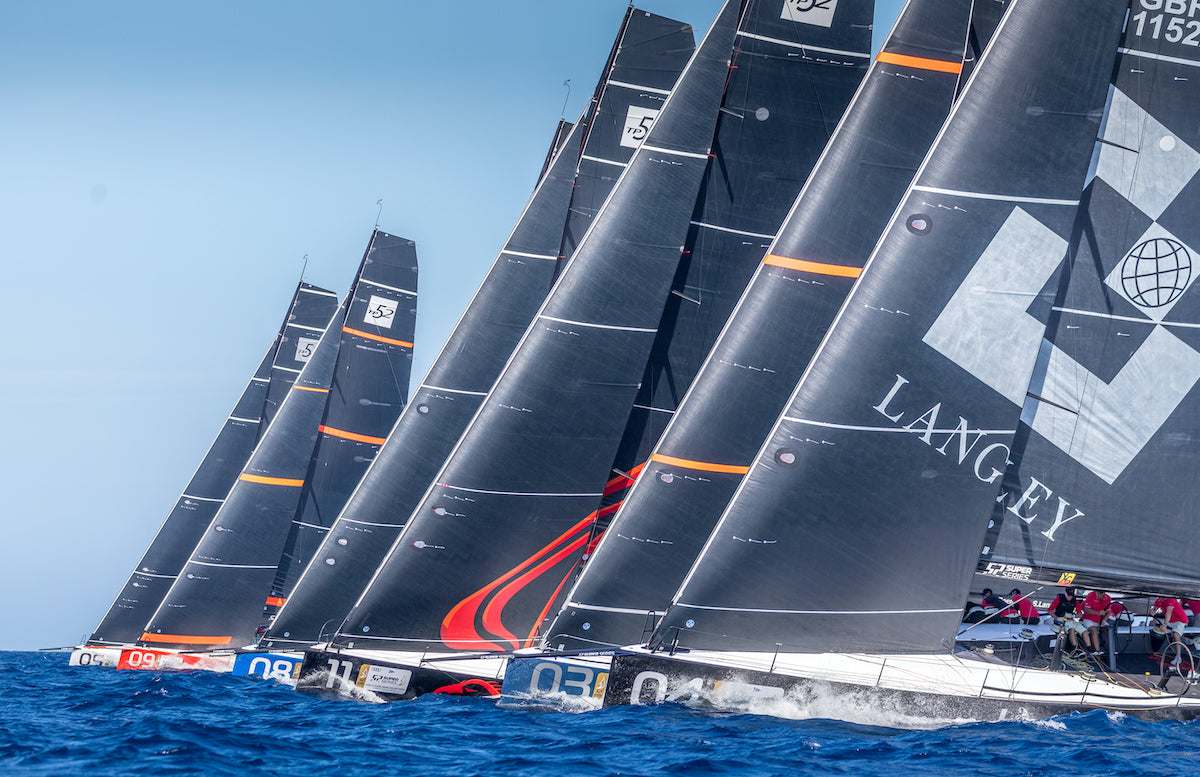
NORTH SAILS RENEWS PARTNERSHIP WITH 52 SUPER SERIES
NORTH SAILS RENEWS PARTNERSHIP WITH 52 SUPER SERIES
World’s Leading Sailmaker Continue their Association with the High-performance, One Design Monohull Circuit
📸Nico Martinez / Rolex
Following a successful partnership over the last two seasons, North Sails has today announced we will continue as an ‘Official Technical Partner’ of the 52 Super Series sponsored by Rolex. The 2020 circuit, now in its ninth season, will again play host to a stellar list of sailors and boats, with 12 boats from eight countries all vying to be number one. Year after year, the competition gets more compelling, with teams forced to out-think and out-sail each other in the high performance, one design TP52s. As an Official Technical Partner, North Sails will bring their world-leading expertise, design and sail technology, as well as sailor support to the fleet, with ten boats choosing cutting edge North Sails 3Di.
The TP52 has become the de-facto top monohull inshore race class in the world, appealing to the very top level professional sailors, discerning owners and teams. The all-carbon fiber boats with powerful sail areas and deep slender keels remain very close in performance. The current Champions Azzurra, racing with a North Sails 3Di inventory, has won the Championship four times (2012, 2015, 2017, and 2019), and there is only one other team who has taken the top spot.
With the America’s Cup just a year away, the ultra-competitive TP52 class continues to attract the best in the business. As North Sails TP52 Design Expert, Mickey Ickert commented: “The pace of this class is relentless – every year we are being pushed more and more out there on the race track, and the differences between boats are getting smaller, so we have to look for any marginal gains. We work very closely with all our North Sails clients in the fleet to help eke out every possible inch of boat speed. Each of our teams has a dedicated North designer who works with their sail coordinator to further refine the baseline inventory, and they are also on hand for feedback to make sure we are constantly moving forward.”
Commenting on the partnership, Paul Westlake, North Sails Executive Vice President, and Mainsail Trimmer for Bronenosec Gazprom concluded: “Every November we get the sail designers who have worked with the various teams together for a full debrief on what we have learned from the previous season and what is next area of development for the coming season. The partnership we have with the Super Series helps us to grow the support we can give clients and to enable North Sails to help them make more gains in the future. We have the utmost confidence in our sail design tools and 3Di composite technologies to provide our clients fast, reliable, cutting edge sail wardrobes. Still, we are always exploring the limits for ways to improve as we progress along the highly demanding season consisting of 60 races with all to count!”
Commenting on the partnership, Agustin Zulueta, CEO of the 52 Super Series said “We are delighted to extend our partnership with North Sails as a Technical Partner to the 52 SUPER SERIES. As a high-performance class, we are driven to push the boundaries of what is possible in our sport, and in North Sails, we have a partner whose mission is naturally aligned with ours. We look forward to continuing our successful collaboration with the expert sailmakers for a further two years.”
The 52 SUPER SERIES covers six trophies from March to September 2020:
Cape Town 52 SUPER SERIES Sailing Week: March 2nd – 6th, Cape Town, South Africa
ROLEX TP52 World Championship Cape Town, March 31st – April 4th, Cape Town, South Africa
Royal Cup 52 SUPER SERIES, Scarlino, Italy, May 12th – 16th, Scarlino, Italy
Audi 52 SUPER SERIES Porto Cervo & TP52 20th Anniversary Invitational, June 17th – 21st Porto Cervo, Italy
52 SUPER SERIES Valencia Sailing Week, July 18th – 22nd, Valencia, Spain
Puerto Portals 52 SUPER SERIES Sailing Week, September 15th – 19th, Mallorca, Spain
📸Nico Martinez / Rolex
READ MORE
READ MORE
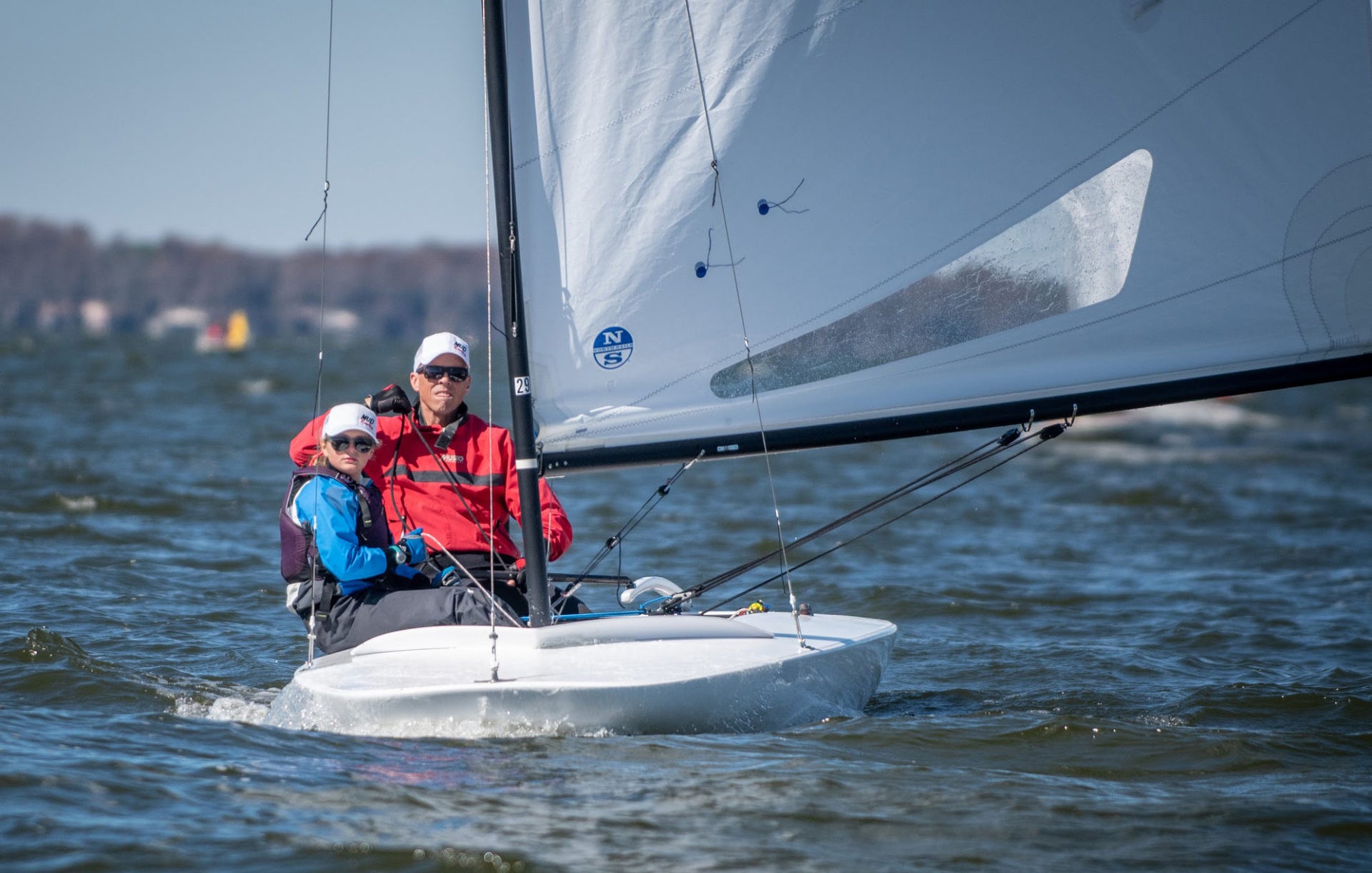
MC SCOW - FAMILY, FRIENDS & COMPETITION
MC SCOW – FAMILY, FRIENDS & COMPETITION
Interview with Chris Andert
📸 Regatta Girl Photography
We caught up with longtime North Sails Zenda customer Chris Andert after winning the second event of the MC Triple Crown Series in Eustis, FL.
You have been sailing all of your life. What sparked your interest in the sport?
Chris: Family, friends, and competition. They’re so intertwined in the sport, and, to me, it’s what makes sailing great! I’ve built lifelong friendships from sailing – some going back to my days in youth sailing, where now our kids are racing against each other. You meet new people at every regatta, you get to know someone whom you’ve only known by name, and you share your stories and experiences as to sailing means to them. Then you go out and compete against each other, trying hard to beat your longtime or newfound friends while on the water. Only to come back to shore where you help each other de-rigand share stories of tactics that led to successes or “almosts.” Sailing is a great fabric and community that every time I leave a regatta I’m longing for the next event.
Sailing scows must be your passion as you have raced them all at one time or another. Now you are sailing the Melges MC. What drew you to scow sailing?
Chris: It’s the character of each of the classes that for me sets scow sailing apart from other boats. Each Scow class is unique, from how you sail the boat to the fleet itself, and each provides its own excitement and challenges. I’ve been fortunate to participate on some great teams racing on As, Es, and Cs, but the MC has taken me a little more time to figure out than I originally thought. There’s such a balance between boat speed and tactics that you can’t emphasize just one. When racing C Scows, I always felt that if I was off on my tactics I could just make up for it with boat speed. The MC doesn’t let you do that – to compete with the top of this fleet you have to be good at both.
I like to think that my time sailing MCs has made me a better sailor, and forced me to think through my racing game plan and execution a little more.
You just won a major MC event in Eustis, Florida with over 40 boats in attendance, some of the best MC sailors in the country. What was the secret to your success?
Chris: I’ve had moments before in the MC – winning races at Nationals and Midwinters – but I’ve never been able to put together a series until this regatta. My goal for this event was to stick to my pre-race game plan and to not take big chances or get stubborn when something goes wrong. My last MC regatta in November, I blew a chance at a top-five standing over one race; a big shift came through that I didn’t want to acknowledge as it meant giving up boats. I hung on so long that I finished in the back of the fleet. The next race I went out and won, but I had already lost that regatta because of my poor reaction in the race prior.
There were so many good sailors at this regatta that I knew I couldn’t take those chances. I set a goal for myself to “sail for 5th,” start on the favored side but don’t try and win the start, watch the breeze come down the lake and position the boat to the course but stick with the fleet while doing so. These were the sorts of thoughts that were in my head as part of my plan for this regatta. I was focused on sailing well, keeping my boat moving, and staying within myself from a tactics perspective. This only works when you can trust your boat speed, and I’ve really come to appreciate the range that the North Sails Z-Max provides across conditions. This regatta had changing conditions each day, and I was confident that both the boat and sail would respond without significant tuning changes. I did a slight sidestay adjustment as the wind came up, but otherwise, I was able to adjust power effectively through vang, outhaul, cunningham, and traveler in that order.
North Sails Z-Max 📸 Regatta Girl Photography
Sailing and Family can go hand in hand. I know you love having your family involved with your sailing. What plans and goals do you have with your family’s sailing?
Chris: My two daughters Anna and Maija really caught the racing bug in 2019. I’ve officially become an Opti Dad! Both Liz and I love being on the water and around sailing, and its just as much fun for us to see them fall in love with the sport too. We’re attending several winter and spring events with them in their own boats, but I’ll definitely keep using them as crew on the MC. Maija got to race in this regatta, Anna is up next!
It’s so much fun to have them crew for me while I’m racing. But as I see them continue to come up the curve in their own sailing skill, I know it won’t be long until someday I’m crewing for them – I can’t wait for that to happen!
Both Liz and I love being on the water and around sailing, and its just as much fun for us to see them fall in love with the sport too.
As you go through this spring and summer, there’s no doubt you’re thinking of the 50th MC National Championship in Lake Geneva, Wisconsin. Do you plan to attend?
Chris: I really hope to be able to make it to the 50th! After racing at this regatta, I spent time talking with Brett Hatton and Scott Slocum, two past class Champions that I hadn’t really met prior. It was great to get to know them a bit, hear about their MC experiences, what they did to go fast, and then being asked what I was doing. It’s a great class with a great history, so I want to be there, but for now we’re just planning the next Opti event, and hoping that it doesn’t conflict with MC Midwinters.
📸 Regatta Girl Photography
READ MORE
READ MORE
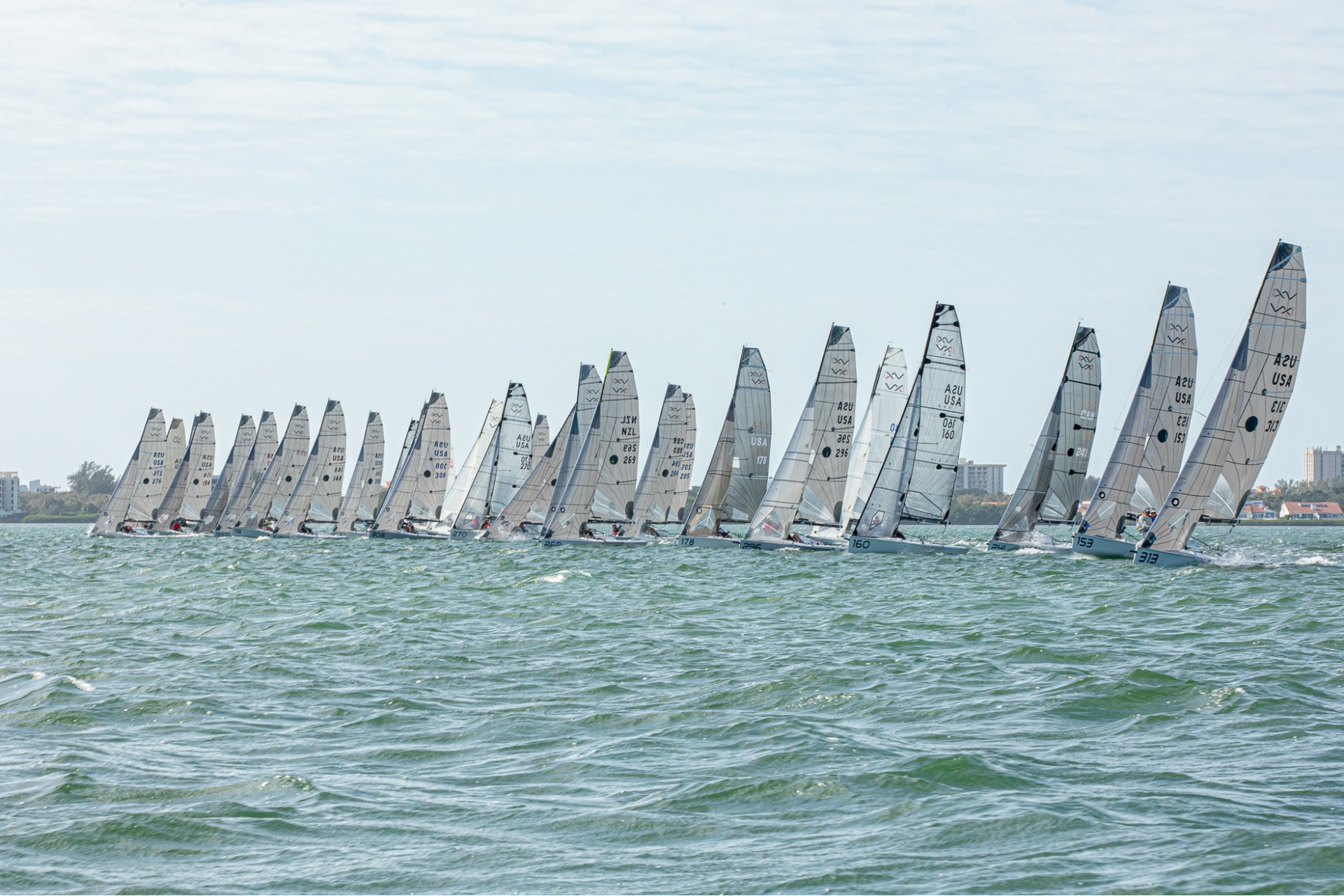
THE NUMBERS AT THE VX ONE MIDWINTERS
THE NUMBERS AT THE VX ONE MIDWINTERS
On-the-Water Observations
Heel angles off the starting line 📸 Sarah Wilkinson
The VX One is a rewarding boat because it is easy to set up, straightforward to sail, and attracts a uniquely fun group of sailors. With simplicity, however, comes the need to absolutely master each possible variable in order to get an edge on the fleet. During the Midwinters in Sarasota last month, VX One North American champion and North Sails sail designer Madeline Gill spent time on and off the water observing the setups of other teams and listening to what they had to say about it. Here are her thoughts:
Looking around the course, it was clear to me that boat setup was anything but uniform. Easiest to note were some of the basic details, like sail trim or leeward cap shroud tension (slack.) But, some of my other observations prompted me to do some more in-depth research after the racing was over. My major hypotheses were:
When it comes to using ‘relatives’ to compare performance, heel angle is a better indicator of net gains or losses than pointing angle is.
In most raceable conditions, getting the main as flat as you can is key to both getting off the start line ahead and extending your lead throughout the race.
Relative Performance
As the middle crewmember on a team with the driver trimming the main, one of my primary responsibilities upwind was to gather data. Keeping my head out of the boat and feeding constructive information to the team exercised my brain as much as hoisting, trimming, and dousing the spinnaker exercised my body.
As I have always been taught, I would relay information about our boatspeed and pointing angle relative to boats across the course. If the combination wasn’t a clear net gain or loss scenario, I would include my best guess with that regard. For example, if we were pointing a little bit lower, but going a lot faster, I would say, “lower, faster, net gain to us.”
Enter MONKEY WRENCH center stage.
I kept finding myself in situations where my conventional system would lead me astray. There would be a boat near us that we were pointing higher than and going the same speed as. This is a clear net-gain-to-us, no-need-to-even-mention-it situation, right? Not so fast. Next time I checked in, we would still be pointing higher and going a similar speed to them, but they had climbed off our windward hip, building gauge to windward and clearly having gained on us. The most glaring difference was that we were maintaining a few degrees more leeward heel than they were.
My realization at that point was that establishing and maintaining attached flow over the keel and rudder is majorly important. The shorter the cord length of a foil is, the more significant impact one unit of detached flow has. The angle of heel, and its subsequent hydrodynamic impact, is vital factor in VMG performance. As is always true, keeping the boat flat minimizes leeway, allows boatspeed to increase, and leads to better pointing angles. But the quantity of that impact is amplified in the VX One, thus my conclusion that, in conjunction with boatspeed, relative heel angle is a more valuable determinant in overall performance than relative pointing angle is.
Flat Sails
In general, we spend so much time talking about how to get the right shape in the right place in our sails, but when it comes to removing the shape, we sometimes forget that there is the same discussion to be had. Tighten the rig, put all of the sail controls on, and pull the mainsheet like your potential world’s strongest person sponsor is watching. Do you see overbend wrinkles extending from the mast toward the clew? Great. But don’t stop the conversation there.
Achieving overbend wrinkles in the main is a good indicator that you are taking power out of the sail and reducing aerodynamic drag on your boat.
Achieving overbend wrinkles in the main is a good indicator that you are taking power out of the sail and reducing aerodynamic drag on your boat. If you are still unable to maintain a flat boat, tighten the cap shrouds more, make sure the checks aren’t keeping the bottom of the main from getting flat enough, and put more tension on the vang. Depowering the bottom of your main is a good starting point, but if you are struggling with too much leeward heel, you should be trying to spread that flatness up the sail where the same amount of power has greater heel-inducing ability.
The Evidence
As it turns out, the event photos hold some nice examples that lend credence to my hypotheses.
First row
Middle row
Back row
The photo at the top of this article is a particularly good illustration of heel angles. I went through and measured the heel angle of nearly every boat on the line and grouped them by approximate row location. Sure enough, our Midwinter Champions in 269 are not only in the front row and sailing in clear air, but are notably flatter (≥2°) than every other boat in a similar position. In other words, Hayden and Mike were sailing their boat with 10%-15% less leeward heel than everyone else in the front row.
Overbend Wrinkles 📸 Sarah Wilkinson
Next, I hunted for upwind images of some top teams (isolating variables and choosing only teams using the same sails, of course.) The red triangles are where the overbend wrinkles on each main are dominating the shape landscape. The overall coverage is 30% of the area on 269 (extending 61% up the luff and 68% down the foot,) 20% of the area on 171 (extending 50% up the luff and 55% down the foot,) and 10% of the area on 276 (extending 20% up the luff and 67% down the foot.)
By extracting this data from the photos, we can see that the event leaders were sailing with a flatter boat and flatter sails than most.
By extracting this data from the photos, we can see that the event leaders were sailing with a flatter boat and flatter sails than most. And although each photo captures but a fleeting moment in time, I think it is safe to say these observations are more likely to be reflective of each team’s typical setup than not. Next time you’re setting up to go for a rip on your VX One, try focusing on (1) achieving as flat a heel angle as you can consistently sustain and (2) growing and shifting the flatness in your sails.
READ MORE
READ MORE

RED BULL KING OF THE AIR 2020
RED BULL KING OF THE AIR 2020
Counting Down To The Main Event In Cape Town, South Africa
Make sure you’re following @northkiteboarding to find out exactly what day the competition is called within the two week window, so you can watch the livestream at redbull.com. Want to tune into the world’s most jaw-dropping big-air contest?
The Red Bull King of the Air competition, proudly sponsored by North Kiteboarding will be returning to Kite Beach, Cape Town on the February 1st through the 16th. It’s all about the amplitude as contestants go head-to-head in a “flag out” competition format. During the two week weather window riders will only face-off in the perfect conditions – wind speeds of over 30 knots are ideal for providing the perfect swell from which to boost some extreme maneuvers.
The field for 2020’s Red Bull King of the Air will be made up of top six riders from the 2019 edition as well as 14 wildcards and four satellite entrants. 24 total kite boarders will take to the air between February 1st and 16th for a shot at the big prize.
Confirmed for the 2020 event is three-time defending champion and winner last year, Kevin Langeree, as well as North athlete and winner of the 2017 edition, Nick Jacobsen. He is currently the only person in the world with a set of North prototype kites. Unfortunately Nick missed out on a chance to defend his title in 2019 due to injury.
This year in particular is the first year a woman will have the opportunity to compete for the overall crown. Angely Bouillot will make her debut and is very excited for the chance to compete. “It’s a real honour”, says Angely. “I am excited to prove that women have a place in these extreme events and my mission is to inspire young women to participate in more events like this.”
Red Bull King of the Air is everchanging, and this year brings a new format for competition. Four winners, along with the 14 video/satellite entries will compete in round one and two. Both rounds will take place at a different venue that offers the best conditions; Witsand/Misty Cliffs or Kite Beach, Blouberg. From there, competitors will advance to challenge the top six from the 2019 event at Kite Beach for the big showdown in round three.
Video highlights of 2019:
READ MORE
READ MORE

SUZY LEECH: IMPRESSIVE AND IMPRESSED!
SUZY LEECH: IMPRESSIVE & IMPRESSED!
Teaming Up With Ken Read To Win Ft Lauderdale to Key West Race
📸 Billy Black
For more decades than she likes to admit, Suzy Leech has dealt with whatever challenge is thrown at her, on any kind of boat. From the bow of Mighty Mary, the 1995 all-women’s America’s Cup team, to forward teammate on Betsy Alison’s Olympic Yngling campaign, to navigating Enterprise to 2nd place at the 2019 12 Meter Worlds, Suzy is (in the words of Ken Read) a “bad-ass.” So it’s no surprise that she embraced her newest challenge, a 24-hour double-handed sprint down the Keys, with enthusiasm. It’s also no surprise that she helped Kenny achieve yet another victory.
“He was awesome,” Suzy says, when we caught up with her shortly before the prizegiving. “Kenny just wanted to go out and try this whole thing and see if he likes it. Between Jeanneau and North Sails, all the details were completely covered. I had a really great time, and it was the perfect introduction.”
Two brains are better than one. If you have the same skill set, you’re wasting it.
One reason why this first-time pairing worked so well, Suzy believes, is that it was so symbiotic. “I’m fine doing the sail handling and I loved navigating, but I am not that person to make your boat go fast. I’m not going to look at the sail combination and go, ooh, we need to tweak this here and do that there.” So while Ken kept suggesting sail changes (she figures they made about 20 in the course of the race), she worried about plotting the fastest course into Key West—in the dark. Watching the series of pre-dawn squalls on radar and trying to predict the next shift was totally different from the sailing she’d done before. “You’re completely blind. Maybe you see the stars are going away, but that’s it—a whole new world.”
📸 Billy Black
One of Suzy’s biggest takeaways was the incredible range of new sail designs. “We had a Code Zero and a Code 50, what they’re calling a tweener. It was a great all-purpose sail that we were able to put up and know that it could handle squalls and keep us going when the wind died. That last part of the race there was so much lump and rain, you couldn’t fly the A2. The code sails really came through for us because you could trim to what you needed.”
Suzy also raved about the prototype jib that reefed into a blast reacher, and their incredibly versatile staysail. “No matter what other sails we had up, whether it was the Code Zero, the Code 50, the A2, or the headsail, we always had the staysail up from the beginning of the race to the end.” That meant no bare-headed peels—but it also meant learning new lessons (in the dark, and on the fly) for this former bowman who describes herself as “an old dog.” Back aft after each sail change, the cockpit looked like “a home crocheting project gone wrong.” Fortunately Ken dove into cleanup with enthusiasm. “He didn’t care what he did, he just pitched in to help make the boat go faster. I was so impressed.”
📸 Billy Black
Looking ahead, Suzy says she’s excited to see where the partnership between North Sails and Jeanneau to promote double-handed sailing leads next. “They’re both looking at the long-term game. They want to get more people into sailing, because they want to find more buyers for boats and sails. We came up with a list of things to change, and any idea that we had was like, okay, ‘let’s do that. Let’s try it out. Let’s make it happen.’ It’s very refreshing.”
She’s also excited about the new mixed double-handed offshore Olympic discipline, and racing with Kenny to Key West taught her what to look for in a potential teammate. “First is compatibility. Can I hang out with you? Do we like the same wine?” She laughs. “That’s important!” While that might be the same for any sailing campaign, her second priority is a bit different: complementary skills. “Two brains are better than one. If you have the same skill set, you’re wasting it.”
And after dealing with so many different sailing challenges for so many years, Suzy also knows that the talent pool for offshore sailors who happen to be female is not very deep at the moment. “I hope that this new generation steps up to the plate. It’s going to be a great opportunity.”
📸 Billy Black
READ MORE
READ MORE

BACARDI WINTER SERIES #2: NORTH CLIENTS SHINE
BACARDI WINTER SERIES #2: NORTH CLIENTS SHINE
North Boats Win Both Overall And Corinthian In The J/70 Class
📸 Kathleen Tocke
For the second edition of the Bacardi Winter Series in Miami, 25 J/70s and 25 Melges 24s raced in 5-10 knots over two days. The Bacardi happy hours were a hit as always!
North boats took five of the top ten places in the J/70 class. Oivind Lorentzen, Ian Coleman, David Shreiner, and Lucas Calabrese won overall, while Zachary Segal, Ashton Hamerlin, Enrique Quintero, and Piet van Os won the trophy for top Corinthian team. Both winners used the XCS-2 mainsail, the J-2 High Clew Jib and the AP-1 Spinnaker.
North Sails expert Zeke Horowitz sailed on John Heaton’s Empeiria, and he shares some lessons from a light air weekend.
Dynamic sail trim is hugely important.
If the boat isn’t fully powered up, both sails should be adjusted in every slight velocity change or wind shift. Err on trimming too loosely. The upper leech of the jib should be trimmed to the outside spreader mark, while the foot of the jib should be just touching the toe rail.
Fight the desire to feel weather helm!
Especially in light air, it’s common to want some “tug” on the rudder, because weather helm gives you feel. This is not as fast as the uncomfortable feeling of having zero helm. A “dead stick” means no rudder drag, which is fast both upwind and downwind.
Flat is Fast, even in light air.
Sailing the boat with as little as 5 degrees of heel in flat water is ideal. If you don’t have a heel indicator, get one!
Keep the backstay snug enough to avoid the rig bouncing.
Keeping the backstay just snug is good, even in conditions where you aren’t trying to bend the top of the mast. Reducing headstay bounce makes it easier for trimmer and helm to stay in the groove. This goes for downwind too!
Full results
First Place overall Oivind Lorentzen, team Nine. 📸 Kathleen Tocke
1st Place Corinthian, Zachary Segal and team USA 1154 📸 Kathleen Tocke
3rd place overall John Heaton and team Empeiria. 📸 Kathleen Tocke
📸 Kathleen Tocke
📸 Kathleen Tocke
READ MORE
READ MORE

GONE SAILING
GONE SAILING
Ft Lauderdale to Key West with Ken Read and Suzy Leech on Alchemist
Ken Read explains why he raced double-handed in a new 33 footer from Fort Lauderdale to Key West.
I just broke a cardinal rule that I was told a long time ago by a Bermuda Race veteran. NEVER go offshore in a boat shorter than your age!
This week I raced a Jeanneau Sun Fast 3300, which is a boat I’d never sailed before, from Fort Lauderdale to Key West, with Suzy Leech—and I’d never sailed with her before. And since it’s a sailboat race, we set out win the whole thing—not just our two-boat class. Sounds cocky but you have to set the bar high no matter what you do, right?
Reality is we had very little expectations and I was super-anxious to have some fun and see what this short-handed racing is all about!
The rhumb-line distance was about 160 miles, so it was a quick race. As we skirted along the outside of the Keys, we were still trying to figure out the boat’s polars and how to operate all the state-of-the-art electronics (can anyone tell me how to use that self-steering thing?), as well as how to make efficient sail changes with only two pairs of hands.
You might remember that several years ago, I took on a totally unknown challenge for me and sailed around the world a couple times in the Volvo Ocean Race as a cure for windward-leeward boredom. Let me tell you, going from a fully professional, fully crewed program (with lots of staff, ashore and afloat, to make everything happen) to only one other teammate is equally drastic. I’ve never been shy about embracing a new challenge, but if I’d known how much work this would be… ah hell, I would’ve done it anyway.
📸 Billy Black / FL to Key West 2020
Why? There are several reasons.
First, for North Sails it is critical to have strong relationships with companies like J/Boats, Beneteau, Jeanneau and all the other sailboat manufacturing companies like them. I happened to mention my interest in shorthanded sailing to our North rep in Annapolis Allan Terhune, who set up a meeting with Mike Coe at Jeanneau, and we talked about using their SunFast 3300 for a few events. It just so happens to match the newly announced Mixed Two Person Offshore Keelboat class, though let me be perfectly clear: this is not the beginning of an Olympic campaign. Another point of interest in the 3300 is its co-designer Guillaume Verdier, a major force behind the Comanche design team and a good friend. Anytime he’s involved with the design of a boat, I know it will be a good ride.
Next, I want to do everything I can to encourage more sailboats to be built and get the ones that already exist out on the water more often. One complaint I hear all the time is that it’s too hard to find crew, but for this kind of sailing you only need to find one other person. Double-handed sailing has exploded in France and England, because the people who are doing it are just having fun. There have been pioneers of short-handed sailing on this side of the Atlantic as well, so this is not a reinvention; maybe I’m just finally smartening up to what others have been saying for a long time.
Last but certainly not least, North Sails designers JB Braun and Max Tringale have been working really hard on our Helix layouts for upwind sails, and they needed a guinea pig. Out of five front sails on this boat, four were Helix for this race (the only one that’s not Helix is the A2 Nylon sail). It’s the biggest Helix percentage of any racing inventory to date in my estimation.
📸 Billy Black / FL to Key West 2020
How to choose a teammate?
As soon as I had the idea, I realized I needed a teammate who would cover for my own weaknesses. Because the Olympics will require a mixed gender team, I figured that instead of just getting one of my usual buddies I’d practice what I preach and actually invite the other gender to come participate with me. Sailing is still a boys’ club, and we boys need to start doing something to fix that. I also decided my teammate should be American, partly to fit Olympic requirements and partly to promote shorthanded sailing in my own country, where sailing frankly needs a shot in the arm.
Suzy Leech ticks all of these boxes, and she’s a bad-ass. She did bow on Mighty Mary (the all-female team) in the America’s Cup trials in 1995, and they came within one race of going to the Cup. Back then the boats were pretty sketchy, a serious challenge especially forward of the mast. She obviously knows how to handle boats and she is not afraid to get her hands dirty. She’s also smart and understands instrumentation, so I don’t have to figure out any of that. (It’s called an auto pilot, right?) Remember, I’m used to having staff! And I say that in a good way because when you run America’s Cup or Volvo or Comanche and Hanuman type programs with dozens of people involved, you end up with staff! For this race, she had to rely on me and I had to rely on her. And with so little time to practice and trial this new ride, practically the first time we left the dock on our own was to head for the start.
Because of the late announcement by the organizers the doublehanded class only has four boats, but we’ll be scored against the entire fleet in ORC as well. It’s such uncharted territory—the sail crossovers, the people, the process—that I had fewer expectations than any race I’ve ever sailed. All I’m really sure of at this point is that we had fun!
📸 Billy Black / FL to Key West 2020
READ MORE
READ MORE

SARASOTA WINTER SERIES #2: SPEEDY TIPS
SARASOTA WINTER SERIES #2: SPEEDY TIPS
Bennet and Beardsley Dominate Weekend Regatta
Congratulations to Hayden Bennett and Mike Marshall, 2020 VX One Midwinter Champions! 📸 VX One Class/Sarah Wilkinson
The VX One and Viper fleets enjoyed two days of great sailing on Sarasota Bay last weekend. Saturday started off with a nice 12-15 knot breeze that slowly died, while Sunday brought a steady 9-16 knot breeze. The Vipers completed 8 races and after a tie was broken, Rachel and Peter Beardsley came away with the win over Jackson Benvenutti sailing with Jan Majer and Jesse Fielding. Hayden Bennett and Mike Marshall won the seven-race VX One Midwinter championship.
What We Learned
VIPER 640 CLASS (Jackson Benvenutti)
📸 Sarah Wilkinson
Puffy conditions create possibilities for huge gains (or losses) downwind due to the boat-speed and angle differences between puffs and lulls. The tactician should spend most of the time looking backwards, studying the wind to see where the next puff is coming from, and figuring out how to take advantage of it. Questions include
Is that next puff within reach?
If so, how do we get to it as quickly as possible?
Figure out which jibe keeps the boat in the puff for as long as possible.
Having an in-between race routine is just as important as the routine at the start of each race day. Develop a checklist that allows for a quick mental rest and then quickly reenages both skipper and the crew. Here is what we do, in order:
Water and food
Debrief from previous race (What worked? Were we fast or slow? Did one side of the course pay off?)
Adjust rig (Check rig on both tacks)
Ping line
VX ONE CLASS (Mike Marshall)
A flat boat and flat sails are very fast. Anytime you are hiking, get the sails as flat as you can so that you can trim them hard without heeling. A combination of vang, cunningham, and rig tension all combine to make flat sails. Don’t be afraid to pull the lines harder.
Sport boats have two modes: searching for power, and depowering. In light air, the goal is to get the crew hiking. Trimming the sails extra hard can help add power, as long as they are not stalling. As soon as you are consistently hiking, you are looking to flatten the sails to reduce drag.
A flat boat is key in the breeze, VX One Midwinter Champions! 📸 VX One Class/Sarah Wilkinson
North Sails post racing debrief
📸 VX One Class/Sarah Wilkinson
READ MORE
READ MORE

MAGPIE WINS ETCHELLS AUSTRALIAN CHAMPIONSHIP
MAGPIE WINS ETCHELLS AUSTRALIAN CHAMPIONSHIP
Graeme Taylor Takes Home the Title with a Race to Spare
Magpie (AUS 1474) and Shoulda Gone Left (AUS 1395) go head-to-head 📸 John Curnow
35 teams arrived at Royal Brighton Yacht Club in Melbourne to battle for the Etchells Australian National Championship title. North Sails clients claimed all top 10 positions overall, so we had to find out why from Graeme Taylor, the helm onboard the winning Magpie (AUS 1474).
Graeme has been part of the class since 2000 and has racked up multiple victories, including four top-three finishes at the Worlds and four Australian National titles. For this year’s Nationals, he teamed up with James Mayo and Tom Slingsby and won the regatta with a race to spare, despite the varied bag of wind strengths in Port Phillip Bay.
“We are very comfortable in all conditions,” Graeme explains, crediting their inventory of PC-FM Radial Head Mainsail, GT Jib, MAL Jib, Full Radial Spinnaker, and VMG Spinnaker. “Having worked hard to be competitive in the light air, we now feel fast in those conditions.’’
In an experienced fleet with so many competitive boats, Graeme stresses that keeping a level head is key. “Never rip up your tickets! You will not always be at the front but there are usually a lot of opportunities in each race to improve your position. It’s always a long regatta and it is important to focus on the overall goal. Bad results and tough days are just part of the sport. You can never be perfect in every race and catch every shift during a regatta. I think it is important to know your team well and understand how they overcome obstacles.’’
Asked about the pressure of being one of the favorites, Graeme replied, “We don’t care about being seen as one of the favorites and it does not affect our performance at all. Generally, I feel like other boats do not want to engage with or tack onto us. If they want to follow us, we are good with that because they are already behind!’’
Graeme says the team’s consistent top-five results came from a positive mental attitude, along with finding what worked and sticking with it. “The start and the first windward leg are very important. We try to stick to a standard routine around the start line to make life easy. Every race is a new race and we see each one as a new opportunity for a good result.’’
“Every race is a new race and we see each one as a new opportunity for a good result.’’
He also has some advice for anyone looking to up their game in 2020. “I have always told myself that all of the great sailors are human too and not to be intimidated by them; they only have two legs, two arms, two eyes, two ears, and one brain, the same as me, so there is no reason why I can’t beat them! There are many talented sailors in the Etchells fleet, and being a class member for such a long time, it’s great to constantly be challenged. Train and sail lots, and the results will come.’’
Team Magpie is already thinking ahead to the 2020 Worlds in Fremantle in November. “We have a lot of opportunities to improve our downwind speed through technique and different modes, so we will use the limited time we have to train to be as effective as we can be in this area.’’
Congratulations to all North teams, especially all of the top 10 finishers! View the full list of results.
📸 John Curnow
Corinthian winners, TRIAD (AUS 1383) 📸 John Curnow
📸 John Curnow
📸 John Curnow
Rat Pack (AUS 963) 📸 John Curnow
TAMM HA TAMM (AUS 865) 📸 John Curnow
READ MORE
READ MORE

ETCHELLS SIDNEY DOREN MEMORIAL REGATTA
ETCHELLS SIDNEY DOREN MEMORIAL REGATTA
Clients Sweep the Podium Overall and in Corinthian
📸 Bill Goldsberry
Miami delivered near perfect conditions for the second event of the Biscayne Bay Regatta Series. A full series of five races was sailed over the course of two days. Winds were primarily 15-20 kts out of ESE. It was everything Etchells sailors hope for for early January sailing!
North Clients took 1st, 2nd, 3rd overall, while also sweeping the podium in the Corinthian Division. Our clients also impressively won every race in the regatta. Congratulations to Steve Benjamin and his team Stella Blue for taking the 2020 Doren title and to Steve Gurling and his team on Lion Heart for winning the Corinthian Division.
📸 Bill Goldsberry
Saturday started with breeze-on from the ESE at 18 knots. It slowly trended down through the day. Boat speed and good starts yielded good scores. There were minimal wind shifts, so it was imperative to have wide open lanes and top boat speed. Vince Brun, Jeff Madrigali, and Jeff Reynolds on Louise won the day with an impressive 2,9,2. Jim Cunningham, Steve Hunt, Erik Shampain and Serena Village on Lifted also had a solid score line with a 1, 5, 8. Cunningham and his team have been sailing with the new Australian Designed jibs the MAL and GT, and it has translated into consistent speed. They have been training with North Sails expert Skip Dieball’s WarCanoe, helping them get up to speed and dialed in. Skip commented, “making the switch from traditional tuning to the new Australian tuning isn’t very difficult, but it is fun making tweaks to find even faster gears. Clearly Jim’s team has the right formula.”
Another new sail to the lineup in 2020 is the new FR2 Spinnaker. North expert Alex Curtiss talked about the FR-2, “The more we have used it, the more we realize that it is a game changing sail. It makes it super fun to go downwind! The new layout has proven to be fast in the correct conditions.”
“It’s fun making tweaks to find faster gears.”
Sunday brought passing fronts and good breeze with a similar breeze direction at 12-15 knots. Steve Benjamin and his team of Michael Menninger, Ian Liberty and Joe Morris won the day and regatta handily with double bullets.
Steve and his team were using the PCF-M main, LM-2HR and GT jibs, and FR-2 and VMG spinnakers.
Interesting in regatta-winning Etchells sails? Contact your local North Sails Etchells experts and up your game before the next event.
📸 Bill Goldsberry
READ MORE
READ MORE

KRISTIAN NERGAARD CLAIMS TENTH WORLD TITLE
#NSVICTORYLIST: 5.5 METRE WORLDS
Kristian Nergaard Claims Tenth World Title
In the 76-year history of the 5.5 Metre Class, only one skipper has won back-to-back titles in both the Scandinavian Gold Cup and the World Championship: Artemis XIV’s Kristian Nergaard. Kristian was excited to repeat this impressive achievement again at this year’s championship in New South Wales, Australia, and he is even more excited to compete next year on his home turf in Hankø, Norway.
Even though this was Kristian’s tenth World title, he was still nervous going into the last day of racing. “We are not that strong in the light air. The sea state was lumpy and tough to get through while keeping up boat speed. In the first race we had an eye on New Moon II, as they were very close, but unfortunately by doing that we went the wrong way, putting us in fifth place. Going into the final race we had to stick with Ali Baba. We both got a bad start, but we knew as long as we were near them we would be okay.”
Kristian adds that he has a great team. “Johan has been sailing for many years on Solings, in the Olympics. Anders is headed to the Olympics in a few months, so he’s also a great teammate to have on the boat.”
“I also want to thank the race organizers for running an excellent event,” he continues. ”They had a professional team organizing the races and it was a great regatta for all competitors. It’s not always common to get every kind of condition at a World Championship, and in the trickiest conditions, the PRO still held up their end to make sure we had true championship racing.”
📸 Robert Deaves
Second place was determined by a tiebreaker; after a tough start to the event, New Moon II used consistency and better boat speed to finish in front of Craig Symonette’s Ali Baba.
North Sails 5.5M expert Christoph Burger, the middle crew on New Moon II, said the team had to pull together to climb back. “We had a decent first race, but then got off-track in race two. We were able to get our act together after that and got off the starting line with great speed. Once we were able to break away, it was all about positioning and fleet management, and keeping the boat going as fast as possible.”
With a 90% market share in the top 10, Christoph says “2020 was real proof that North is offering the right sail inventory options to the class. With the various conditions we saw each day, we used every sail that North offers. For our upwind selections, we went with the Li-2 light jib together with the Mi-1 medium jib and then swapped the Li-2 out for the Hi-1 heavy jib as the breeze increased, which worked very well.”
Downwind, the team used the S1, S2, and S3 and added the S4 as the wind increased. “With all of these sail options,” Christoph concludes, “we managed to cover the weather forecast perfectly and achieved our maximum boat speed goals each day.”
New Moon II, Second Place 2020 World Championship 📸 Robert Deaves
Will Alloway, crew on third place finisher Ali Baba, says they had a great first race even after going back to restart. “We led the fleet to the top mark, even after our corrected OCS; being able to come back is what kept us in the game.”
With several boats tight on points behind Artemis XIV, the last day was a nail biter onboard Ali Baba. “The last race we again had a bad start,” Will says. “We managed to get out to the right and caught up on the downwind. Our entire strategy that day was to go left and get the best pressure that was coming down. We got forced out right, so we had to slowly work our way back in to the left pressure. The team did a great job on boat speed and getting us back to where we needed to be.”
Just prior to the 2020 World Championship, North Sails clients won the 2020 Kaag Classic Cup & Hanko Evolution Cup, the Alfred’s Gold Cup, and the Scandinavian Cup. Interested in the world’s fastest 5.5 Metre sails? Contact your 5.5 Metre sail expert today and power through the wind ranges at your next regatta.
World Championship Results
📸 Robert Deaves
READ MORE
READ MORE

NORTH CLAIMS TOP TWO AT J/70 WINTER SERIES #2
NORTH CLAIMS 1,2 AT J/70 WINTER SERIES #2
Jack Franco’s 3 Ball JT Wins by 21 Points
📸 Chris Howell / J/70 Class Association
After two days of breezy conditions and six races, Jack Franco’s 3 Ball JT won the J/70 Winter Series event #2 by 21 points. How did he manage to get that far ahead? North expert Allan Terhune, who finished 5th overall, caught up with Jack to find out.
What did your team focus on during the practice day?
“We had a very concise plan for our practice day on Friday. Our team concentrated on boat handling (both up and downwind), then worked on transition items like when to go to the wing, and when to sail higher and plane. We would go for 30-45 minutes, then take a 10 minute break to discuss what could be done better. This helped keep everyone fresh and allowed us to make the most of the time we had to prepare. The North Sails practice races were invaluable to us, as I had several poor starts during the practice day Friday (including a pretty spectacular crash). Going through the motions for those six starts was extremely important and got me prepared for the racing, after not being in the boat for a bit.”
You won all but one race, but you were in trouble from time to time. How did your team fight the traffic and work your way back up to the front?
“Our tactician Bill Hardesty is a big believer in sailing our own race and having a game plan for each leg. We discussed the leg we are about to begin a minute or two before each mark rounding, with the main goal of working towards the best pressure on the course as quickly as possible. We also would choose to stay in marginal lanes and eat some bad air just so we could stick with our plan as much as possible. You often see teams abandon their plan without a fight due to a poor start or bad lane. The decision to abandon your plan often has dire consequences, and typically results in losing contact with the leaders and taking you out of position to fight your way forward.”
📸 Chris Howell / J/70 Class Association
What do you enjoy about racing in Tampa, FL at DIYC, and the J/70 class?
“The folks at Davis Island are great hosts and this is always a well-attended event. There are tons of things to do around Tampa when you are not sailing, too. The J/70 class is among the strongest in the US and as someone that has sailed in many classes, I particularly like the fact that all class leaders are willing to discuss their tricks of the trade so that everyone can improve their program. The North Sails debrief on Saturday night is a prime example of the ways that the pros really give back to the class. Surprisingly, it’s not all that common in other classes I’ve sailed.”
You’ve been at this game a long time. For those looking to improve, what are two things you would focus on to make a significant improvement?
Have a plan to improve
“Then you can focus on things you are not so good at. Always use the time that you have on the water as efficiently as possible. We often see teams waste their limited preparation time before events fixing their boat, or not having everyone ready to sail. This really limits your ability to improve. Spend time talking to your friends after sailing, not before.”
Have a routine for each day
“On 3 Ball JT we have a pre-planned time that we leave the house, leave the dock, etc. Each person is responsible for items in the morning like diving the boat, making sure the batteries are charged and ready, preparing and packing our food, water, etc. This routine carries right to the race course. We leave the dock well ahead of the first race. We check the starting line and make a plan for the first beat. We check the wind at the same time before each start and try to be in about the same position on the starting line each race, before we decide what end to start on. If you base your decisions on a routine, then you have fewer unknowns which leads to a higher likelihood of success. Failure to prepare is preparing to fail…”
North clients finished 1,2,5,6 and 1,2 in Corinthian Division. Interested in regatta-winning sails? Contact your North J/70 expert today.
Winter Series #2 Full Results
1st place corinthian, Bob Willis’ Rip Rullah. 📸 Chris Howell / J/70 Class Association
📸 Chris Howell / J/70 Class Association
READ MORE
READ MORE

#NSVICTORYLIST: ICHI BAN
#NSVICTORYLIST: ICHI BAN
Winners of the Rolex Sydney Hobart Yacht Race 2019
📸 Carlo Borlenghi / Rolex
North Sail experts Rob Greenhalgh and Dick Parker were onboard Matt Allen’s TP52 Ichi Ban, the 2019 Sydney Hobart overall winner. Here’s what they had to say about the importance of preparation and choosing the right sail inventory.“This year’s Sydney Hobart was all about being able to transition through the weather conditions as soon as possible,” explains trimmer Dick Parker. “We did it well the first night. Our navigator positioned us well, especially since we didn’t have much heads-up on what the weather was going to do. Fortunately we got through that transition period without stopping and it set us up perfectly for the next phase of the race, which was a reach to Tasman Island.”
Another transition awaited at Tasman, and after a few anxious hours the thermal breeze arrived. “We ran up the Derwent River and straight to the finish in Hobart,” continues Rob Greenhalgh, the main trimmer for the race. “We made big gains due to our sail choices and being critical about trim. Matt drove the boat well too.”
Ichi Ban carried only 11 sails for the 628nm marathon. “Main and two jibs were all RAW 870,” Dick says. “The genoa staysail was RAW 760, and we had a paneled spinnaker staysail. The kites were all built from various weights of Superkote.”
📸 Rolex / Carlo Borlenghi
Together, the A1.5 and A4 covered the full range of VMG, Rob says. “Having those two great options allowed us to free up space for another sail. It was key to have every option we could ever need. We worked very hard to get our sail inventory exactly how we wanted.”Ichi Ban won the 2017 race just three months after launching, but owner and skipper Matt Allen knew that every program had stepped up their game. “Working closely with Matt helped to evolve new sail concepts,” Rob says. “We were always asking how we could get the program that much better than before.”
The team also made several modifications to the boat. “We added a new offshore rudder,” Dick Parker says. “And our new inshore mast from Southern Spars was the perfect fit.”
This excellent preparation made their victory possible, but Rob says it was far from easy. “We were always in sight of our closest competitors. All the TP52 teams brought their A-game to the race. There was no excuse to make a mistake. Being fast is key, so if you are a trimmer, you had better be happy to trim for hours on end!”
Ichi Ban is off to a great start in 2020 with an overall IRC win at the Australian Yacht Championships. Up next is the Port Lincoln Yacht Race in February.
READ MORE
READ MORE
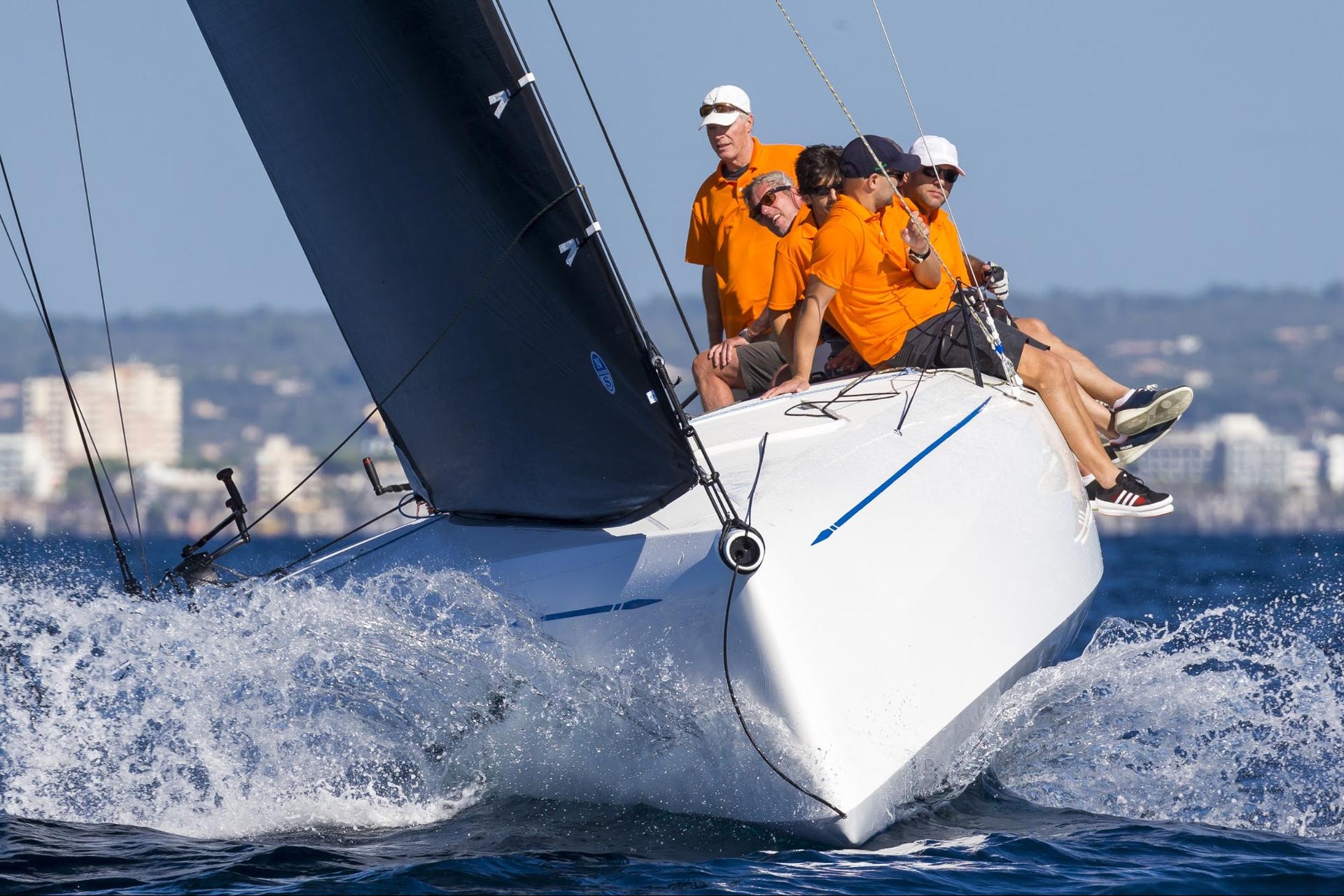
CLUBSWAN 36 2020 OUTLOOK
CLUBSWAN 36 2020 OUTLOOK
Bright Future for Sail Development with North Sails
📸 Stefano Gattini / The Nations Trophy 2019
2019 marked the worldwide debut of the new ClubSwan 36, and getting the first boat sailing was a big step. Our ClubSwan 36 experts all played a part in getting the boat up to speed: working closely with the yacht designers, understanding the rig configuration, and testing our sail designs.
Even before the first boat hit the water, we were working on sail designs that would give clients the best performance. “Being in direct contact with the class and Swan helped us get ahead of the curve,” says North Sails class expert Arnd Howar. “We adopted our designs to the latest adjustments by working directly with the Swan team and designers.”
Four boats competed in the Nations Trophy at the end of the summer, and North Sails couldn’t be more excited about the future of the class. With 15 boats in production, there will be a strong fleet by the end of 2020.
“The ClubSwan 36 is the perfect size,” says Arnd. “No grinders are needed, no ‘super’ athletes or extra strong sailors are required. The boat is very manageable for anyone to race well. 3Di helps keep the sail weights down and there are enough jobs onboard to keep six sailors busy and enjoying sailing the boat.”
📸 Stefano Gattini / The Nations Trophy 2019
The 36 is fun to sail because it’s designed well, he adds. “It’s fast and maintains the lifestyle brand of Nautor Swan. There are many events in great sailing locations to meet new people, get some great racing in, and enjoy the social scene. Racing the ClubSwan 36 will give sailors the chance to race against a wide spectrum of talents.”
To prepare for the 2020 season, North will continue to refine the sail designs to match new class rules. “Developments such as a higher ISP (higher spinnaker hoist), that was decided after hours of sail testing,” Arnd explains.
“2019 was a test for everyone, and now we can spend more time fine-tuning the best products for clients,” he says. “Because of the open communication between North and boat owners, we can ensure the best possible result for clients at the very first event in Palma in 2020.”
Class expert Stefano Orlandi is also looking forward to the second season. “Our design leader will be Giovanni Cassinari, one of the top designers here at North Sails. Combining our technology and knowledge with his—we couldn’t think of a better person for the job.”
📸Giulio Testa / The Nations Trophy 2019
Stefano is hoping to get more training events and clinics on the calendar, to work one on one with each team and each owner. “This year we will get even more involved with the class, as well as with the boat yard and designers.”
Marko Marinovic, the North Sails expert in Split, Croatia, has been quite hands-on when it comes to the ClubSwan 36 push. His team spent much of September 2019 testing the class inventory (mainsail, light/medium jib, heavy air jib, A2 and A5), and getting ready for the Nations Cup. “Every day spent on the water is a good thing,” he says. “We are always finding ways to improve. The success at the Nations Trophy was a great way to end the racing season, and the team was chomping at the bit to make more progress in sail development.
“There is no doubt 3Di RAW fits the bill for this boat,” Marko continues. “It will be crucial for boat speed.”
Winter plans include evolving the class sail design, says Ivan Kljakovic-Gaspic, North Sails client and ClubSwan 36 fleet manager in Croatia. “We’ve got all we need here in Split, with three boats to maximize our time on the water. Working with Nautor Swan and North, we plan to finalize the tuning guide and compete in the winter league, which is Split’s winter sailing series.”
North Sails Croatia plans to set up two clinics leading up to the first event of the season: one in March, and one in April. There will be five regattas this season, ending with the World Championship in October. “We are very excited to see the fleet progress,” says Marko.
“In the last few weeks, Giovanni Cassinari and Michele Melandra have been working hard to make improvements in sail shape,” Stefano says. “Our goals this year are to get our clients at the top end of the podium. A new boat means a new challenge, and that’s what we enjoy here at North Sails.”
📸 Stefano Gattini / The Nations Trophy 2019
READ MORE
READ MORE

J/70 SOUTH AMERICAN UPDATE
J/70 SOUTH AMERICAN UPDATE
Fastest Growing One Design Class in South America
📸 Matias Capizzano
Just after North Sails swept the podium at the J/70 Chilean Nationals at the end of 2019, we sat down with Torkel Borgstrom to talk about class growth across the continent. He says the J/70 is growing in a very similar way to how the J/24 grew, thirty-plus years ago. With boats built in Buenos Aires, “It is becoming one of the most important and competitive classes in South America. And most of the sailors here use North Sails, including the top ones, because they perceive that it’s an advantage in terms of performance.” The first South American country to build a fleet was Chile, about seven years ago. “Right now there are probably 30-35 boats, and the numbers are stable.”
Uruguay has another 30-boat fleet, he continues. “And Brazil was one of the first countries that started with a J/70, but due to some restrictions on importation, they only have around ten boats. But every time they participate internationally, they do well.” Add in another 35 boats from Argentina, and it’s easy to see why Torkel says the J/70 “has become one of the strongest and most interesting one design classes. The regattas are very, very competitive, and normally there are a lot of boats participating.”
In Brazil, a lot of professional sailors have moved into the J/70 because the competition is so good. In the rest of South America, Torkel explains, the approach is more like in the US; most sailors are either amateur or people work in the industry, but don’t specialize in J/70s.
“It is becoming one of the most important and competitive classes in South America. Most of the sailors here use North Sails, including the top ones, because they perceive that it’s an advantage in terms of performance.”
The J/70 South Americans in Punta del Este had great conditions but only 32 boats participated, which surprised Torkel—though he wasn’t surprised to see a Argentinian tie for first. “Most of the sailors are new, and so when you put together a good crew like the one Guillermo Parada has, they normally will win most of the events.” As for the disappointing turnout, he blames it on the current political instability, particularly in Chile but also in Argentina. “Every time we have elections here, things get a little bit unstable. So I believe this is the reason why we haven’t seen more boats.”
Based on what he’s seen so far, Torkel is excited about the future of the class. “In January, we have the Rolex Atlantic Circuit regatta, which is one of the most important ones here. I expect to see more boats sailing in that event.” Longer term, “the good sailors ended up sailing in the J/24s, and the same thing is going to happen with the J/70s. So you will see more people from South America, Argentina especially, going into the international events and starting to do much better every year. We foresee that in the next five to eight years, we’ll continue growing slowly, and continue improving in terms of competitiveness.”
📸 Matias Capizzano
READ MORE
READ MORE

ROLEX SYDNEY HOBART 2019 OVERALL WINNER
ROLEX SYDNEY HOBART YACHT RACE 2019 OVERALL WINNER
Matt Allen and Crew Named Overall Winners, North Clients Crowd IRC Podiums
📸 Andrea Francolini
Longtime North Sails customer Matt Allen is once again hoisting the Tattersall Cup, in celebration of Ichi Ban’s victory as Overall Winner of this year’s 628 mile race from Sydney to Hobart. Matt also won this prestigious trophy in 2017, and this is another fitting victory for a yacht named “number one” in Japanese.
Ichi Ban’s sail inventory includes a full 3Di upwind package and NPC Downwind spinnakers. Matt works closely with the North team in Australia, and North experts Rob Greenhalgh and Dick Parker were both onboard for the 2019 win.
The Ichi Ban team has been dialing in the TP52’s performance since first launching in the fall of 2017. But their competition has been doing the same, so Ichi Ban had to work hard to earn their 2019 title. “All the campaigns have really stepped up this year; people have tried to emulate what we have done,” Matt said. “There’s no doubt about the competition in this race—in the 44 to 55 footers alone, it is incredible. You wouldn’t find the competition we have in this race anywhere else in the world.”
Many other North Sails clients bested their own tough competition as well. North sails were on board every super maxi competing in the 2019 race, and North inventories took the top spots in seven of nine IRC classes and swept four IRC podiums. A special congratulations to Corinthian team Katwinchar, the oldest boat to ever compete in the RSHYR, which won the Grand Veterans Division.
READ MORE
READ MORE
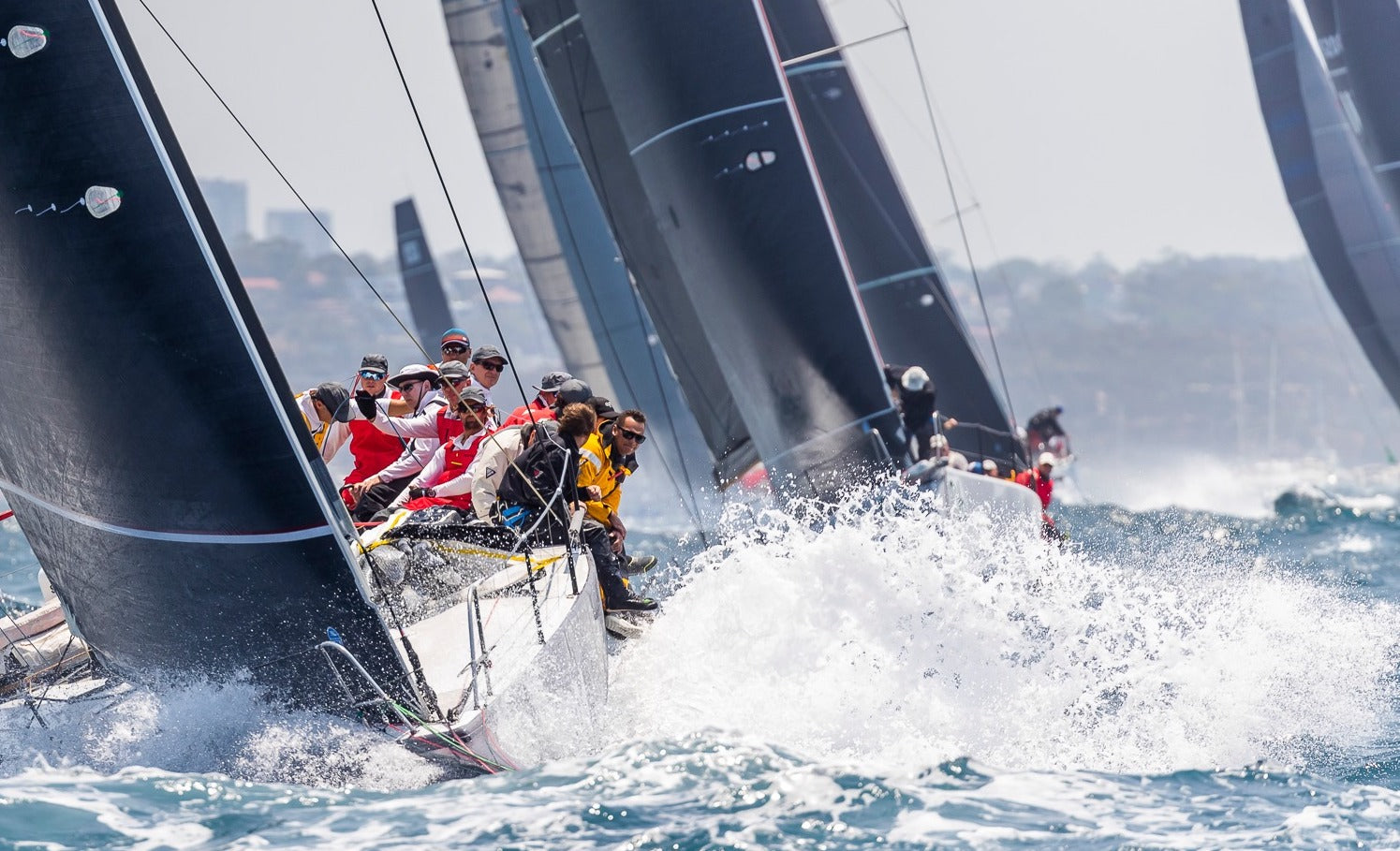
ALL EYES WERE ON SYDNEY HARBOUR FOR BOXING DAY
ALL EYES WERE ON SYDNEY HARBOUR FOR BOXING DAY START
157 Boats Set Off on the 628-Mile Rolex Sydney Hobart Yacht
📸 ROLEX / Carlo Borlenghi
The Rolex Sydney Hobart Race 2019 saw a fleet of 157 boats set off from Sydney and out to sea for the 628 nm trek to Hobart. It was picture perfect start conditions on Boxing Day as spectators lined the shores and watched online as the 2019 fleet made its way out of Sydney Harbour.
Amongst the fleet are the big five supermaxis as well as Corinthian teams, made up of family and friends who may be checking an item off their bucket list. Considered one of the most difficult offshore races in the sport of sailing, simply crossing the finish line is an accomplishment; winning is the ultimate honor.
We’ll be keeping an eye on the race tracker over the next few days, and waiting in anticipation to see who collects line honors and then the overall winner in the 75th edition of this historic race.
📸 ROLEX / Carlo Borlenghi
📸 ROLEX / Carlo Borlenghi
View the race tracker to follow the 157 boat fleet as they make their journey from Sydney to Hobart.
READ MORE
READ MORE

KATWINCHAR: PREPARING FOR THE UNEXPECTED
CORINTHIAN ENTRY KATWINCHAR IS RACE READY
Oldest Yacht to Race Sydney-Hobart Prepares for the Unexpected
For 75 years, the Rolex Sydney to Hobart Yacht Race has been a Boxing Day highlight for the sailing world. The race attracts a wide range of boats and sailors, from 30-footers sailed by family and friends to the 100’ Super Maxis with professional race crews. While the big boats tend to attract the most attention, we’ll also be cheering on Katwinchar, the oldest boat ever to compete in the race.
Launched in 1904 at the Watney Brewery in England, the boat was a total wreck when Bill Barry-Cotter, a well-known Sydney boatbuilder, found her. Bill’s brother Kendall, who will skipper the yacht to Hobart, said the restoration took two years and over 10,000 man-hours to complete. “The intention was always to go to Hobart,” he adds.
To help this historic boat be competitive against more modern boats, Peter Antill from North Sails Sydney worked with Kendall and Sailing Master Michael Spies to design an inventory that would suit this classic. “The configuration is quite a bit different,” Kendall says. “You couldn’t just use modern technology, it had to be a mixture to suit this particular boat.”
The goal was “to try to get the best product we could for the boat at the time,” he continues. “So that was a combination of Peter and myself, going through and designing the sail plan and the types of sails that we wanted to use.”
Michael Spies says that the back and forth between skipper and sailmaker was really valuable. “Rather than telling us what we’re going to get, it’s been an open discussion.” He’s also looking forward to racing under both IRC and ORC. “Katwinchar is quite clearly the oldest boat to have ever done this historic race. The parity created by the IRC rule and the ORC rule gives us the opportunity, hopefully, to be competitive against the more modern boats.”
Katwinchar will join the estimated 150-strong fleet at the start in Sydney Harbor on December 26th sporting her updated sail configuration, which features 3Di sails and a furling Code Zero.
“I hadn’t had the opportunity to sail with Code Zeros before,” Kendall says. “It’s been a great learning curve to find out how efficient they are; actually, they’re brilliant.”
READ MORE
READ MORE

MARK RICHARDS ON WILD OATS XI AND NORTH SAILS
MARK RICHARDS ON WILD OATS XI AND NORTH SAILS
Nine-Time Line Honours Winner Ready to Race in Sydney
Wild Oats XI, under the leadership of skipper Mark Richards, is an undeniable success story. The program has collected Sydney to Hobart line honors on nine separate occasions and was the first boat to claim the “Treble” race record, line honors, and overall winner. First launched in 2005, this 100’ SuperMaxi will sail the 2019 Sydney to Hobart Race 1300 kilos lighter than a year ago. And North Sails is proud to be their sailmaker of choice.
“The sail evolution over those 15 years has been phenomenal,” Richards says. “We’re a lot faster than we have been in the past with the reaching tight luff sails, so that’s all pretty exciting stuff. We’ve got a brand new mainsail, which is 40 kilos lighter than last year’s.”
Richards credits the strong relationship with North Sails as a key factor in helping the team get to where they are today. “I’m really excited about this year’s race, because I think we’ve got the best sail inventory that we’ve ever had in the history of the boat.”
📸James Tomlinson / North Sails
READ MORE
READ MORE
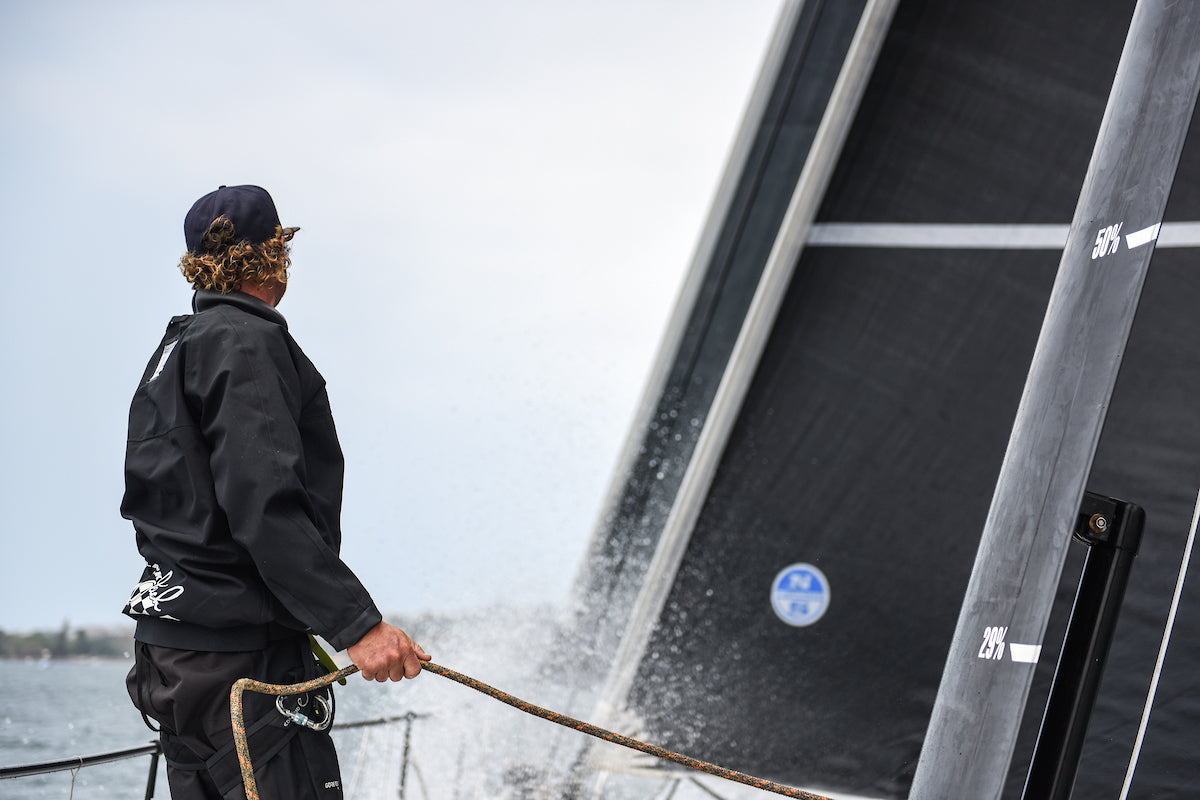
ONBOARD BLACKJACK FOR RSHYR PREP
ONBOARD BLACKJACK FOR SYDNEY-HOBART RACE PREP
Skipper Mark Bradford Talks 3Di While Test Sailing
Super Maxi BlackJack skipper Mark Bradford spent the days leading up to the 2019 Sydney to Hobart running through a pre-race work list, which included putting the boat’s new North 3Di sails through their paces before heading offshore.
The team allowed us to tag along for a training day, and naturally, we had to ask them questions about their sails. Here are the highlights of what we learned from a team that is always pushing boundaries.
3Di Carries Across the Range
BlackJack’s mantra is to be fast in light air, and the new lightweight 3Di sails have improved the boat’s performance under 8 knots. BlackJack has recently added Helix, further increasing the versatility of its inventory.
Durability Matters
3Di improves both strength and durability. “The miles and hours that we can put on the sails these days are just far superior to what we have seen in the past and what competing sailmakers can offer,” Bradford says. “North Sails engineering and manufacturing processes are second to none, and our confidence is extremely high that the failure rate will be next to nothing.”
📸James Tomlinson / North Sails
READ MORE
READ MORE

JOSH JUNIOR CLAIMS FINN GOLD CUP
JOSH JUNIOR CLAIMS FINN GOLD CUP
North Clients Dominate Top 10
As the mercury hit 42 degrees Celsius in Melbourne Australia, the on-the-water action heated up as well at the 2019 Finn Gold Cup. The world championship of the Olympic heavyweight dinghy, seven different countries and three continents were represented in the top eight—and all of those sailors chose North Sails.
Josh Junior put in a strong, consistent performance to take the top spot, the first Finn Gold Cup win ever for a Kiwi. Starting in the class six years ago and working with Andy Maloney and coach Andrew Murdoch, he won two races, had only three finishes out of the top five, and led the event from day two.
With the 2020 Olympics only months away, many sailors were also competing for the chance to represent their country in Enoshima, Japan—another place where heat and humidity are likely to make the Finn’s physicality and free pumping a real challenge. The 2019 Gold Cup was a key regatta on the Royal Brighton Yacht Club schedule, and as host of the 1956 Olympic Games they put on an excellent championship.
Congratulations to all. We’ll be following along in 2020!
Results after medal race (medal race results in brackets)
1 NZL Josh Junior 44 (7)
2 NED Nicholas Heiner 52 (3)
3 HUN Zsombor Berecz 53 (2)
4 GBR Giles Scott 67 (8)
5 AUS Jake Lilley 72 (1)
6 NZL Andy Maloney 79 (9)
7 CRO Nenad Bugarin 92 (5)
8 CAN Tom Ramshaw 95 (10)
9 ESP2 Joan Cardona Éndez 98 (6)
10 TUR Alican Kaynar 100 (4)
Browse the Finn inventory here
Nicholas Heiner 📸Robert Deaves
Nenad Bugarin 📸Robert Deaves
Gilles Scott 📸Robert Deaves
Andy Maloney 📸Robert Deaves
READ MORE
READ MORE
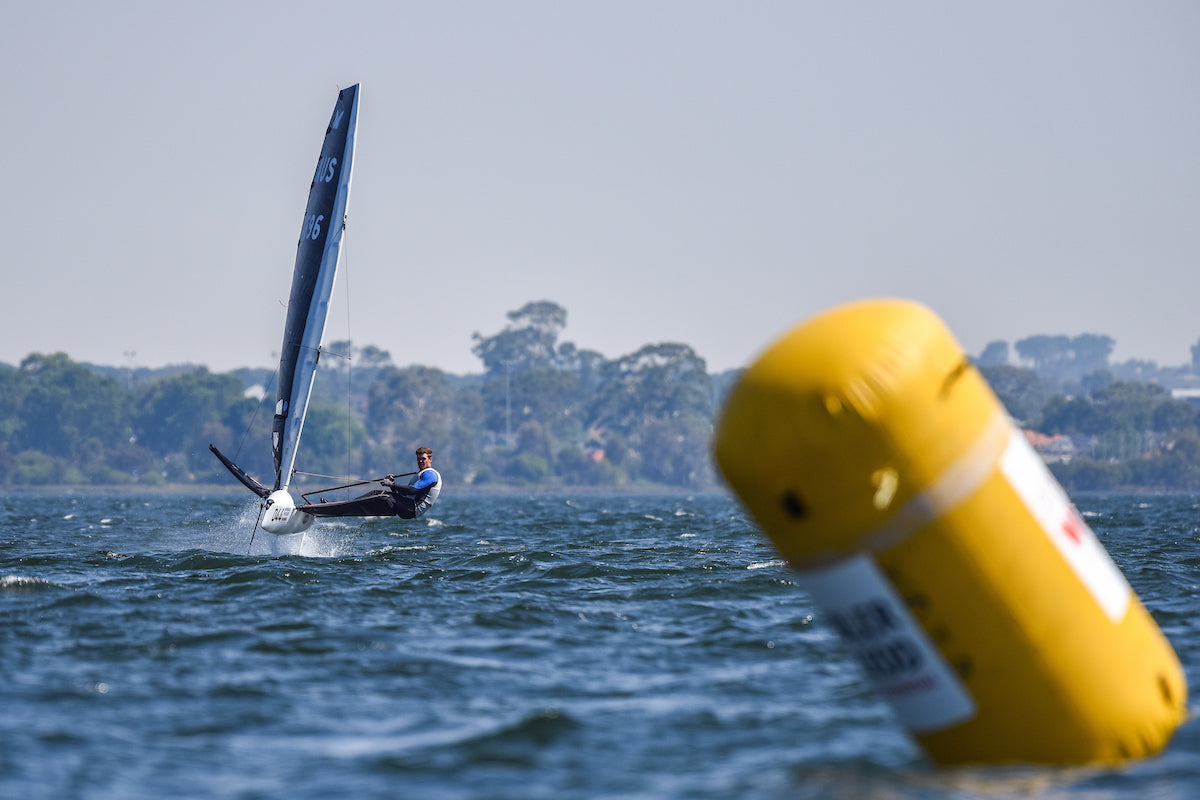
INSIDE THE 2019 MOTH WORLDS WITH TOM SLINGSBY
INSIDE MOTH WORLDS WITH TOM SLINGSBY
The North 3Di Decksweeper Delivered Winning Boatspeed
North Sails introduced a line-up of four new high-performance 3Di Moth sails in June 2019, including the Vi-8DS Decksweeper 3Di Mainsail which Tom Slingsby chose in his bid to be crowned World Champion. Tom Slingsby used the North Decksweeper across the range, from 10-25 knots to help secure his newest title. The all-purpose 3Di mainsail delivered the boat speed Slingsby needed to win every race he sailed in this highly competitive one design class.
Learn more about the new North designs for the International Moth on NorthSails.com.
READ MORE
READ MORE
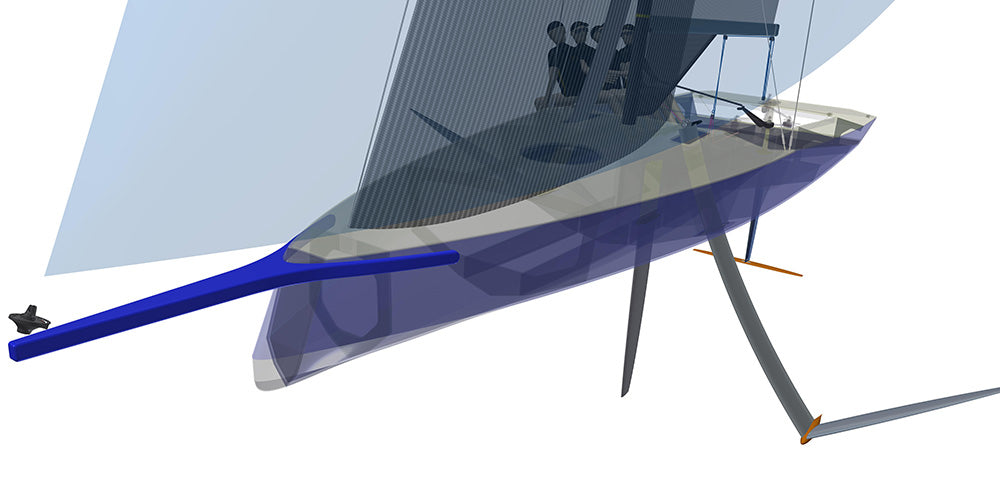
YOUTH AMERICA’S CUP
North Sails New Zealand is helping to develop new foiling monohulls for the Youth America’s Cup, which begins in November 2020 and ends in March 2021, just ahead of the main event.
READ MORE
READ MORE
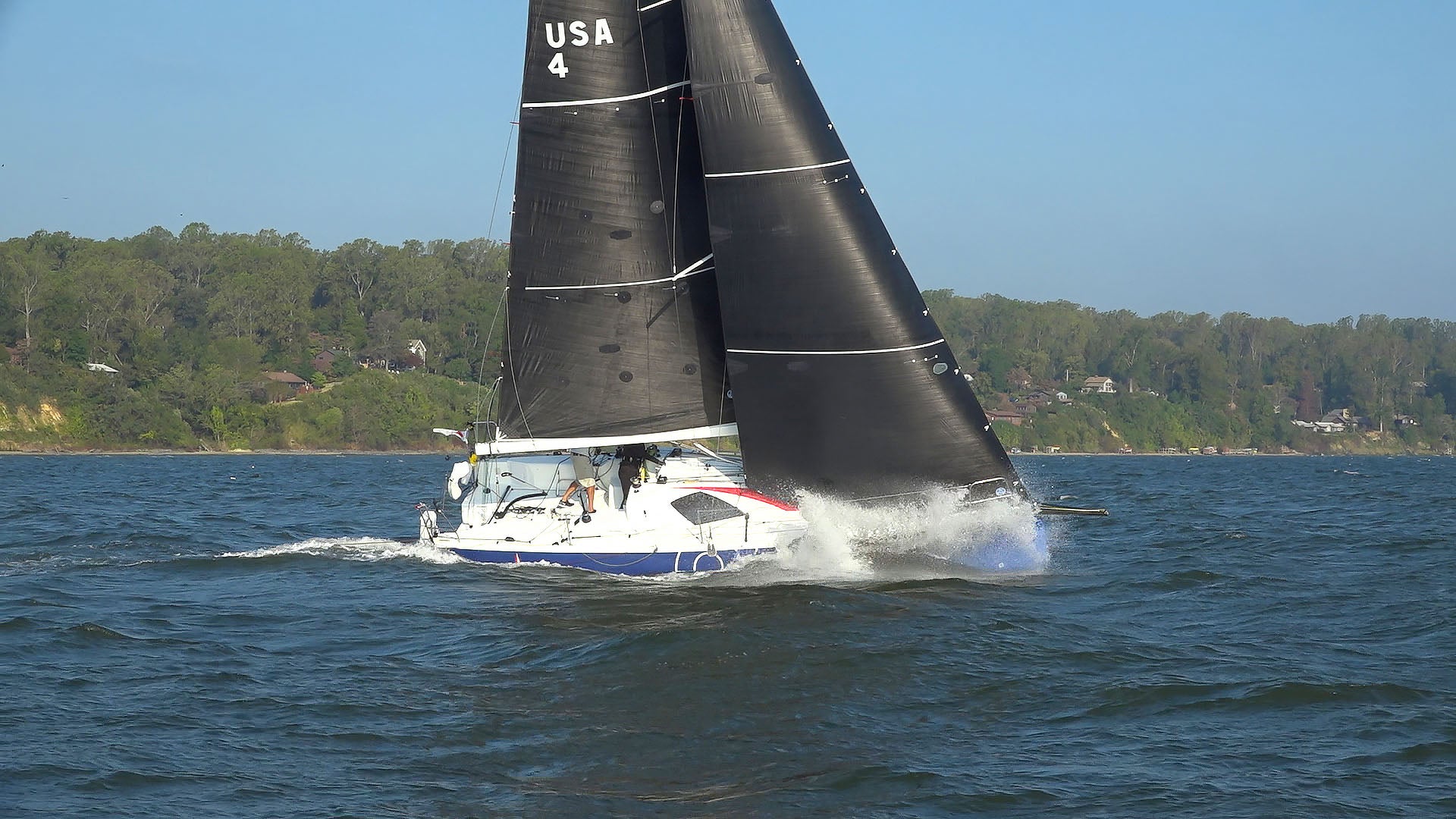
PARTNERING TO PROMOTE DOUBLE-HANDED RACING IN NORTH AMERICA
PARTNERING TO PROMOTE DOUBLEHANDED RACING IN NORTH AMERICA
Ken Read Onboard the Jeanneau SunFast 3300 for Ft. Lauderdale to Key West Race
📸 Jeanneau
Jeanneau America announced today that world-renowned American yachtsman and North Sails President Ken Read will campaign the new Jeanneau SunFast 3300 in the double-handed division of the 2020 Fort Lauderdale to Key West race along with navigator Suzy Leech. The plan is to continue with a schedule that includes other events on the double-handed offshore sailing calendar in 2020, a discipline that is growing in popularity especially after the announcement of a mixed gender double-handed offshore class in the 2024 Olympics.
From the drawing board of Daniel Andrieu and Guillaume Verdier, the SunFast 3300 is the all-new offshore race boat from Jeanneau. Designed for short-handed teams who are looking for a high performance platform, the boat is capable of long distance racing competitively under modern rating rules. “It’s an exciting move for us,” said Nick Harvey, president of Jeanneau America. “Short-handed sailing has been growing in interest globally, and Jeanneau is proud to develop a production boat that is capable of taking those sailors where they want to go.”
North Sails has been an early partner in the development of the SunFast 3300 globally, and now in North America. “Jeanneau America approached us, and worked with our 3300 class leader Allan Terhune early in the process of bringing the boat to the North American market,” explained Read. “Double-handed racing is catching on worldwide, inspired by the passion and growth of short-handed sailing in countries like France and England. Developing a sail plan and shorthanded inventory with Jeanneau began with our North Sails team in France, and we are now taking it a step further with a larger sail plan on the boats imported to North America. The SunFast 3300 sail package is built to work in any handicap rule. It has been a fun project so far, but now comes the hard work on the water!”
“The product we have put on the water is second to none,” continued Harvey. “Anyone in North America looking to grow in offshore racing should give the SunFast 3300 a serious look.”
The first double-handed event for Read is the 2020 Fort Lauderdale to Key West Race. This event is a staple of the SORC circuit, and race organizers are embracing double-handed racing by adding this new class. The 120-mile race is historically a great challenge, heading south between the Florida Keys and the tricky Gulf Stream before finishing in sunny Key West, Florida.
“Now that the Fort Lauderdale to Key West Race has decided to do a dedicated double-handed class, this is a shout out for boats and teams to come on down and have some fun. We can all learn together. As double-handed sailing begins to develop here in North America, we first and foremost have to make it fun. And this race is always a blast!,” said Read, “It’s brand new for Suzy and me and we can’t wait to get started.”
READ MORE
READ MORE
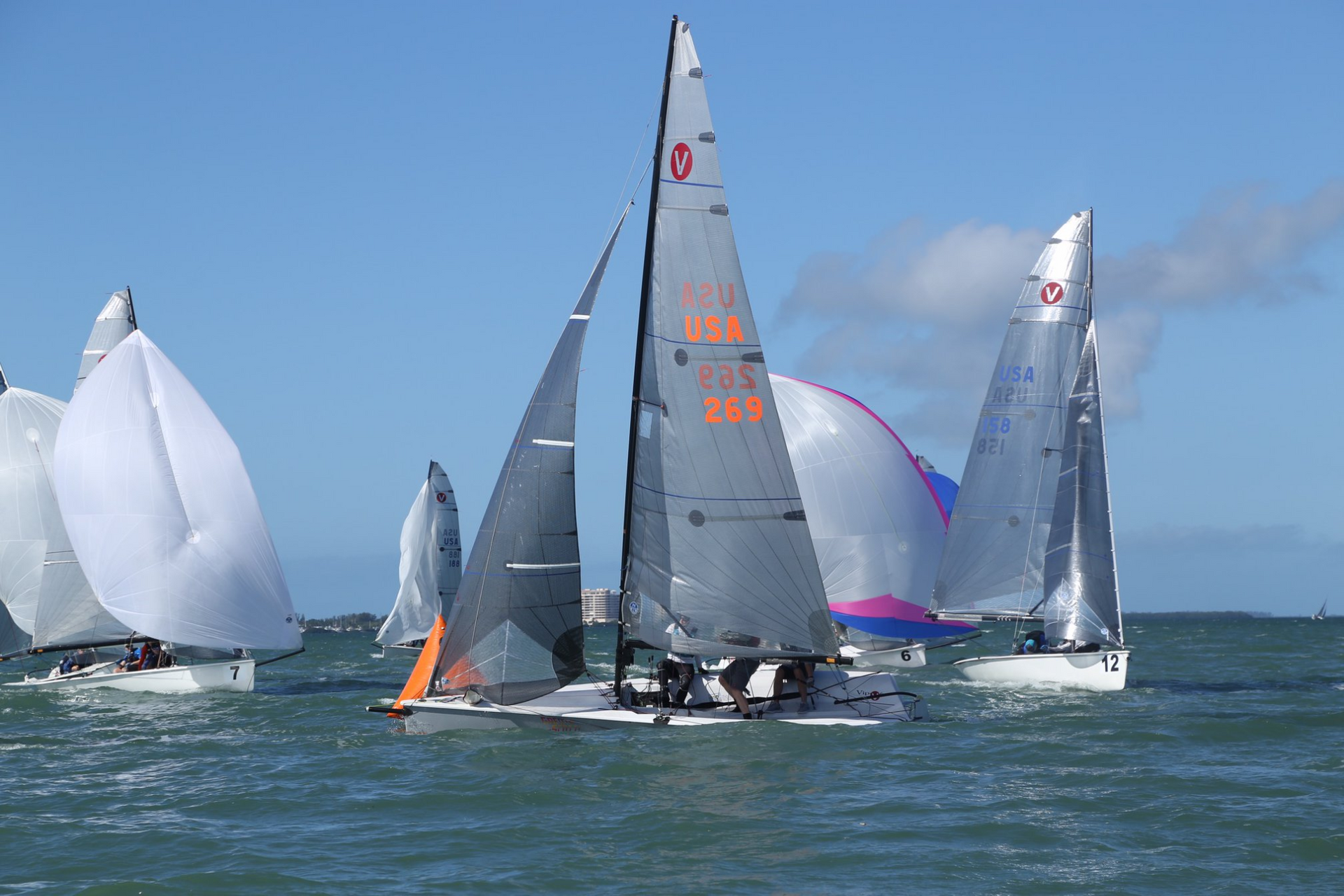
SARASOTA WINTER SERIES #1: 4 LESSONS
SARASOTA WINTER SERIES #1: 4 LESSONS
Vipers And VXOnes Get The Winter Party Started
Jackson Benvenutti, winner in the Viper 640 class. 📸SJTStudios
Friday
With thunderstorms looming offshore for the setup day, Vipers and VXOne teams focused on getting their boats set up and tuned. North experts Jackson Benvenutti and Austin Powers moved from boat to boat, helping all the teams dial in their base rig settings. The day ashore was actually quite valuable, because setup takes time. A reminder to be patient, don’t rush establishing your base setting!
Saturday
Teams were rewarded for their patience with champagne conditions on the first race day. A warm 10-15 knot breeze delivered four awesome races. After racing, debriefs were run for both the Viper and the VX fleets.
Two Lessons From Saturday:
Teams that were aggressive in tightening the headstay (by increasing shroud tension and adding blocks) found their boats more manageable in the puffy conditions.
Vang usage/tension shows whether your rig is right. If you are maxed out on the vang more than ¾ of the time, tighten the rig. If you are not using any vang, loosen the rig to power up the sail plan.
Hayden Bennett, 2nd place VX One class 📸SJTStudios
Sunday
Sunday delivered lighter breezes, from 5-10 knots (and sometimes less than 5 knots later in the day). The Race Committee managed to squeeze in another 4 races, Jackson Benvenutti, Jesse Fielding, and Nick Ward took the Viper win. “Jackson set us up for fast with the latest inventory from North Sails,” Jesse said. “It was my first time in the Viper, a fun boat. I can’t wait for the next race, because Sarasota always delivers!”
Nick signed on only two days before the regatta, after the original third crew member had to back out, since he was already in Sarasota for a family event. As a past Viper owner, he was psyched to be part of what turned out to be the winning team!
North boats also took 3 of the top 5 spots in the VXOne, along with a partial inventory for winner (and new class president) John Potter.
Two Lessons from Sunday:
Pressure was king, and there were big holes in the middle of the course. Teams coming from the edges had success.
Maintaining a high average speed downwind was crucial. There was a big penalty for teams that soaked too low, because it took so long to get back up to speed.
Travis Yates & Mike Meighan, 2nd place in the Viper 640 class 📸SJTStudios
Shoreside Local Knowledge
Some popular hangout spots after sailing were the Daiquiri Deck and the local Irish bar. We look forward to seeing everyone there during the next event in January!
North Scoreboard:
Viper 640: 1,2,3,4,5,6,8,9,10 – Congrats Jackson Benvenutti
VXOne: 2, 3, 5, 6, 7, 8, 9, 10
Kelly Ann Cole (Driver), Sarah Wilkinson and Katy Hannan 📸SJTStudios
📸SJTStudios
READ MORE
READ MORE

SLINGSBY DOMINATES AT MOTH WORLDS
SLINGSBY DOMINATES AT MOTH WORLDS
The New World Champion Credits 3Di Decksweeper for his Winning Boat Speed
When North Sails announced four new 3Di Moth sail designs six months ago, class leader Rob Greenhalgh said “I am confident Moth sailors will reap the rewards on the race course.” This week, Tom Slingsby proved him right by sitting out the final day of the 61-boat Gold Fleet at Moth Worlds, after clinching victory with bullets in all but one race. Greenhalgh himself finished seventh, and six other North boats finished in the top 10.
“I’m really happy with the North Decksweeper,” Slingsby said, shortly after cementing the overall win. “It’s been performing all the way through the range for me, from about 10 knots all the way to 25-plus. It’s the only sail I’ve used all week, and in all conditions I’ve had a lot of boat speed.”
He described his final race day as a beautiful afternoon; “15-25 knots of seabreeze here on the Swan River.” With such impressive boat speed, only a breakdown, getting tangled up with another competitor, or a starting penalty could lose him the championship. “The final race, I had a really good start. I was concerned I was OCS, but it was all clear.” Once he got out in front, he managed the traffic well and crossed the finish line first, again.
To prepare for the Worlds, Slingsby trained with Greenhalgh and Scott Babbage, who finished fourth behind Tom Burton. “We’ve got a really good training group. We’re able to slowly make refinements and then check it against a stable platform. So every time we made a change, we’d see how it would go against the baseline. If it worked, we’d all move to that concept. If it didn’t work, we’d go onto the next thing. We just constantly made little steps, and it’s shown in the results—all of us are in the top group. It’s really satisfying that our little group’s done so well.”
Tom thinks the Decksweeper could also win next year’s Worlds in Weymouth, UK. “It’s also a flat water, windy venue. There might be a couple of little refinements, but the concept is there. What North has done is a great product, and I think you could rock up to next year’s Worlds with the sail right now and be competitive.”
📸 James Tomlinson
READ MORE
READ MORE
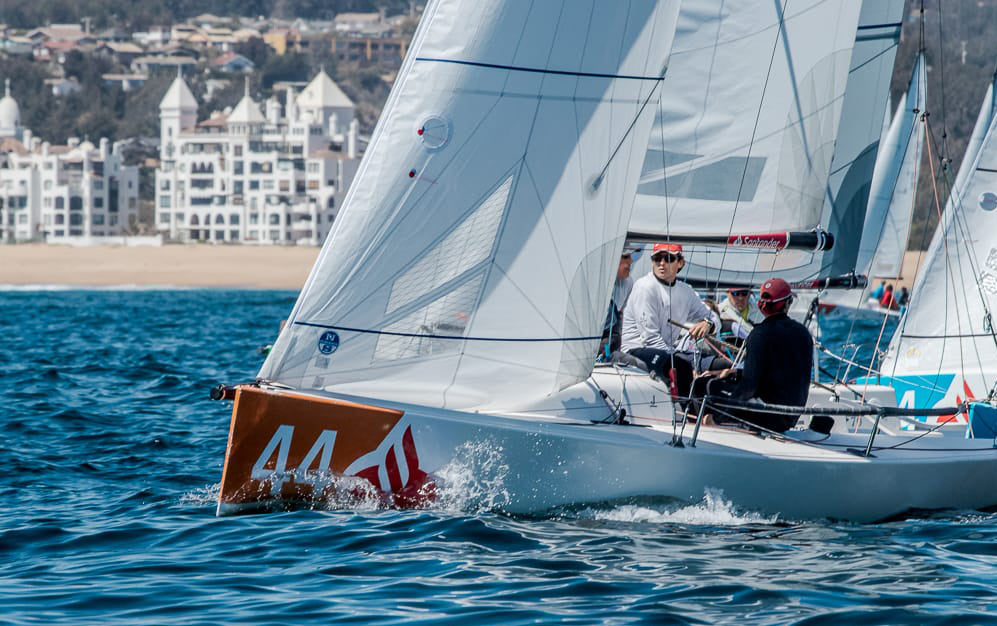
FULL PODIUM SWEEP FOR NORTH SAILS AT J/70 CHILEAN NATIONALS
FULL PODIUM SWEEP FOR NORTH SAILS AT J/70 CHILEAN NATIONALS
Designs Dominate in Algarrobo
Pablo Herman’s New Wave, 2019 Chilean National Champions. 📸 Benja Sans
26 boats sailed the J/70 Chilean Nationals in Algarrobo, Chile, December 13-15. After nine tight races, the winners were on New Wave: two Herman brothers, Felipe Echeñique calling tactics, and Kake “priest” Montes on the bow. “They were very consistent in all conditions,” Matias Seguel, who skippered the second place team, says. “We sailed in really light up to 20 knots. New Wave used the XCS-2 mainsail, J-6 jib, and AP-2 spinnaker. That gave them great speed, and combined with great starts and going the right way they proved they were best.”
Matias’ own VOLVO team finished second with the same sails they’ve used for the last two seasons (XCS-1 main and J-6 jib). Third was the talented family on Ducasse, a father with 4 of his 7 sons sailing together. “They’ve won many local championships using the XCS-2 and J-6,” Matias says. “It was awesome to have almost all the top Chilean sailors sailing together in Algarrobo for a great event that was very well organized. Our J/70 class is our highest level local class, and it’s great to have the chance to race at an international level here at home.”
Matias Seguel, 2nd place. 📸 Benja Sans
Team Ducasse, 3rd place. 📸 Benja Sans
READ MORE
READ MORE
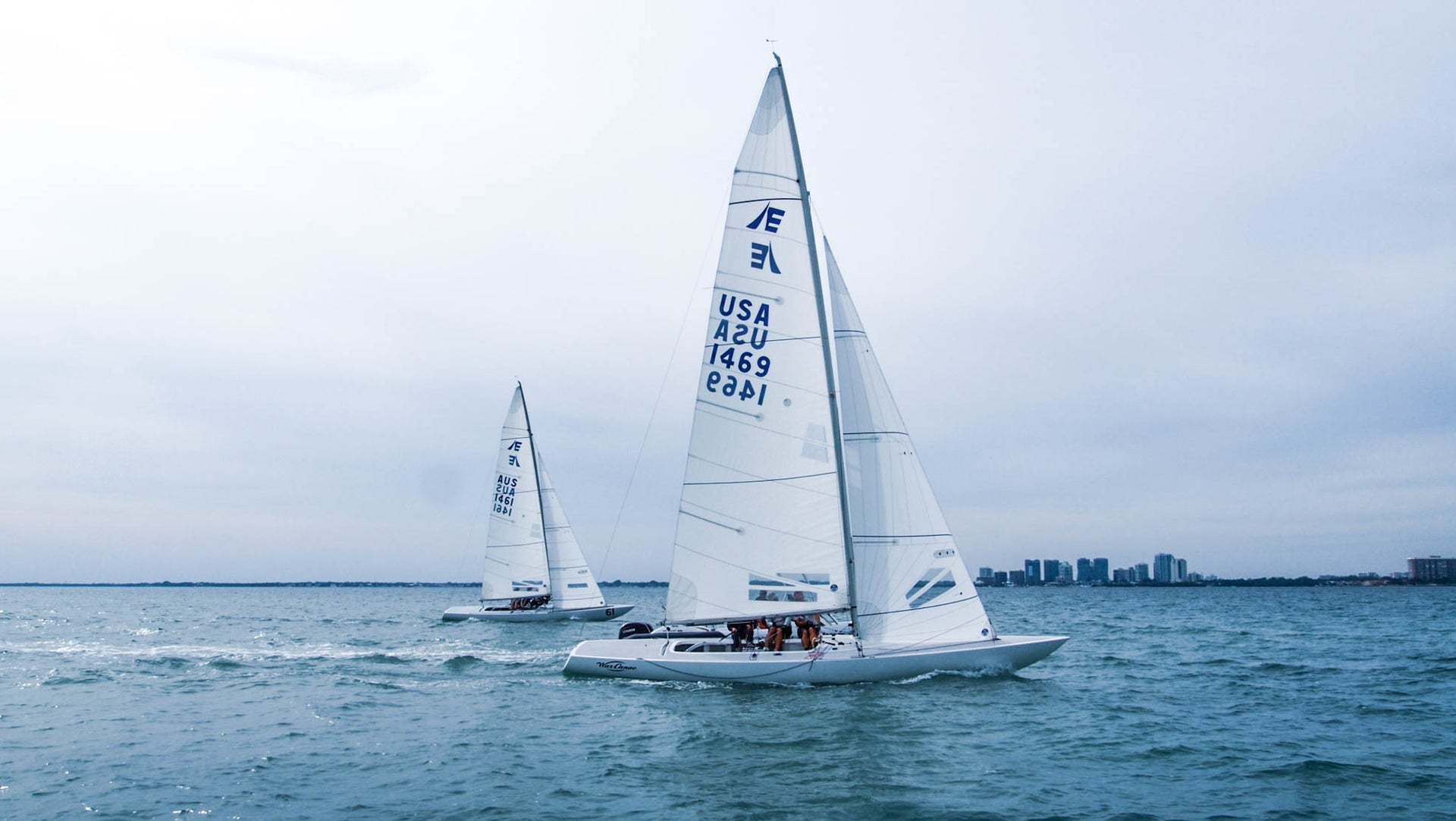
ETCHELLS BISCAYNE BAY SERIES: LOUIS PIANA CUP
ETCHELLS BISCAYNE BAY SERIES: LOUIS PIANA CUP
Podium Sweep in Miami
The opening regatta of the Biscayne Bay Series served up tricky conditions for a fleet of 50 Etchells, a larger fleet than previous years. North Sails were onboard 8 of the top 10 finishers, as well as 12 of the 14 Corinthian teams. Congratulations to Peter Vessella, first place in the Corinthian division.
5-10 knot breezes allowed for four races over two days. The winning team on Steve Benjamin’s Stella Blue combined clean starts with excellent boat speed to control their own destiny. “Only Benj’s team and Scott Kaufman’s team had all single digit finishes,” Skip Dieball explains. “It’s such a tough fleet, and if you get off the line in bad shape, chances are you’re going to have a high number. It’s very difficult to get back.”
The FR-2 is an evolution of the Full Radial, but with some long overdue tweaks to shape and panel orientation. It is a fantastic sail.
Conditions were perfect for the PCF-M mainsail, LM-2L jib, and VMG spinnaker, but Skip’s team did test out the new FR-2 spinnaker for the last race and were quite impressed. “Ultimately, this new FR-2 will replace our Full Radial spinnaker,” he says.”The FR-2 is an evolution of the Full Radial, but with some long overdue tweaks to shape and panel orientation. It is a fantastic sail. We also looked at the new LM-6R and MAL jibs in our practice sessions. Both are beautiful out of the box and set up perfectly. We will be updating our tuning guide for 2020 and will have all of our trim notes regarding these sails.”
North Scoreboard
Overall – 1, 2, 3, 5, 6, 7, 9, 10
Corinthian – 1, 2, 3, 5, 6, 7, 8, 9
Etchells next stop – The Sid Doren Regatta January 11-12.
READ MORE
READ MORE

SAVASANA SHINES IN J/70 WINTER SERIES OPENER
SAVASANA SHINES IN J/70 WINTER SERIES OPENER
North Designs Powered Top Five in Tampa
The weekend champion, Savasana, won with North Sails. 📸 Chris Howell
Sunny conditions welcomed forty-eight teams for the J/70 Winter Series opener, hosted by Davis Island Yacht Club. North clients dominated the fleet, taking the five top spots. Congratulations to Brian Keane and his corinthian team on Savasana for winning first place overall.
The weekend kicked off as usual with the Friday Porch Series, a series of practice races and starts for all competitors organized by North expert Jackson Benvenutti. All teams did practice starts and races to get warmed up for the weekend, followed by a comprehensive debrief led by coach Jackson. The club was packed with enthusiastic sailors sharing ideas, techniques, and information.
On Saturday the fleet only got one lap in before the wind shut off for the day. Once racing was abandoned, sailors were treated to chili and beer at DIYC, proving once again why it is one of the most hospitable clubs around. That evening, teams headed to some of Tampa’s many sports bars for NHL hockey action.
On Sunday morning, three races were sailed in a 5-10 knot easterly breeze that put a premium on clear air off the start and avoiding holes. Here are two lessons learned:
Steer With Your Weight Downwind
The spinnaker trimmer moved side to side (along with some help from the bow person) to help steer the boat, which reduced the amount of rudder movement needed.
Accelerate As A Team
Starting in light air, there is always a battle between allowing enough distance to accelerate without being covered by competitors. On final approach, our jib trimmer relayed distance to the line. That allowed trimmer and driver to be on the same page for the final acceleration.
The next regatta in the J/70 Tampa Winter Series is set to begin January 10, we look forward to seeing everyone there!
📸 Chris Howell
📸 Chris Howell
READ MORE
READ MORE
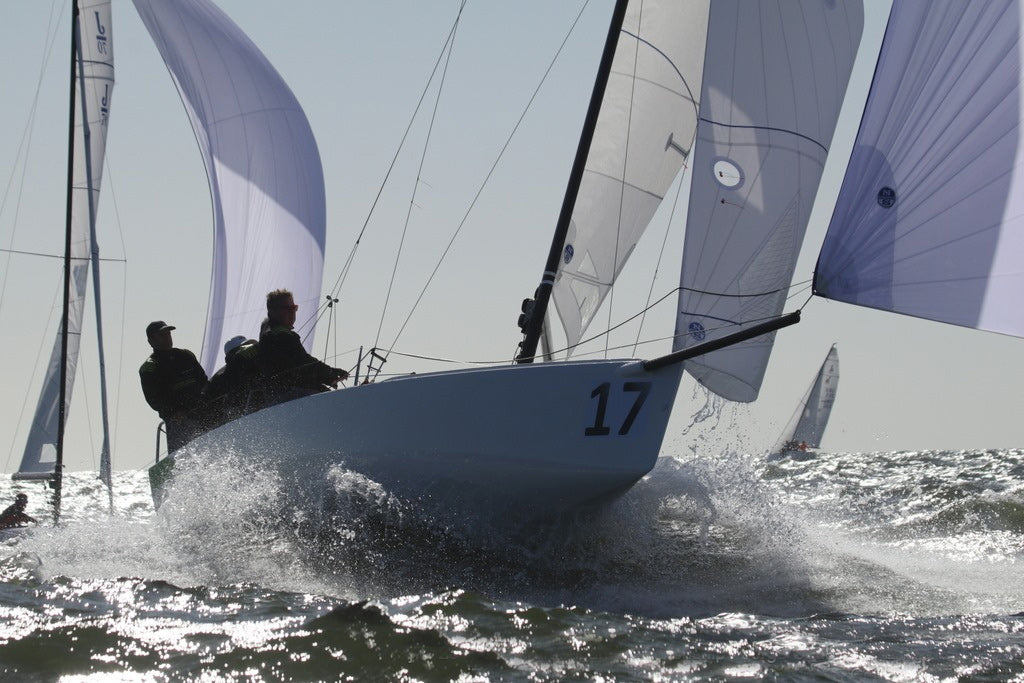
PODIUM SWEEP AT THE J/70 SOUTH AMERICANS
PODIUM SWEEP AT THE J/70 SOUTH AMERICANS
A Tie For First, With Two Different Mainsails
📸Jorge Cousillas
The J/70 South Americans were sailed in Punta del Este, Uruguay the first week in December. Giulio Desiderato, the mainsheet trimmer onboard winners Petite Terrible, says it was a really close championship. “The top two boats were tied and the third just one point behind. Punta del Este was a great racing venue, and we sailed in all the wind conditions, from really light up to 20 knots.” The italian team skippered by Claudia Rossi used the F-1 mainsail, J-2 High Clew jib, and AP-1 spinnaker.
“The F-1 mainsail compared to the XCS-2 has less luff curve,” Giulio points out, adding that it was the first time the team used that sail. “We really focused on the bend, trying to tune a straighter mast.”
Playing a lot with the lower and with the vang also helped control the bottom shape of the mainsail, he says. “A powerful shape allowed us to be really fast with the chop and cross waves of Punta del Este. Especially the last day, it was really puffy and patchy, so our goal was to find a set up that allowed us to play with the maximum range of backstay.”
In second place on countback was a team led by Guillermo Parada, who sailed in the Olympics for Argentina and is also helmsman of the TP52 Azzurra. Both Parada’s team and third place Enfante Terrible sailed with the XCS-2 mainsail, J-2 High Clew jib, and AP-1 spinnaker. North Sails designer Giovanni Cassinari was Enfante Terrible’s main trimmer.
“It was a great event, really well organized, and with great sailing conditions,” Giulio concludes. “And it’s been great training for us, looking forward to our objectives for the 2020 season.”
Related articles:
Which J/70 mainsail is best for your team?
How to choose the best J/70 jib
Learn more about the world’s fastest J/70 designs.
Starting line in Punta Del Este. 📸Jorge Cousillas
Claudia Rossi’s Petit Terrible, 2019 south American Champions 📸Jorge Cousillas
📸Jorge Cousillas
READ MORE
READ MORE
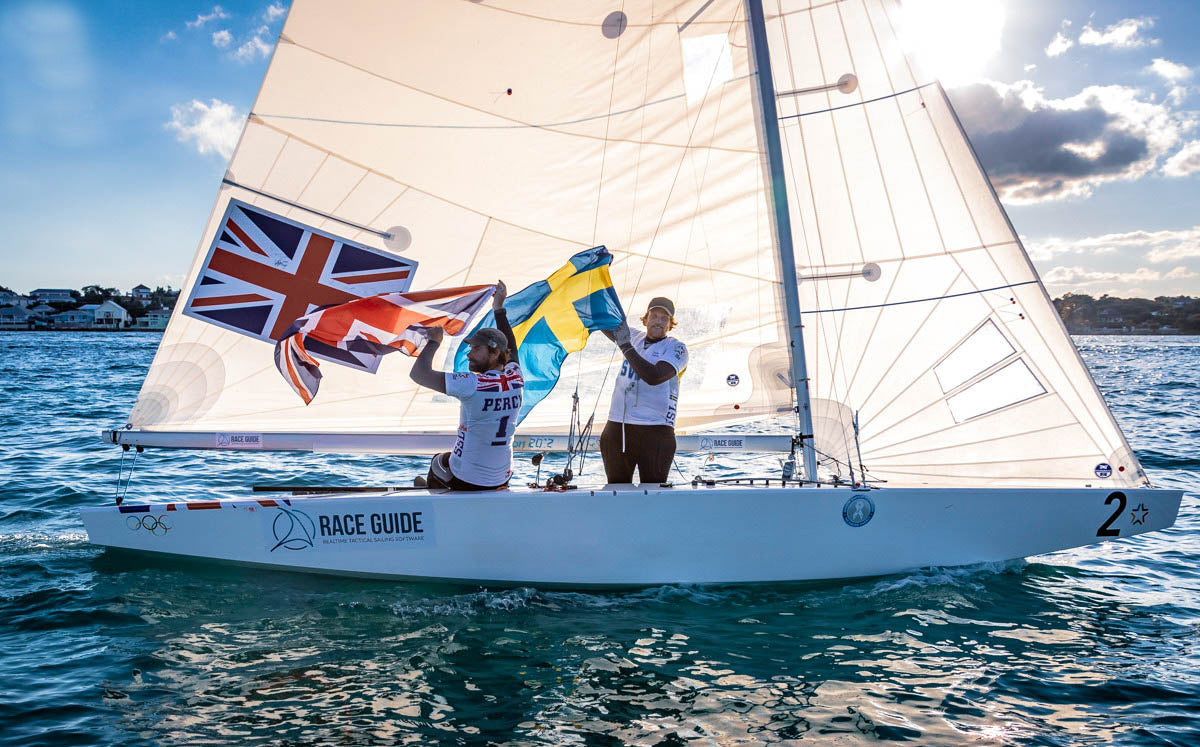
NORTH SAILS POWERS STAR SAILORS LEAGUE WINNERS
NORTH SAILS POWERS STAR SAILORS LEAGUE WINNERS
Iain Percy & Ander Ekström Take Home the Big Prize
23 of the world’s best sailing teams gathered in Nassau, Bahamas for the seventh edition of the Star Sailors League Finals. With Olympic medalists lining up with world champions from a variety of classes in a knockout format, it was a battle right from the first start. Four days later, a too-close-to-call finish gave the British/Swedish duo of Iain Percy and Ander Ekstrom a tiny victory over the French team of Xavier Rohart and Pierre-Alexis Ponsot. Both teams finished only meters ahead of Norwegian Evind Melleby, who sailed with American Josh Revkin.
The top two teams race with North Sails and were fast throughout the wind range. Iain Percy used the same M-16 mainsail that helped him win a silver medal at the 2012 Olympics and a new J-115 full radial jib, and he felt they were incredibly quick during the finals. Xavier Rohart, who used the lighter air J1-R5 jib, said, “The boat was very easy to sail and really, really fast, I just had to try and go the correct way.”
The M-16 design is ideal for softer rigs. The more recent M-25 design is optimised for the newer stiffer masts, though it can also be used with confidence on other masts.
The North designs are faster than ever. The SSL result, combined with the victories at the Eastern and Western Hemispheres and the North Americans, proves that there are no better Star sails on the market.
Star World Champion and North Sails expert Eric Doyle also made the finals and was really impressed with the sails. “Our designs are faster than ever. The SSL result, combined with the victories at the Eastern and Western Hemispheres and the North Americans, proves that there are no better Star sails on the market.”
Congratulations to the top two teams on their excellent results, and also thanks to the Star Sailors League and Nassau Yacht Club for putting on such a fantastic regatta.
READ MORE
READ MORE
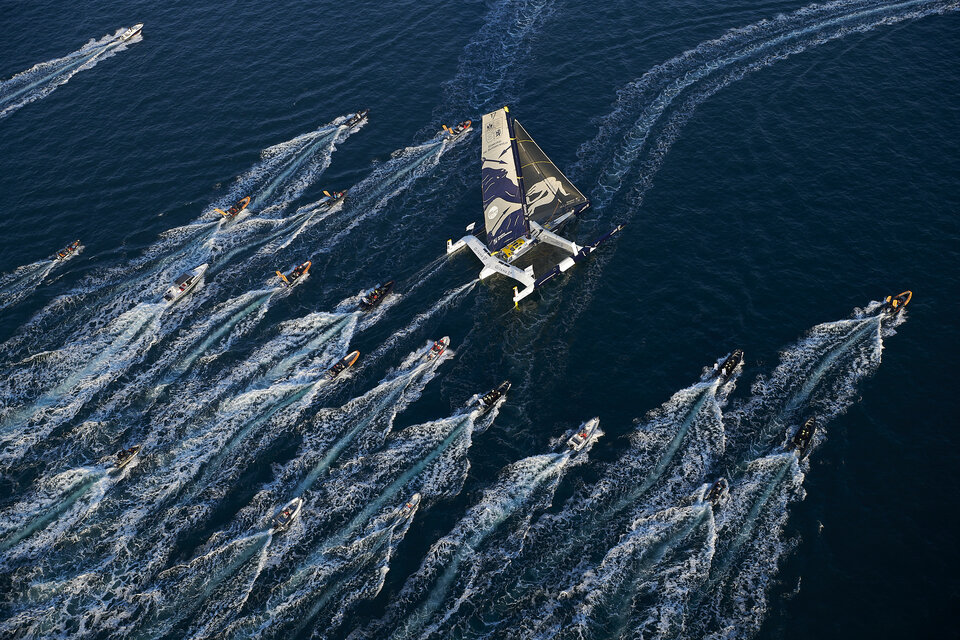
#NSVICTORYLIST: BREST ATLANTIQUES
#NSVICTORYLIST: BREST ATLANTIQUES
Second Major Offshore Victory For Gitana’s Edmond de Rothschild
📸 Yann Riou
This article was published at 0400 on Friday December 6th. At this time, MACIF & Actual Leader had not finished. You can track them here.
The 2019 edition of the Brest Atlantiques was known as the “flight of the giants,” with four super -charged Ultim trimarans driven by talented sailors and powered by North Sails 3Di. The race cast off on November 5th from Brest on a 14,000nm journey and has now reached an ending with three of four teams making it to the finish line. The winner, Gitana’s Maxi Edmond de Rothschild, crossed the finish line in the morning on December 5th, making this the second major offshore victory for the team this year, first being the Fastnet in August where they claimed multihull line honours. Covering a total of 17,084 nm at an average speed of 24.57 knots, and only 28 days to finish the race, skippers Franck Cammas and Charles Caudrelier, and media team member Yann Riou kept their Ultim on the edge as much as possible, racing as fast as they could with a clean and clear strategy to snag the lead on the fleet.
📸 Yvan Zedda
They didn’t have the lead until they crossed the Robben Island course off of Cape Town and worked hard to eliminate maneuvers and reel in Sodebo, who was at that time 13 hours and 53 minutes ahead. Battling the unstable tradewinds, Edmund de Rothschild couldn’t follow a course as direct as they had planned but they kept their heads in the game and to find the most optimum route across the Equator that would put them ahead of their competitors. Once they passed the Cagarras Islands, Actual Leader was close on their tail, so they knew they had to play it smart and sail fast to get ahead of the weather systems that were pushing in.
Once Edmond de Rothschild had less than 2000nm to go, they knew they needed to reach the Azores quick so they could catch the front where the conditions were sporty but most ideal for their plan to get ahead of the fleet. MACIF and Actual Leader were still close behind, but now battling each other for second place, giving Rothschild a chance to break free and extend. Unfortunately Thomas Coville’s Sodebo suffered a collision with a UFO, which forced them to make a pitstop in Cape Town giving them no other option but to retire. Before the incident they were well ahead of both Edmund de Rothschild and MACIF, so it was a bit of bad luck that changed the race for the team. As amazing as it truly was, when Edmond de Rothschild made landfall in Salvador de Bahia, their stay would last roughly 13 hours and 40 minutes, and when they got back in the game, it would only take them a solid two days to catch up and take back their lead.
Designed to literally fly offshore, Gitana’s Edmond de Rothschild is built for speed as is the standard for the entire Ultim trimaran fleet. Her sailors also deserve a big round of applause, both being recognized as Sailor of the Year at least once, if not twice as well as winning other major offshore races like the Transat Jacques Vabre, the Jules Verne Trophy, Route de Rhum and the Volvo Ocean Race. Spending time on the Ultim trimaran has given Franck and Charles that competitive edge, knowing how hard they can push the boat and be comfortable taking it to the next level.
https://prmediazone.s3.amazonaws.com/videos/m26156_191204_bout-a-bout-arrivee-itw-en-aglais-beauty-shot_1080p_vi.mp4
READ MORE
READ MORE
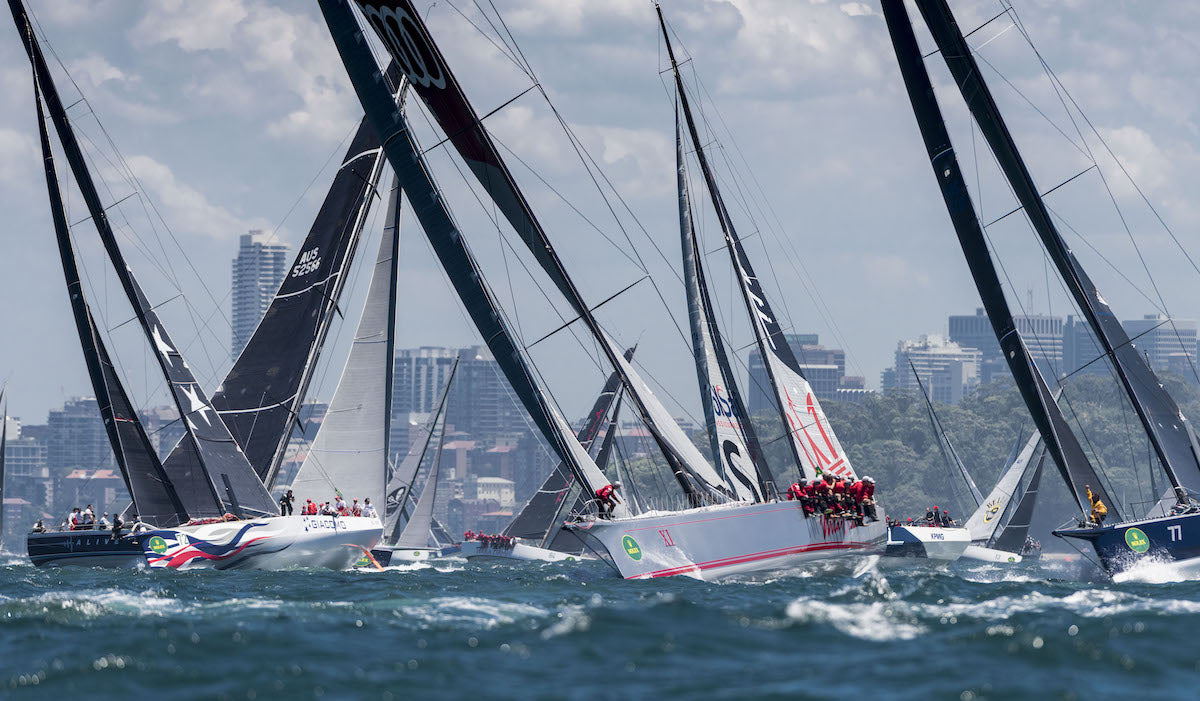
NAVIGATING THE ROLEX SYDNEY-HOBART
NAVIGATING ROLEX SYDNEY-HOBART
Meteorologist Chris Bedford Explains the Many Challenges of the Ultimate Offshore Experience
© Kurt Arrigo / Rolex Sydney Hobart
The Rolex Sydney-Hobart Race is one of the classic yachting events on the annual race calendar, arguably the most famous and difficult race taking place in the Southern Hemisphere. Its reputation is well deserved, giving all who enter it numerous challenges – not only in the level of competition the race draws, but also with many hurdles brought by Mother Nature. These environmental challenges take the form of fast changing and often strong winds, squalls, complex ocean currents, and potential for extremely rough, boat-breaking sea conditions. All that on top of what is often a more than 20 degree Celsius drop in air temperature from balmy Sydney to cool Hobart.
Navigators of the race watch typical wind patterns of the Australian summer: a semi-permanent high pressure to the east over the Tasman Sea, and another over the Great Australian Bight west of Tasmania. Air flows anti-clockwise around these high pressure systems, which means there is a tendency for northerly winds off the Sydney coast and southerly winds west of Tasmania.
Between these two high pressure areas there is normally an extension of the thermal low pressure from the hot interior of Australia, extending into NSW and pointing toward the Bass Strait.
The patterns described above represents the average – that is, what you get if you average the weather maps over a long period of time in the Australian warm season. However, the actual weather on any given day is the result of modulations on the average pattern and disturbances (weather systems) embedded within the larger scale.
SOUTHERN OCEAN CHILL
One such important and common disturbance involves the northward intrusion of cold air out of the Southern Ocean. When cold air pushes north toward Tasmania, the Bass Strait, and southeastern Australia, some very abrupt and severe changes can result. Ahead of the cold fronts which mark the leading edge of a cold push, winds typically build from the north along the coast. Sometimes thunderstorms can develop over the hot interior of NSW and move east into the course from Sydney and south to Green Cape. Such storms have generated spectacular waterspouts on the course – an encounter with which is not only memorable, but potentially very dangerous.
“Being ready to weather strong upwind sailing and very rough seas in the wake of a S’ly change are a must for any crew and boat taking on this race.”
As a cold front moves north and east across the race route, fast running conditions down the coast abruptly change to hard, very rough, upwind conditions. Not to mention the fact that squalls and much cooler air make sailing more difficult. These post-change encounters are a make or break point for some teams. Being ready to weather strong upwind sailing and very rough seas in the wake of a S’ly change are a must for any crew and boat taking on this race.
TRICKS OFF TASMANIA
Further down the track from crossing the Bass Strait to east of Tasmania, winds are no less challenging. Large ocean swells are common crossing the strait, and Gale or Storm force winds can occur – especially in the day or two following a front. Off Tasmania, winds can run the gambit from strong to exceedingly light. One certainty of sailing off Tasmania is that the wind will change. The weather patterns there are fast moving and can behave erratically. An area of no wind can exist within hundreds of meters of gale force gusts. Understanding how conditions will change and making a correct call at the last moment can make the difference in almost any team’s race.
SURF OR SWIM
Another important factor in the strategies for this race is often the East Australian Current (EAC). The EAC is a western boundary current similar to those found on the east coasts of most continental land masses around the world (Gulf Stream off North America; Brazilian Current off South America; Agulhas Current off South Africa, and; the Kuroshio off Asia). The EAC is a generally south-flowing current off the coast, typically extending from north of Sydney to the Bass Strait and off the east coast of Tasmania. While the current is always present in one form or another, its speed and position relative to the course can vary significantly. In addition, tight swirls or eddy’s are typically present in proximity to the main current flow, and can result in areas of rotating water over ten miles wide, often delivering the opposite of what a skipper may expect.
While the current doesn’t change much on a day-to-day basis – unlike the weather – it does vary over a period of weeks. Sometimes it is close to the coast and within reach of the fleet to take advantage of its southward flow. Other times, it is further offshore, and sailing out to it can be a gamble whether or not the favorable flow will be enough to offset the extra distance necessary to get to it.
There is also a potential significant downside to being in the current – even if it is within reach. When winds are blowing from the south, very large and steep waves can develop within the EAC which can, at a minimum, slow progress or, in the worst case, be boat-breaking. Anytime there is a southerly change and strong upwind conditions in this race, sea state within the EAC is a significant factor.
The crews will be closely monitoring the weather forecasts and EAC condition in the days leading up to the race. While the forecasts can be reliable, it is often the small differences that are more difficult to predict. That will combine with the level of seamanship on-board to determine how well a team does.
“Having a fast boat and sails are of course a bonus, but being ready and able to handle whatever the weather and sea brings will make the difference.”
Chris Bedford is a well known sailing meteorologist and has advised many professional teams on inshore and offshore race routing, including the Abu Dhabi Ocean Racing 2014-2015 Volvo Ocean Race team. Read more from Chris at sailwx.com
Contact your local North Sails experts to get your sails inspected and ready to take on the big race!
READ MORE
READ MORE
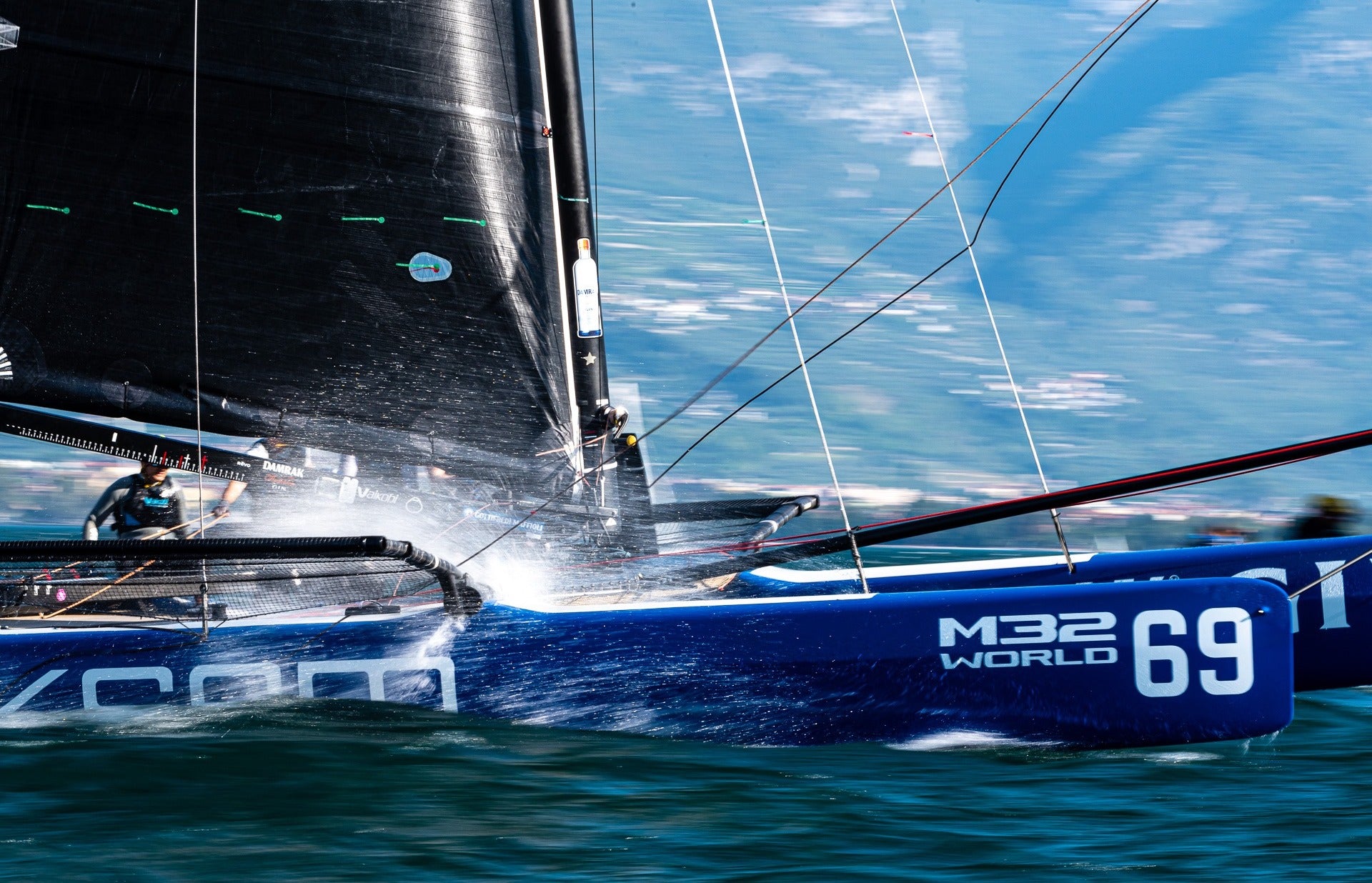
M32 CLASS SAIL CONSISTENCY
M32 CLASS SAIL CONSISTENCY
Quality Assurance Production With North Sails
📸Drew Malcolm / M32 World
Consistent Shape
How does North Sails make sure that the new M32 sails are consistent in shaping?
The process starts with the layout. For the 3Di mainsail, each sail is machine-taped from the same file so it is identical. For the paneled gennaker, sails are cut on a laser plotter using the same cut file, in a humidity- and temperature-controlled room.
3Di sails for one design classes are molded to the exact same shape. When more than one sail is made at a time, they are put on the mold one right after the other. Assembling paneled sails is done by the same experienced team, with each member of the team specializing in one specific job (eg., sticking the seams).
The level of detail in the molding is such that when repeat sails are made at a later date, the same mold is used and the same shaping file is used to adjust it. This means that even if a sail is made 6 months later, it is molded to the same shape.
📸Raphael Demaret
Consistent Finish
How does North Sails make sure that the new M32 sails are consistent in finishing?
To ensure that finishing on all the sails is the same, the full order of sails is added to the same work ticket and once again a team of experts completes the job. The work ticket specifies every detail of the finishing, including the length of the webbings, the position of the batten boxes back from the luff, and the location and size of the reef patches. It even specifies the stitching pattern and thread.
For example, a set of templates locate the batten boxes in exactly the same place on the sail. This ensures that the boxes are the same distance back from the luff and at the same angle, on every single sail.
📸Raphael Demaret
Consistent Size
How does North Sails make sure that the new M32 sails are consistent in sizing?
Once the sails are finished, they are all measured to make sure they’re within class tolerances. The rare sail that doesn’t measure correctly is either fixed or rejected. Measurements include perimeter dimensions, girths, batten lengths, batten boxes, luff offsets, and several other details.
Once sails pass inspection, they are packaged and shipped to the distribution site where they are checked again. The battens are installed before they are shipped to the end user.
Update for 2020: While the luff lengths for all the sails are identical, the specifications for luff tape and bolt rope tensions are going to be further refined to be within 5 kg of each other. Additionally, the batten pocket end finishing is going to be changed from cuben fiber to 3Di utility cloth for smoother finishing and increased durability. At the request of the class, the sail shapes are going to remain unchanged.
📸 Drew Malcolm / M32 World
READ MORE
READ MORE
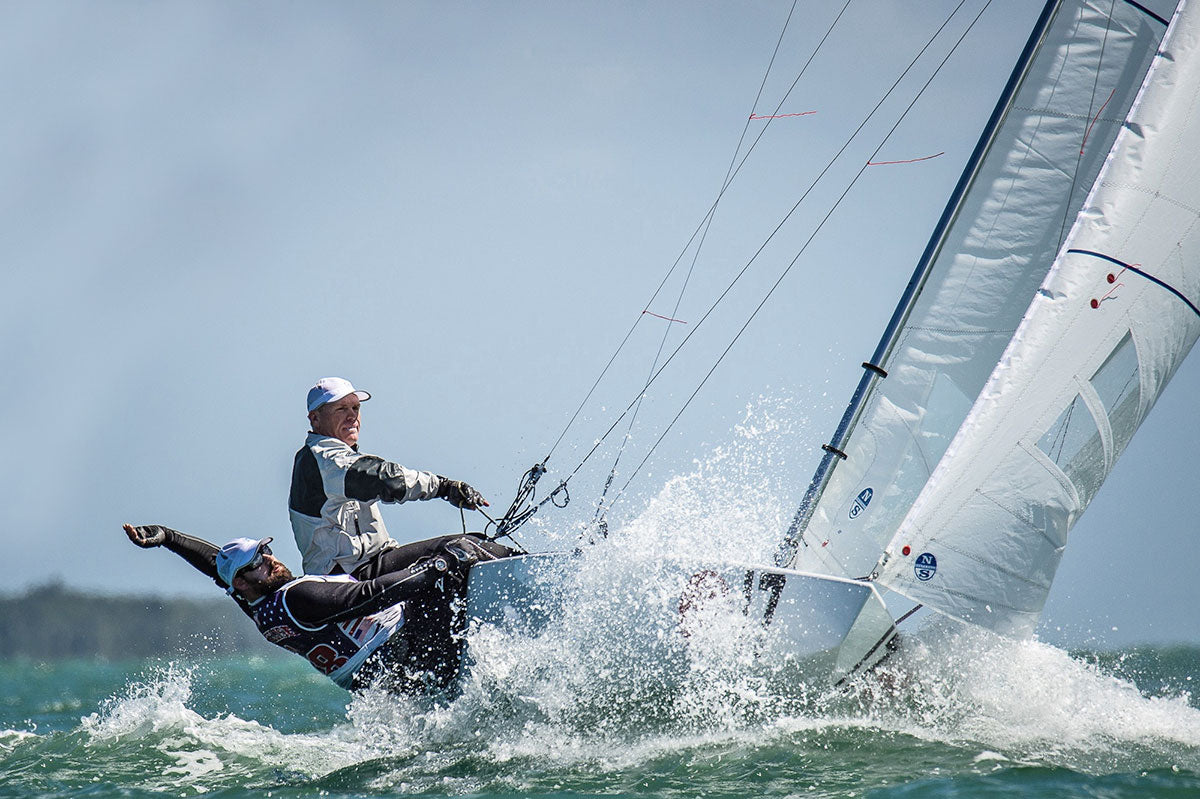
WATCH THE STAR SAILORS LEAGUE FINALS
WATCH THE STAR SAILORS LEAGUE FINALS
Don’t Miss The Action Streamed Live From Nassau
📸 Martina Orsini
The elite of the sailing world will go head-to-head tomorrow in Nassau, Bahamas for the much anticipated Star Sailors League (SSL) Finals.
The first four days of racing act as qualification rounds for the 23 crews, with the competition going up a notch on Saturday for the knockout stages. These single races decide who survives, with the first warning signal for the Quarterfinals at 11:00am. Later that day, the Final will see the last four teams compete, with the first to finish claiming the $200,000 prize.
Saying this is an exciting line up would be an understatement. A selection of big name sailors make up each team, including 5.5 Metre World Champion and North Sails Expert Christoph Burger, Two-time Olympic Star medallist and Beijing 2008 champion Iain Percy, and Volvo Ocean Race winner and America’s Cup veteran Paul Cayard.
Live Stream The Action:
The racing will be live streamed on the SSL Facebook with expert commentary and drone footage.
SSL Website and Race Results:
Latest press releases, race news and media can all be found on the dedicated race minisite.
Entry List
Event Schedule
Race Videos
Race Photos
READ MORE
READ MORE
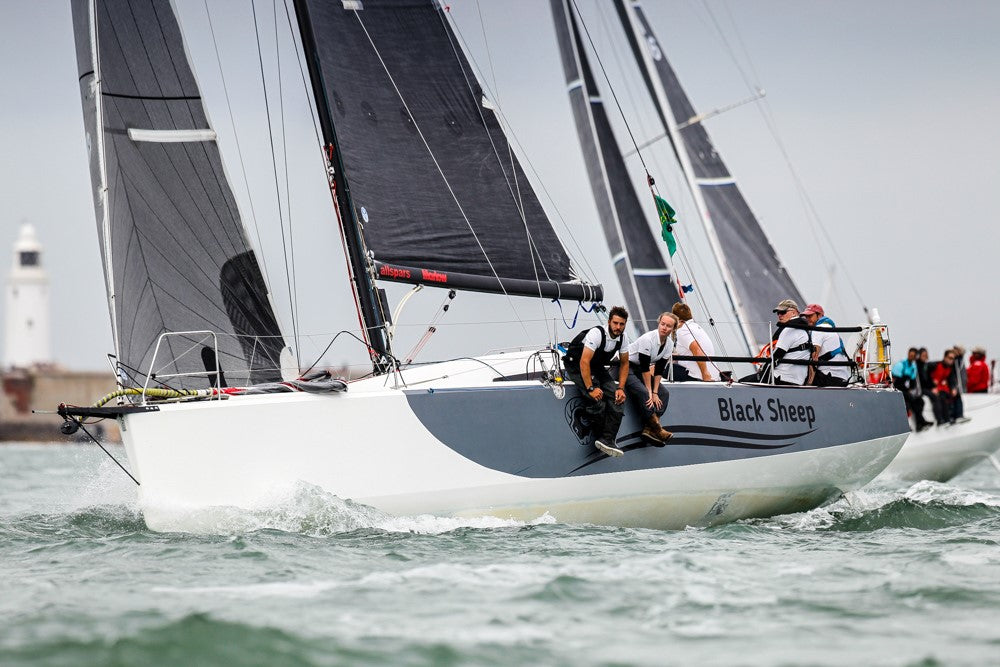
BLACK SHEEP'S 10,000-MILE SEASON FINISHES ON A HIGH
Trevor Middleton’s team onboard the Sun Fast 3600 Black Sheep celebrated a busy and rewarding 2018-2019 offshore racing season at the Royal Ocean Racing Club (RORC) Annual Dinner and Prize Giving in London. As well as picking up first place in IRC Overall, the team won five other awards including Navigator and Consistent High Performance.
The RORC Season Points Championship comprised 14 challenging offshore races at locations including the Caribbean in Antigua and Grenada, Lanzarote, Malta and the Netherlands. Missing just the Isle of Man Race and the Cervantees (due to the ship transporting the boat breaking down), Black Sheep very much earned her place at the top of IRC Overall.
We talked with boat owner Trevor Middleton about their season success and when asked which race and venue was the highlight, there was little hesitation: “Definitely the Transat Race where we had all we could want – a really good race with fantastic downwind conditions. We averaged 200-mile days and even covered 240-miles one day, finishing the race just under 17 days. With regards to venues, what is not to like about leaving from Lanzarote and arriving in Grenada!’’
Naturally, the five-strong crew were slightly apprehensive about the Transatlantic Race on a 36ft boat, but three of them had been on a Clipper in the Southern Ocean in gusts of 86 knots so they were fully aware of what the ocean could serve-up. Trevor says “The feeling of satisfaction at the end of that race was immense.’’
Having started sailing 10 years ago, 26-year old skipper Jake Carter met most of the crew through the 2013-2014 Clipper and Rona Sailing Project. This year was Jake’s first full campaign with Black Sheep, “sucked in’’, he explains, “when Trev announced he was going for some trophies in 2019!’’
The team collecting their awards at the RORC Annual Dinner and Prize Giving in London 📸Sportography.tv
Rob Craigie and Deb Fish’s Sun Fast 3600 Bellino was Black Sheep’s main rival throughout the year. We were interested to hear if Trevor felt they had an advantage or disadvantage being two-handed: “It varies by race; for a short race in lighter winds then I think two-handed crews have the advantage, whilst in longer, windier races (like the latter part of the Middle Sea), I think fully crewed boats are favored. However, I don’t think it always favors one or the other, especially as the boats have slightly different set ups – Bellino runs with symmetric and we run with asymmetric, which again hands different advantages for different races.’’
After buying the boat in 2016 with a plan of going for the overall win in 2019, the team focused their efforts in the first two years learning what worked best on the boat. “Good attention to detail helped us keep consistently good results this year,’’ Trevor explains, “as well as having a consistent, hard working crew and keeping the boat in top condition to reduce the risk of retirements. Jake did a great job of keeping us on our toes!’’
What are your key takeaways after the season? “Persistence – when all looks lost, don’t give up! We can also confirm that the 3600 is a great boat (we were thinking of changing but have now decided not to). Lastly, we have learned firsthand that nothing comes easily, you have to keep working at it.’’
Trevor confirms the sails performed well on the whole, despite some abuse from the crew. “The 3600 is very good at reaching’’ he says. “Our fastest leg had to be running downwind in the Transat with the A2+ pushing out 200+ mile days.’’
“Our fastest leg had to be running downwind in the Transat with the A2+ pushing out 200+ mile days.’’
The team’s Sails Expert, Ronan Grealish, explains “It is a testament to the durability of North 3Di Endurance that Black Sheep have used the same set of sails for three hard seasons, topped off in 2019 by their RORC season win. North Sails are looking forward to optimising Black Sheep for next season, with some new 3Di Raw sails being added to their inventory.’’
“It is a testament to the durability of North 3Di Endurance that Black Sheep have used the same set of sails for three hard seasons, topped off in 2019 by their RORC season win.’’
Jake comments “2020 is a real opportunity to set Black Sheep up well and we aim to apply what we have learnt this season to defend IRC3 and get some clear wins. After some great advice from North on our Superkote A2 in the past, we are now taking advice on 3Di Raw. The retained strength and weight saving of 3Di Raw is a big plus.’’
“The retained strength and weight saving of 3Di Raw is a big plus.’’
After completing a 10,000-mile season (including deliveries), it is time for both the crew and the boat to reset for next year, with Black Sheep having some repairs and refits to get her back where she needs to be. The plan for next season is still being developed, but Trevor hopes to shift his concentration on the upcoming RORC season.
Congratulations to Trevor Middleton and his crew for an epic, jam-packed year of superb racing. We look forward to seeing you on the water next year.
Black Sheep was equipped with an Offshore 3Di Endurance 780 Mainsail and a reefable 3Di J2+, Xi Code Zero, J1.5 NorLam Sport, J3+ reefable NorDac Radian, A2 Asymmetric in Superkote 60, A2+ and A5 in NorLon and an A0 in Norlam Code Xi.
Light winds and bright sunshine during the race from Cowes to Dieppe for the Morgan Cup 📸Rick Tomlinson/RORC
READ MORE
READ MORE
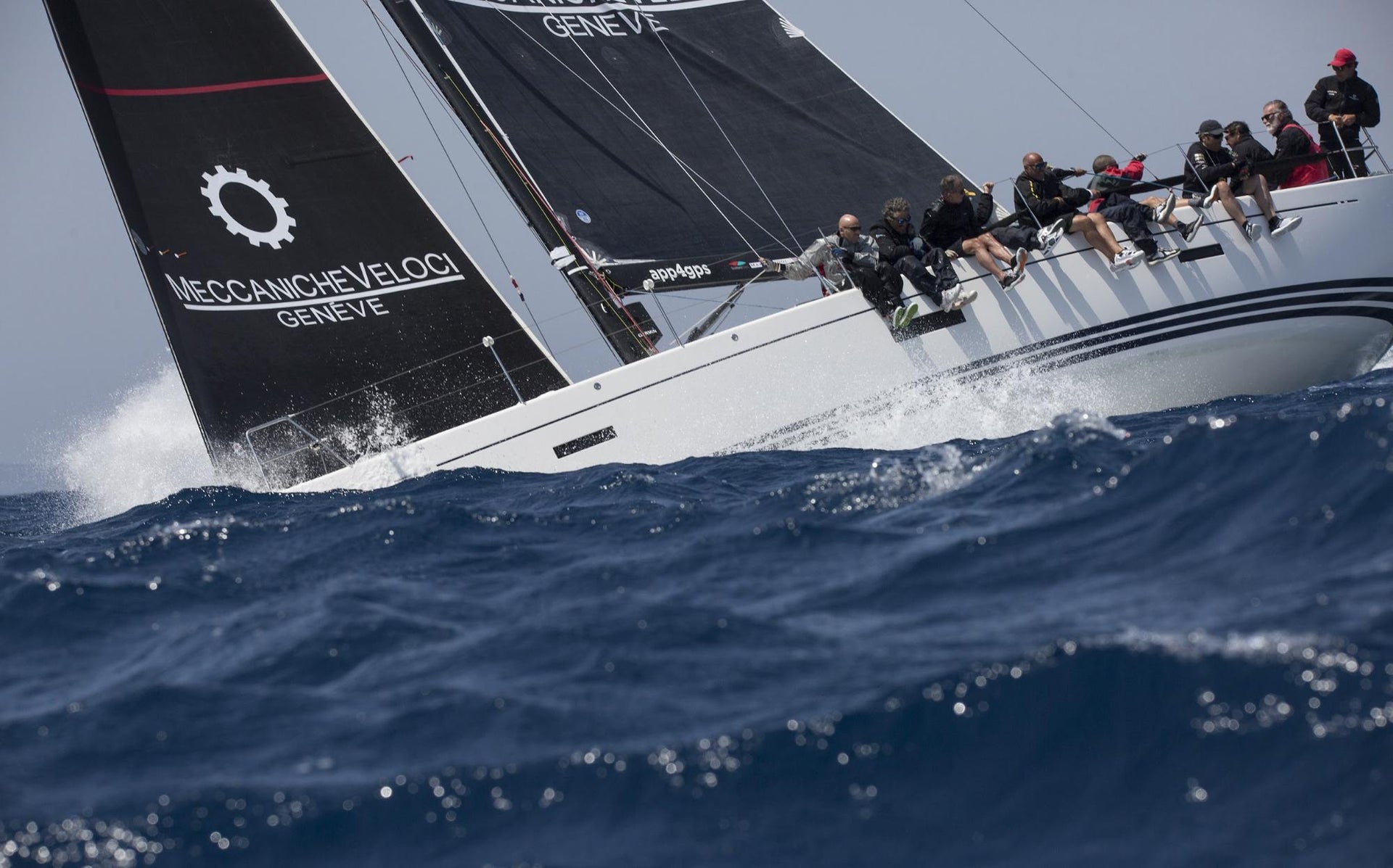
ORC/IRC WORLD CHAMPIONSHIP 2020
ORC/IRC WORLD CHAMPIONSHIP 2020
Newport’s Hottest Event Of The Season
📸 Regate.com
Calling all weekend warriors! The New York Yacht Club in Newport, RI, USA will be hosting the ORC/IRC World Championship this year, on September 25th – October 3rd. This is the first offshore championship to be held in the United States since 2001.
“Any time a World Championship of this stature comes to Newport, it is special,” explained North Sails President Ken Read. “Preparation is already beginning to happen for locals and traveling teams alike. Having the ORC and IRC working together is key for handicap sailing around the globe, and you can be sure that our North Sails community and service team in Newport will be ready to support all teams arriving for this fantastic Fall 2020 event.”
📸 Regate.com
The best part about this racing platform? Competitors are divided up into three classes, so each boat will only be competing with boats that have a similar setup, size, and speed. Three divisions consisting of many kinds of boats, meaning three world championship titles are up for grabs. Looking back to the 2018 Offshore Worlds at The Hague, competitors from all over the world racing everything from a GP26 to J/109s, Swan 42’s to 57-footers. This event is truly for anyone; club racers and cruisers, and the course offerings are fit for any program with any level of crew experience.
This year the championship will also bring in the new Melges IC37 class, and from the current entry list, we’ll get to see a variation of boats between 27-52 feet. Teams from the USA, Canada, Great Britain, Italy, France, and Germany are already signed up and ready to represent. Competitors can expect 2-3 offshore or coastal style races, and 6-7 inshore races to complete an exciting six days of racing in Newport, RI, the sailing mecca of the USA.
“Offshore sailing is part of the DNA of the New York Yacht Club,” said Commodore Philip A. Lotz. “Our waterfront clubhouse at Harbour Court combined with Newport’s tremendous sailing conditions and extensive marine infrastructure, provide what we feel is one of the greatest venues for offshore racing. The Club is very excited to welcome the world to our hometown for the 2020 ORC/IRC World Championship.”
📸 Regate.com
This event is the primetime opportunity for club racers worldwide to experience the best racing in the crowd-favorite format, and it’s open to all. Up to 150 teams can register to compete and represent their respective countries for a chance to snag one of three world championship titles. Amateur Corinthian prizes will also be handed out in each class to those that apply. Registration closes September 10th, 2020. Extend your fall racing season in Newport, RI this year. The 2020 ORC/IRC Worlds is going to be the main event. Get your team ready, and get your game faces on!
Our North Sails Certified Service team will be onsite to support the fleet with overnight sail repair service throughout the week. We’ll see you out there!
Learn more about the event and view registrants here. There are 42 boats already signed up and ready to rumble. Are you on the list?!
📸 Regate.com
📸 Regate.com
📸 Regate.com
READ MORE
READ MORE
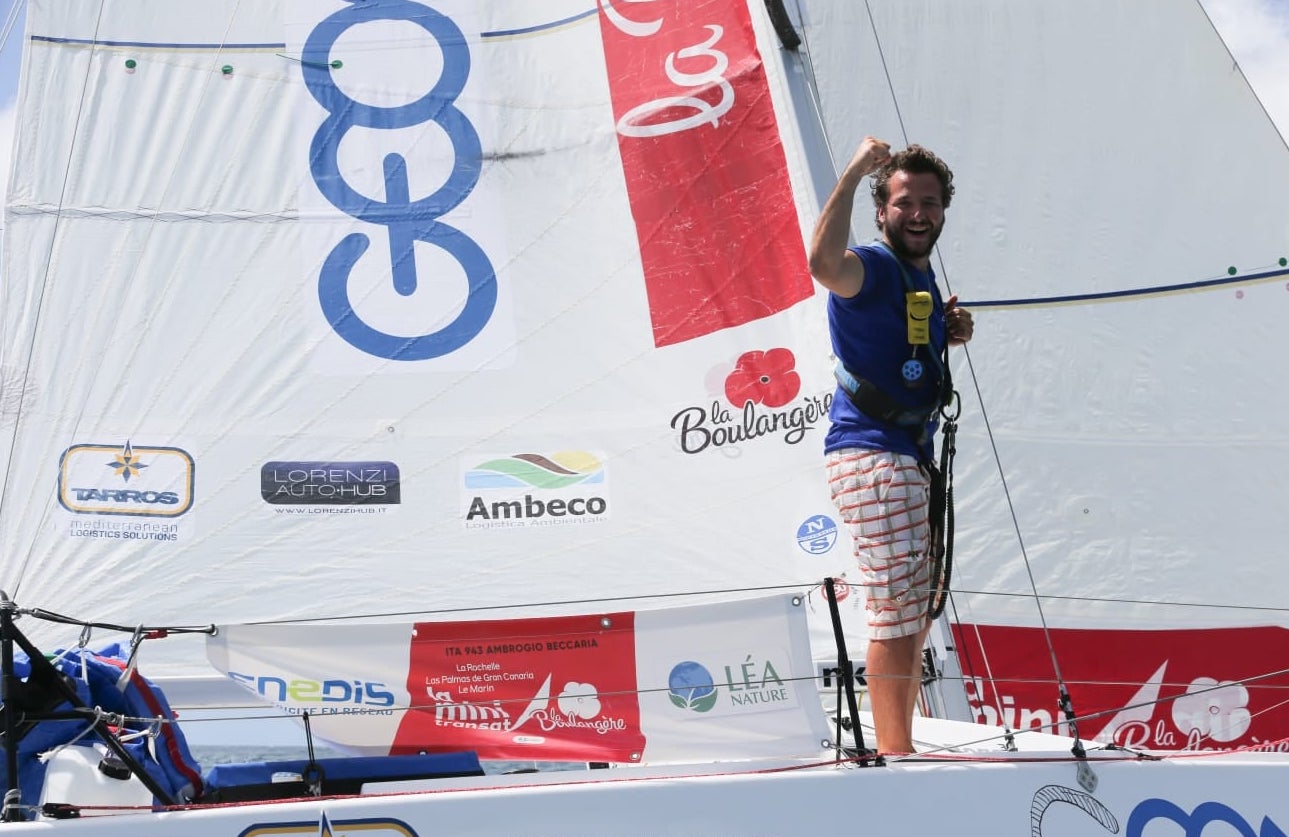
#NSVICTORYLIST: MINI-TRANSAT LA BOULANGÈRE
#NSVICTORYLIST: MINI-TRANSAT LA BOULANGERE
Client Ambrogio Beccaria Wins MiniTransat Cruising Division
📸 Christophe Breschi Photography | MiniTransat 2019
Italian Ambrogio Beccaria is a twenty-eight year old nautical engineer, and he has completed the Mini-Transat after 13 days, 1 hour, and 58 minutes to win the cruising division and finish third overall. Ambrogio, onboard his Pogo 3 Geomag never lost command of his fleet, and he even found himself in the lead overall after choosing an impeccable racecourse. We interviewed Ambrogio after the finish to find out more about his program and why he chose North Sails to power his vessel across the ocean.
“Sail development performances and speed are the part I’m most interested in these regattas,” he explains. “That’s also why I chose to sail a cruising boat because they are simple, but they are the ones where you can develop many aspects, including sails. I had also used North Sails in the previous Mini-Transat, and after moving to Brittany, France, I was able to work constantly with the sailmakers.”
How did you develop your sail program?
“After the first few miles with the first sail wardrobe, we started working on a second generation. Collecting photos and videos, we discovered some very interesting things. My boat is swift, but its aft shape has something like a motorboat deflector. When the sea state is up and from behind, it tends to put the bow in the water and can become dangerous. We designed a much flatter spinnaker so that I could sail at a higher angle. That choice turned into a winner!”
What inventory did you carry?
“Three gennakers, a Code 0, and a small heavy wind spinnaker that could be very reliable and fly as long as possible. With more than 20 knots of breeze, I can sail deep, down to 150 degrees TWA. For the mainsail and genoa, we used 3Di polyester because the mainsail must be Dacron, and the jib cannot have exotic fibers.
For the Solent jib, 3Di was a revolution—seven boats in the first ten hoisted this sail. I didn’t choose a square head; some had a sail so large in the head that they had to lower it by 40 centimeters to tack. Compared to my setup, I would say that they did not have good VMG upwind.”
📸 Christophe Breschi Photography | MiniTransat 2019
How did you manage the sails?
“At the start, I risked breaking the bowsprit. After that, I went back to what my coach Tanguy Le Glatin said; be the first to reduce the sails when there is too much wind, and then the first to hoist the sails, before the others. I pushed the boat hard with my bigger spinnaker, and it was there that I got in front of the prototype boats.”
Are you satisfied with your results? Is the boat that won the prototype class that much faster?
“On paper, the prototype which won his class goes much faster. But the prototypes are a lot less reliable. As soon as the conditions get tough, the skipper is often fighting to save the boat. Sailing at 20 knots makes you fear for the bigger blows you take on the hull. It’s complicated to know when to give it that gas and stay powered up, and when not to.”
What are your impressions of the prototype that is equipped for foiling?
“The prototype has some very special T-shaped foils with supporters on the rudders, and the original idea was to fly completely. Unfortunately, he had a problem with the forestay and was unable to push as hard as he wanted. They ended up in fourth, but very far from the podium. The DNA of the mini-prototype class is still experimental. The idea is to facilitate the foiling, which is now limited by the maximum width of three meters in port, so the foils must retract completely. Once this limit has been removed, it will be easier to push towards performance, as the Imoca boats do.”
What are your plans for the future?
“My current plan for the future is getting involved in a Class 40 project and competing in the 2023 world tour. I’m interested in the construction of the boat and will follow this new project personally. I’d love to succeed.”
Learn more about Ambrogio’s Geomag. Learn more about Ambrogio’s sailing success.
READ MORE
READ MORE





















